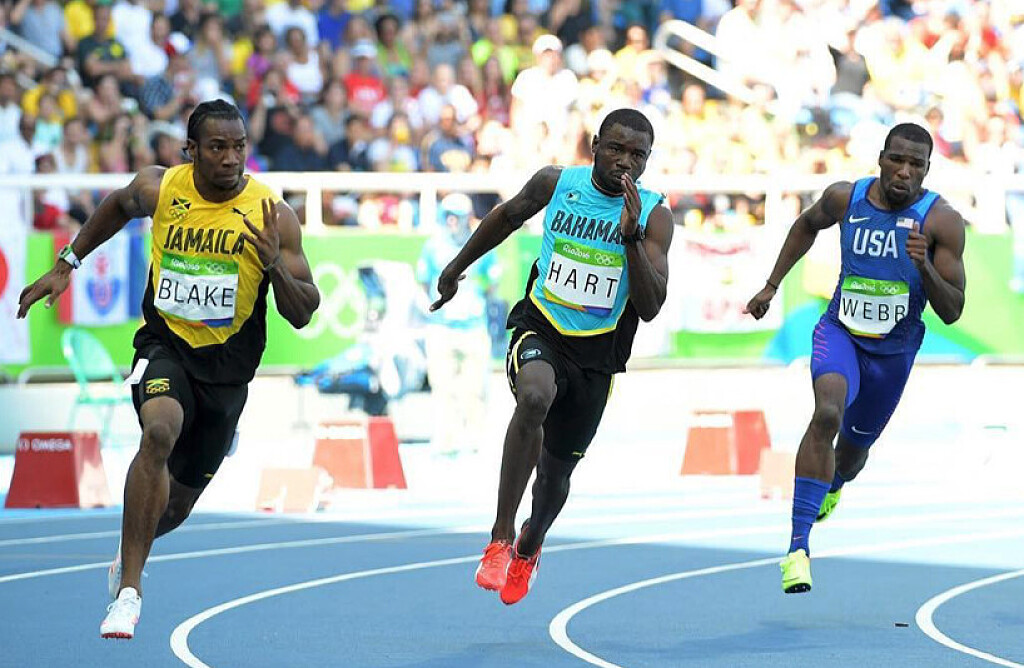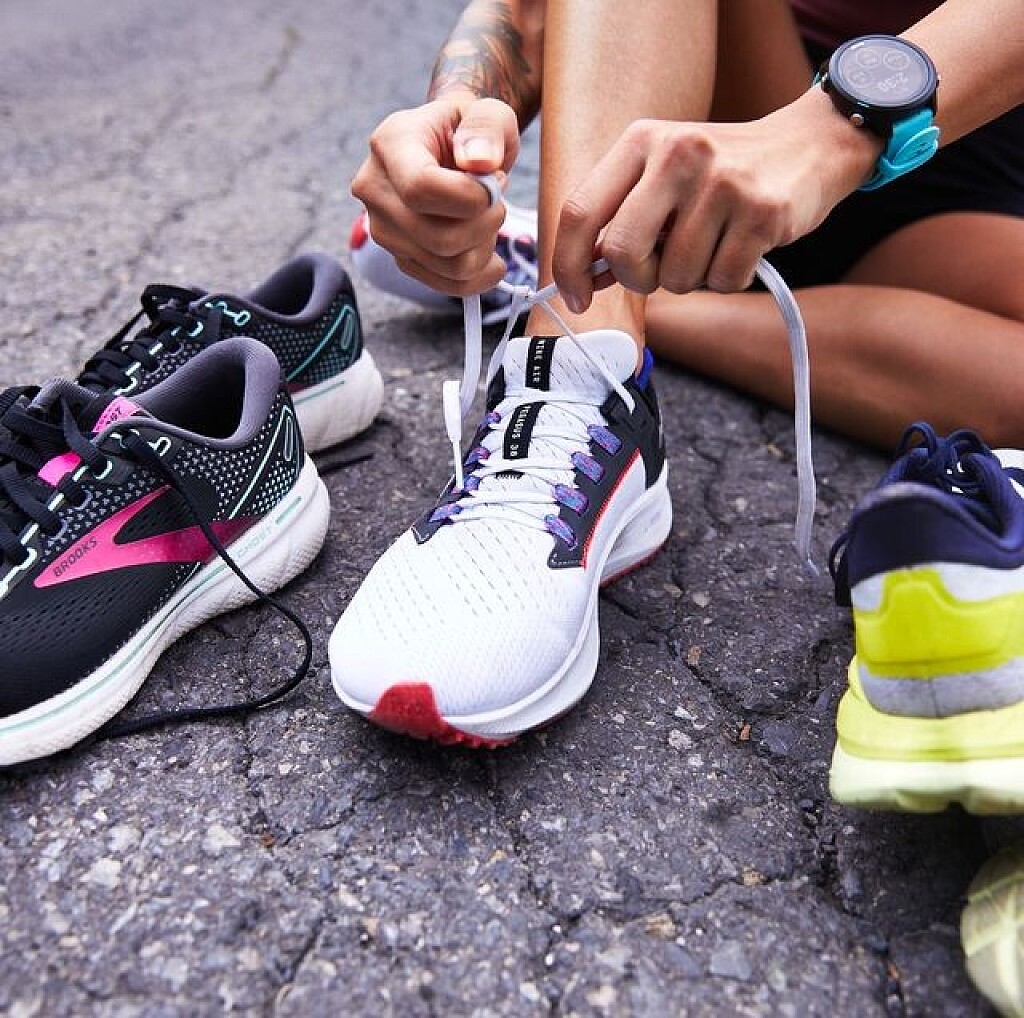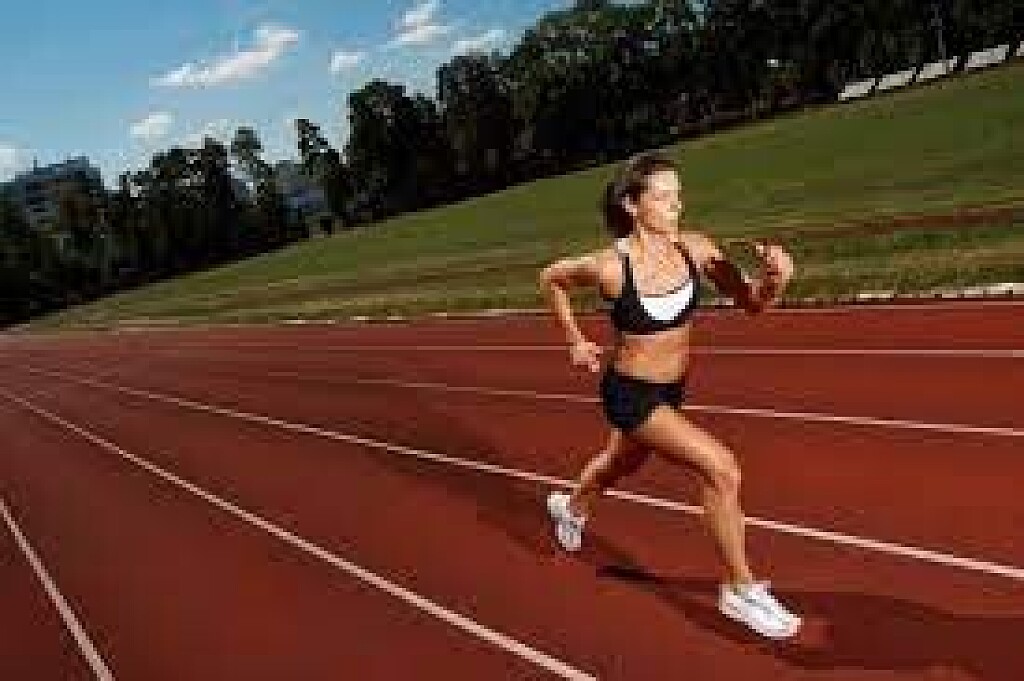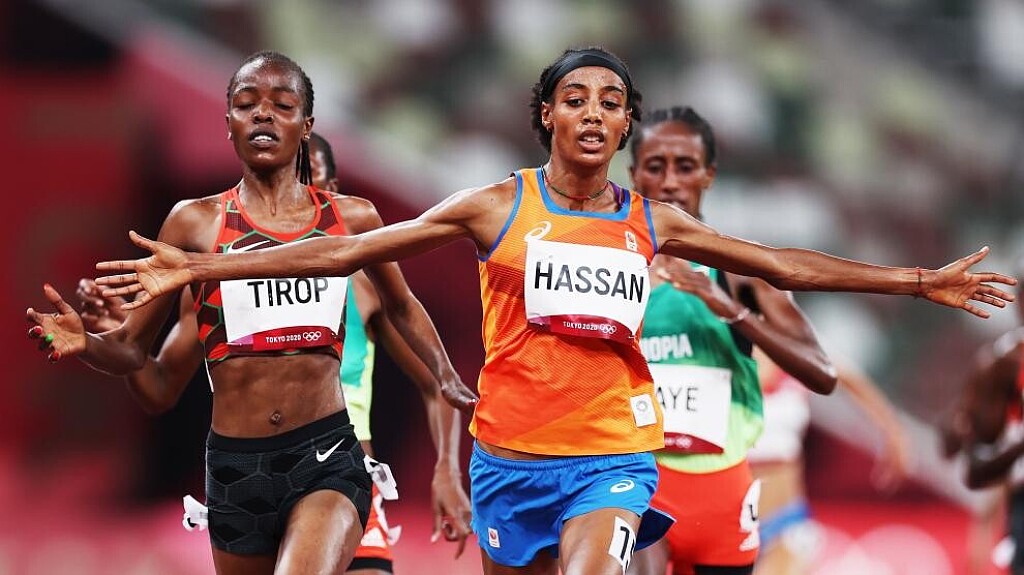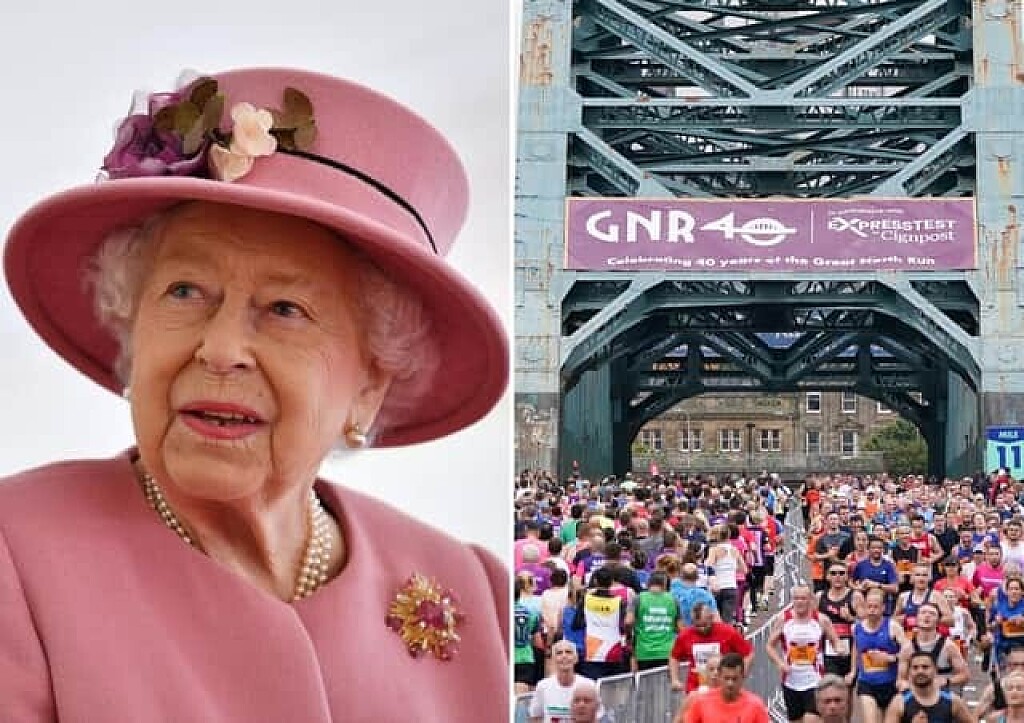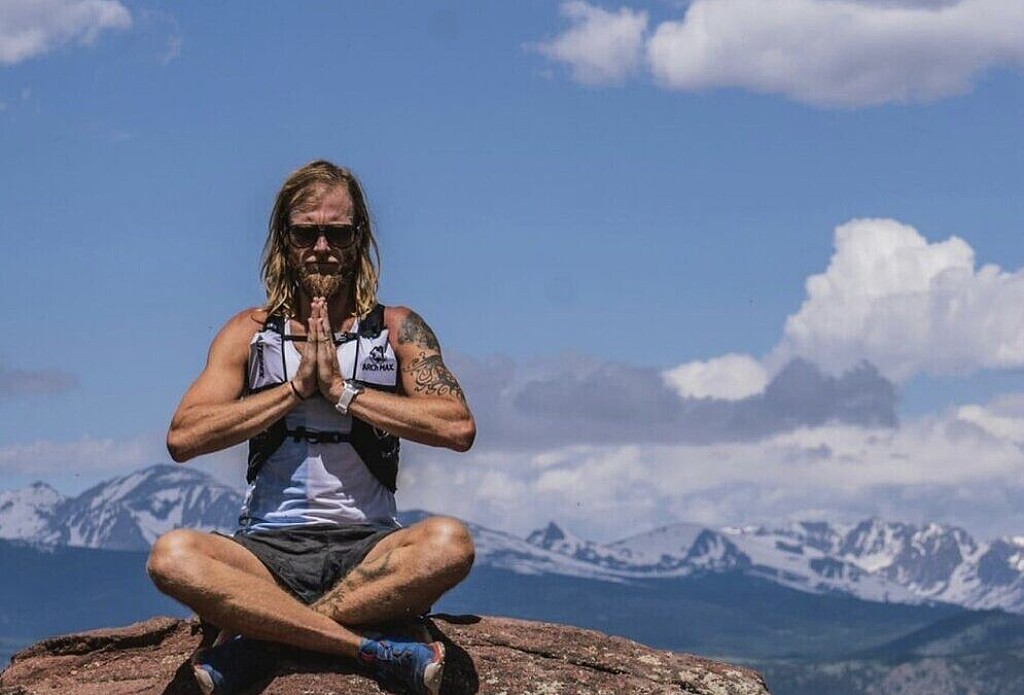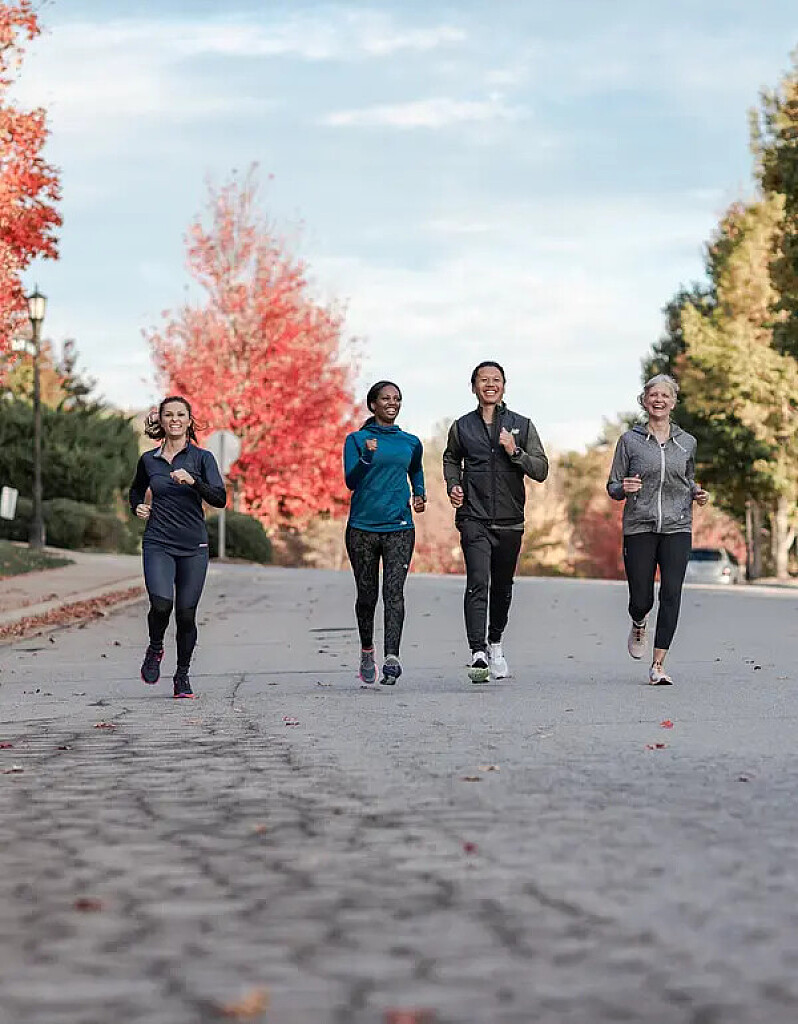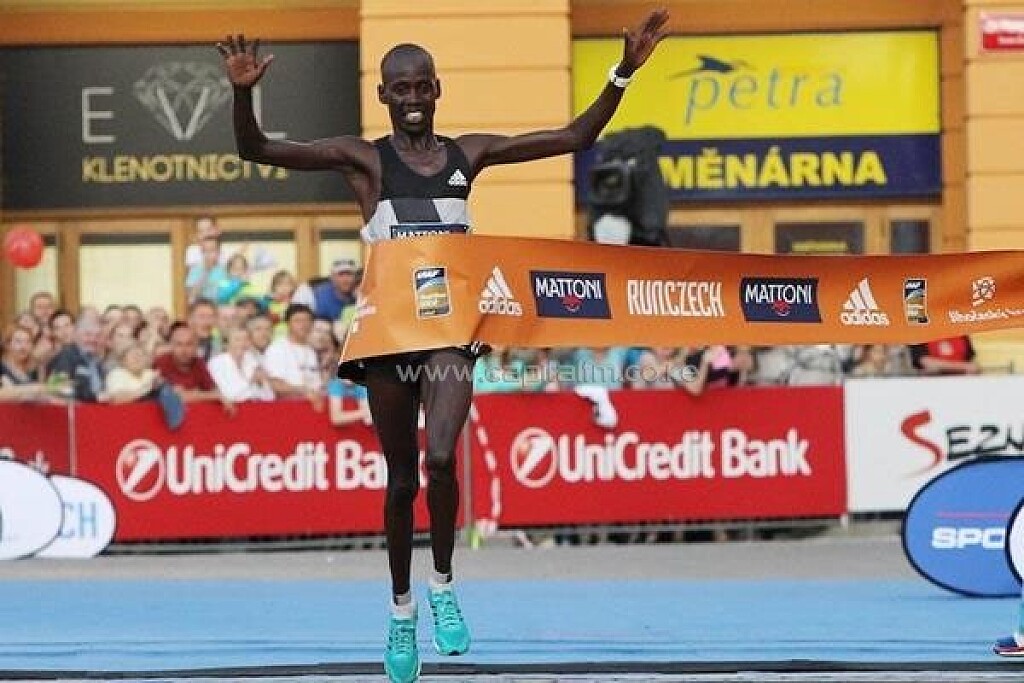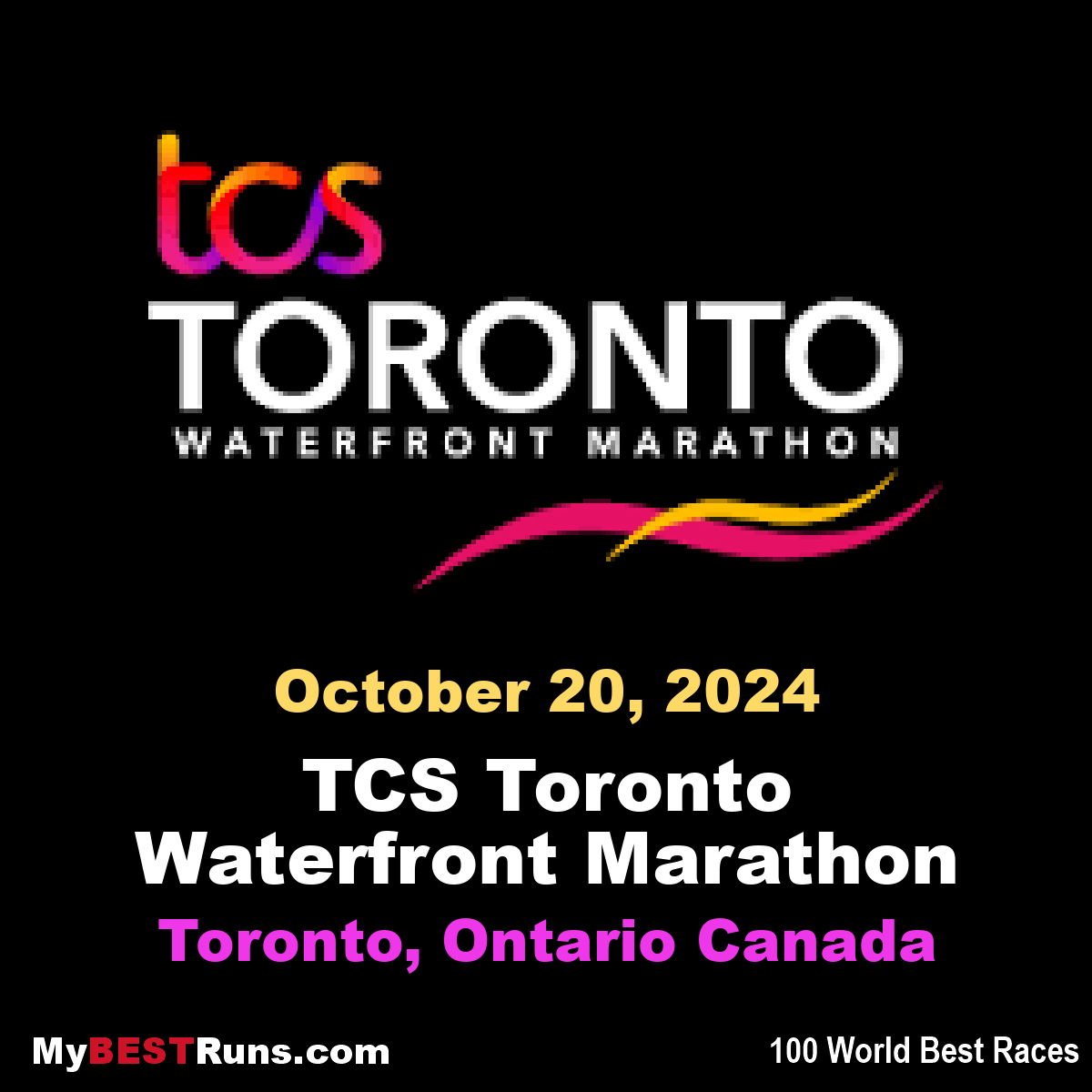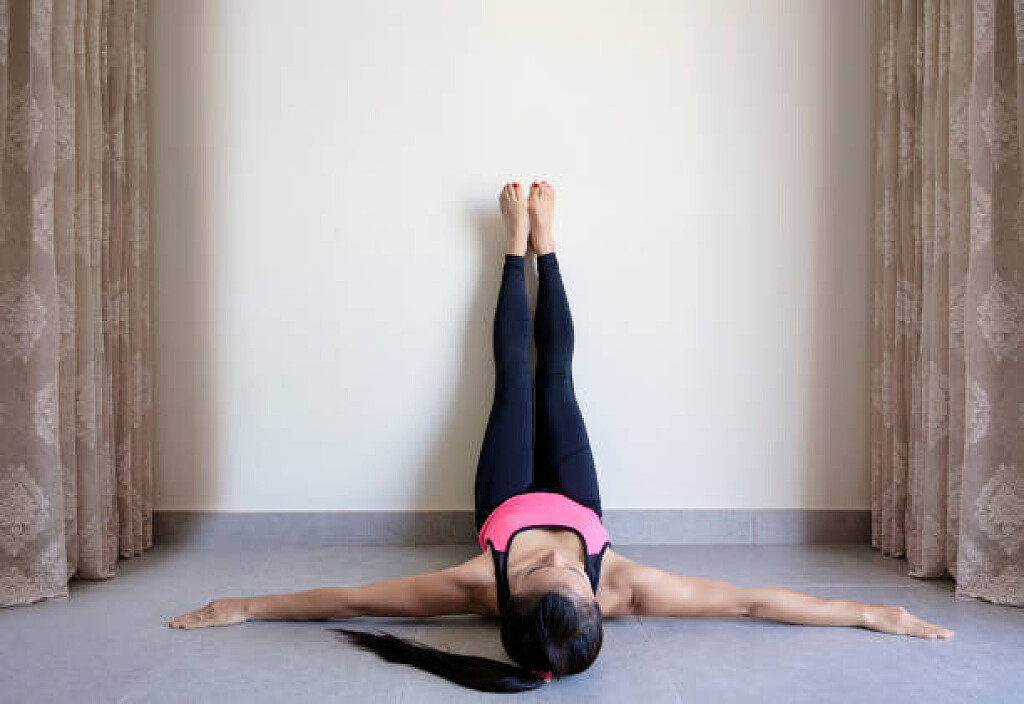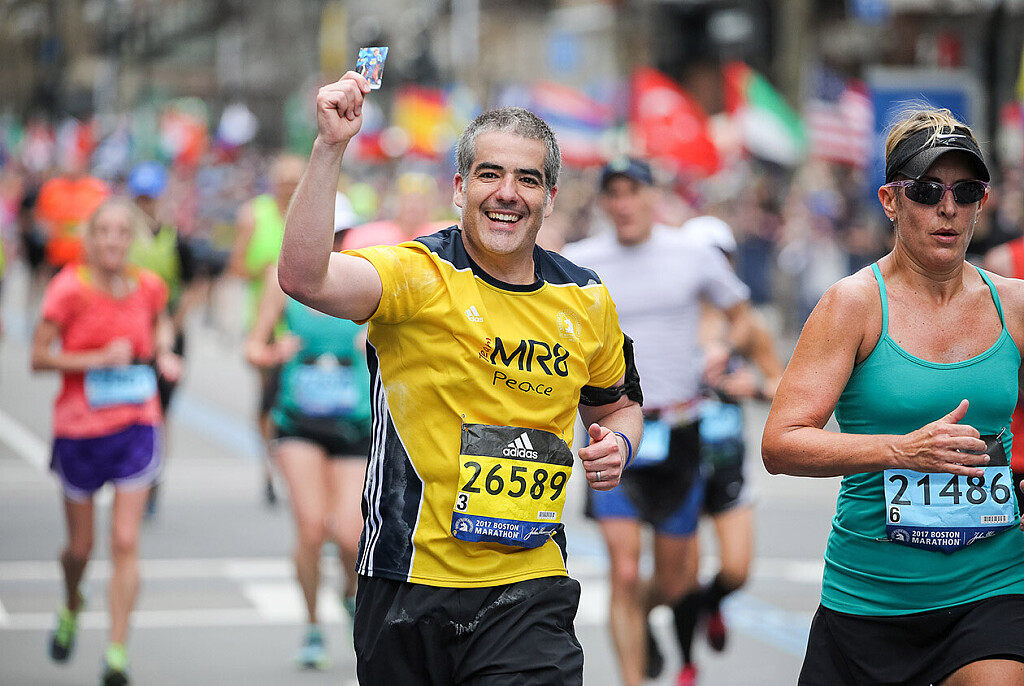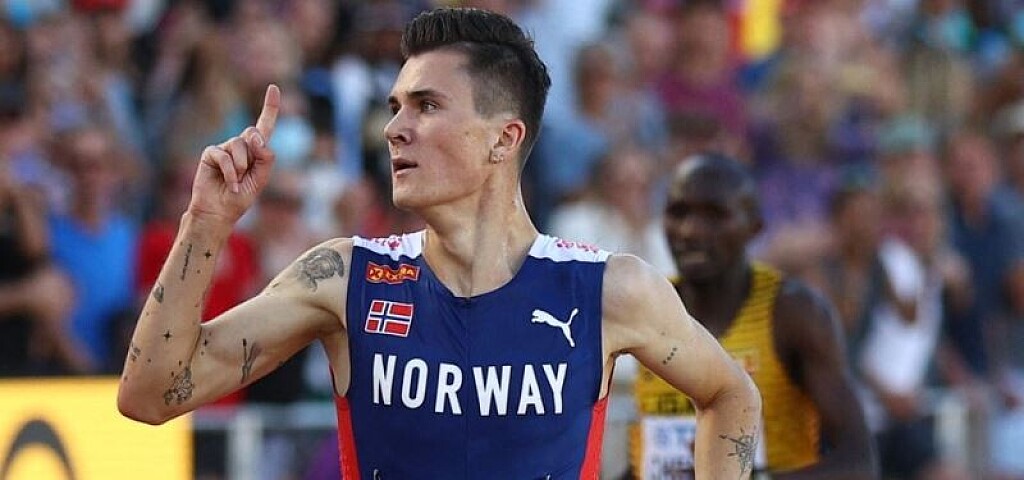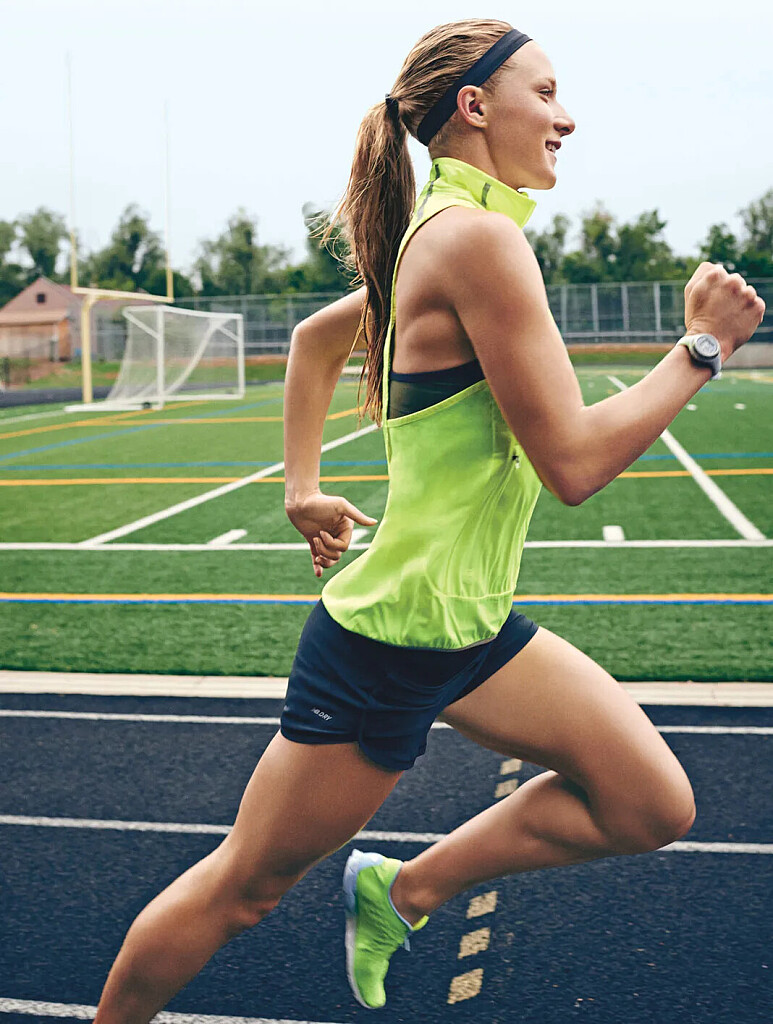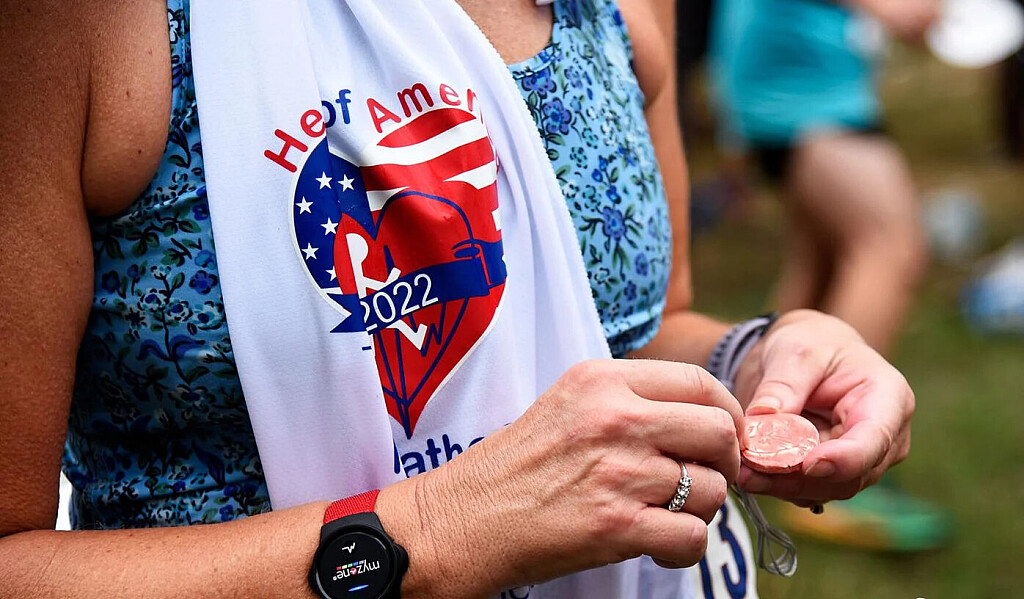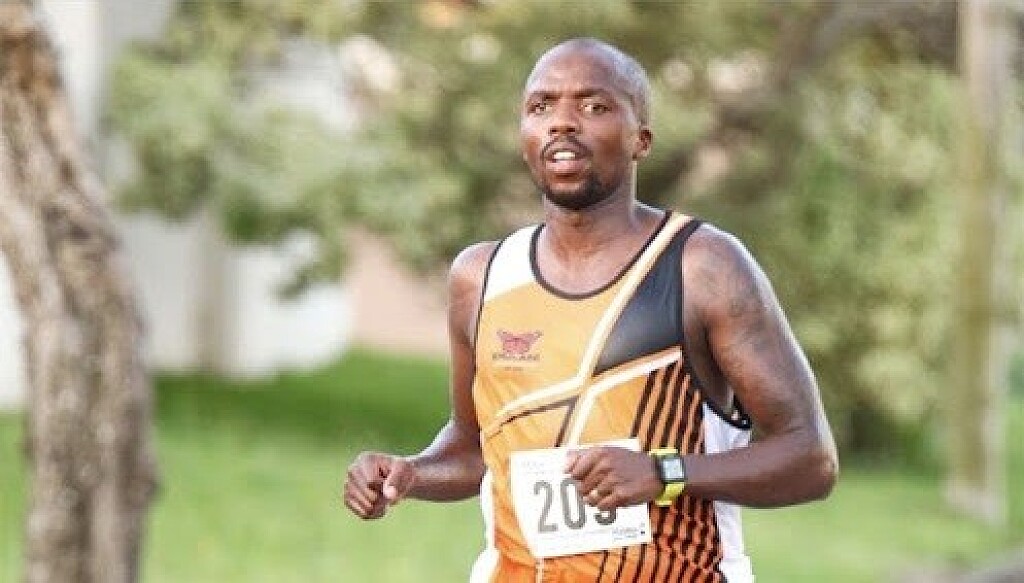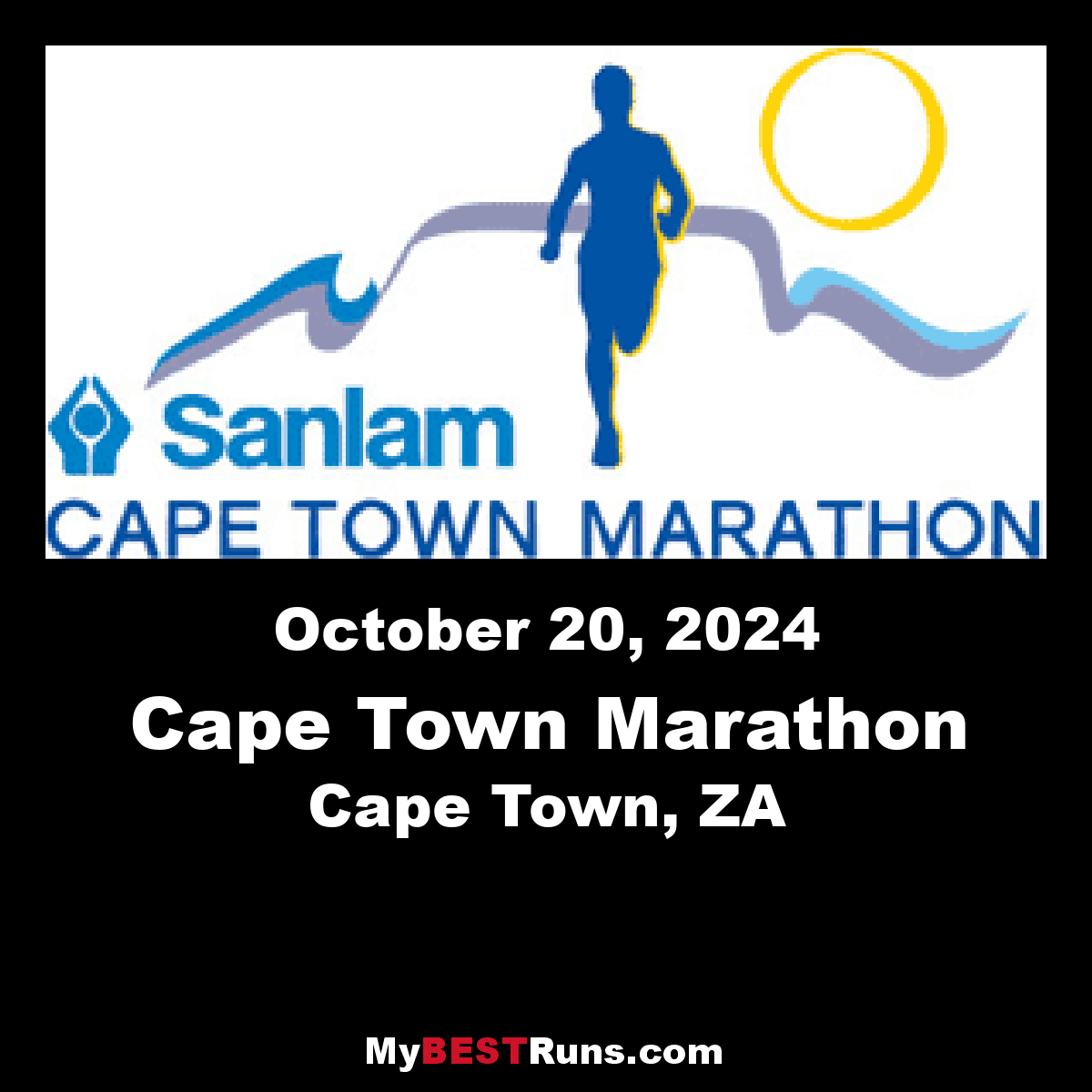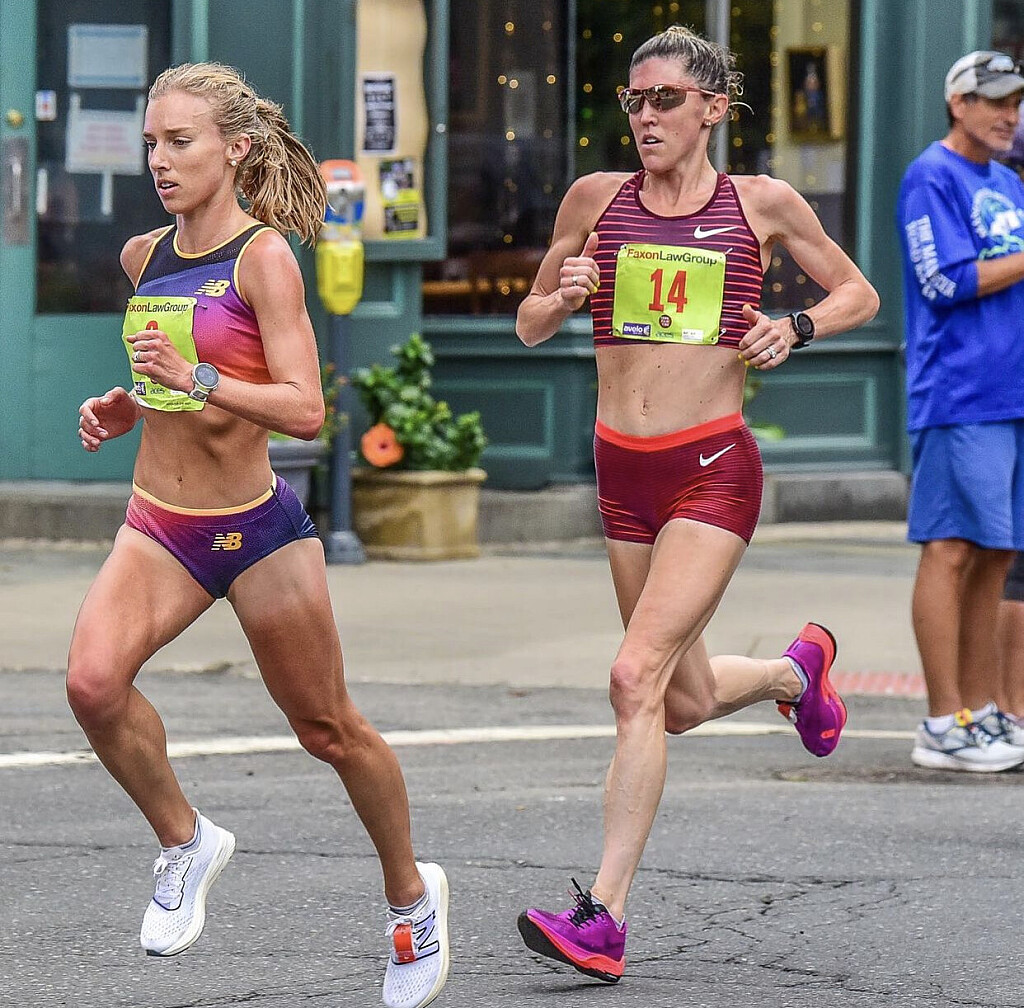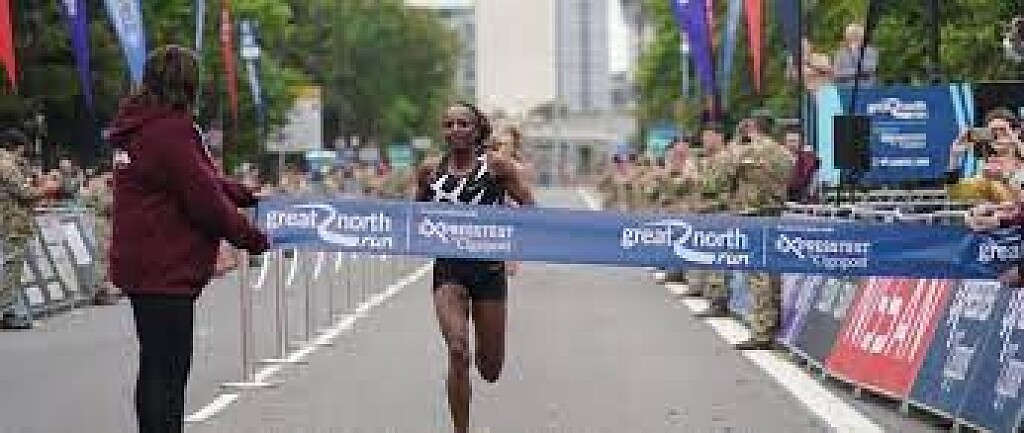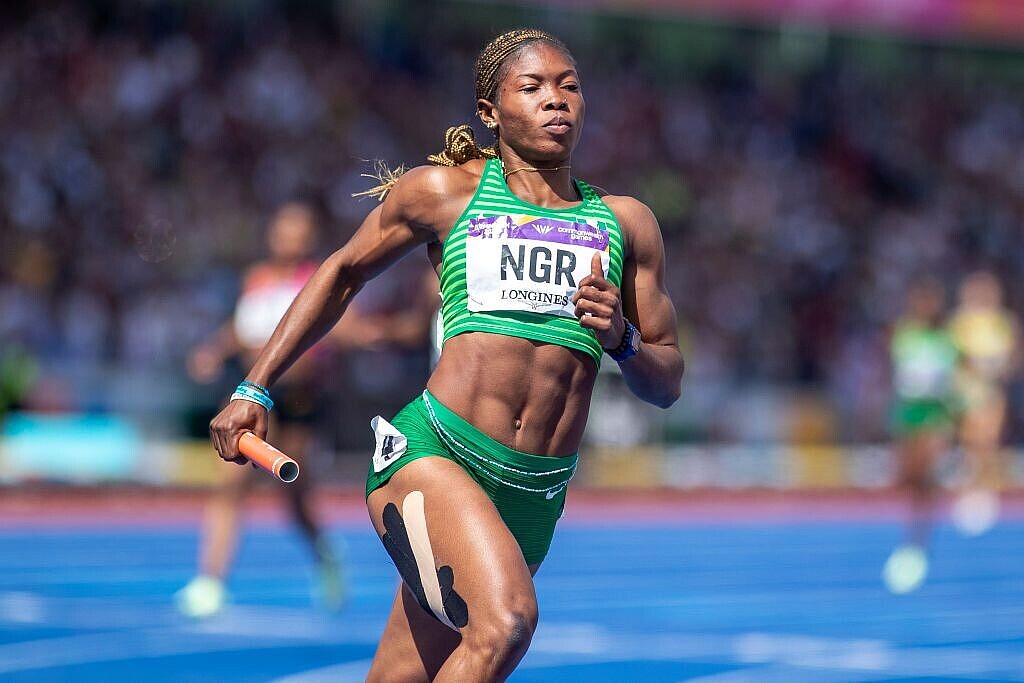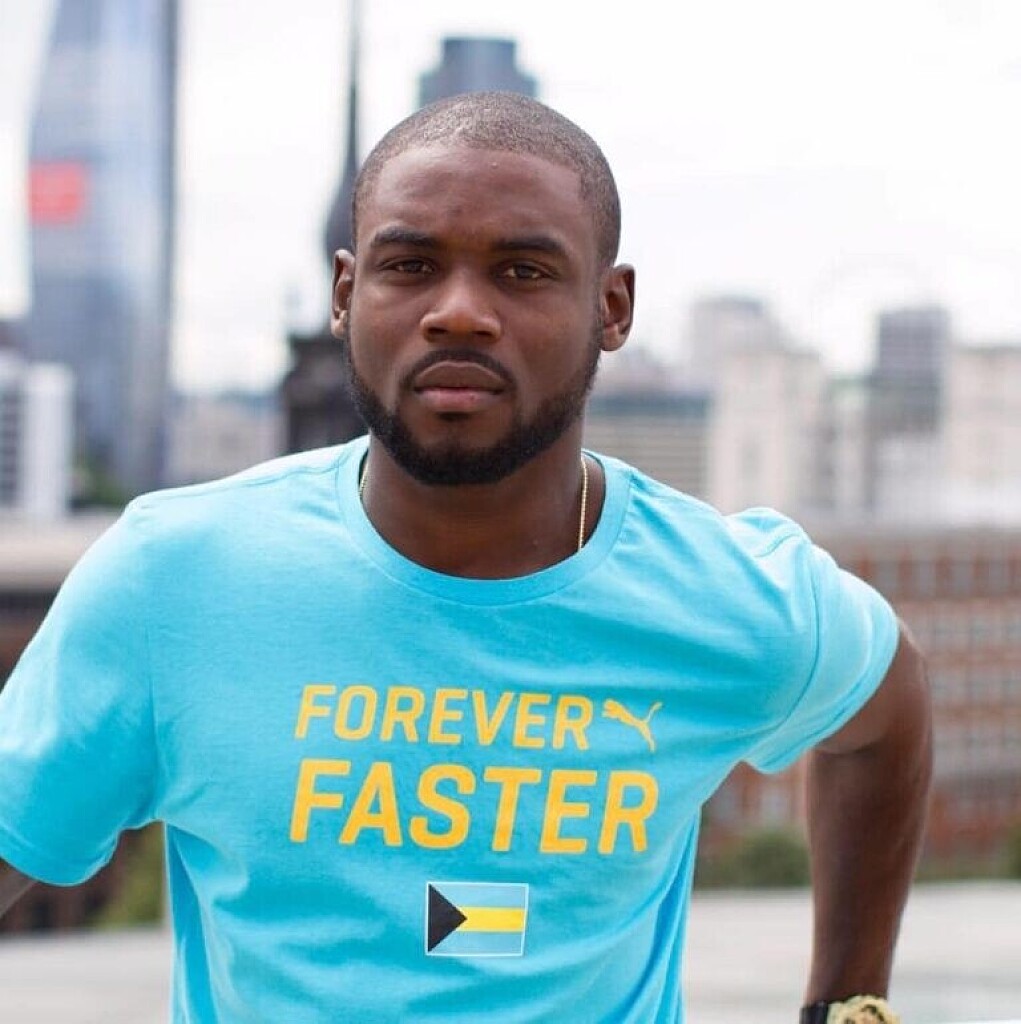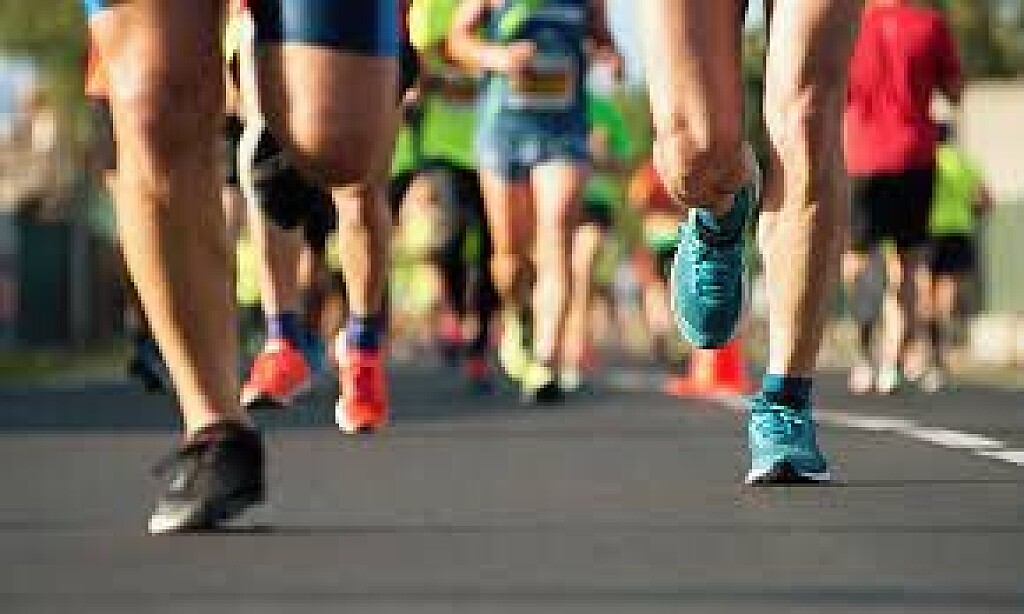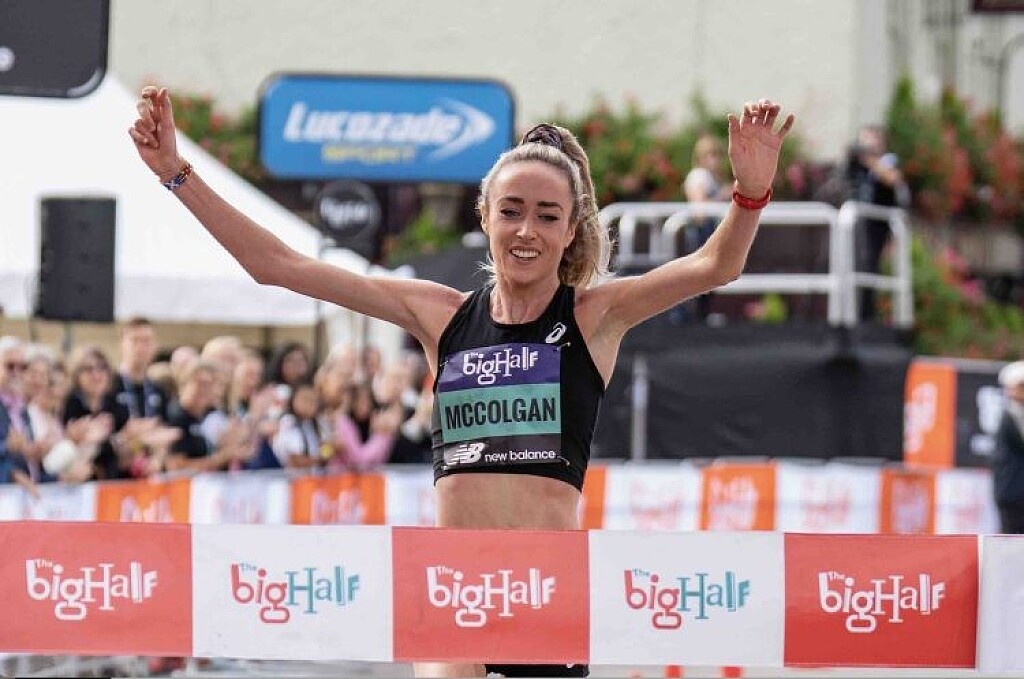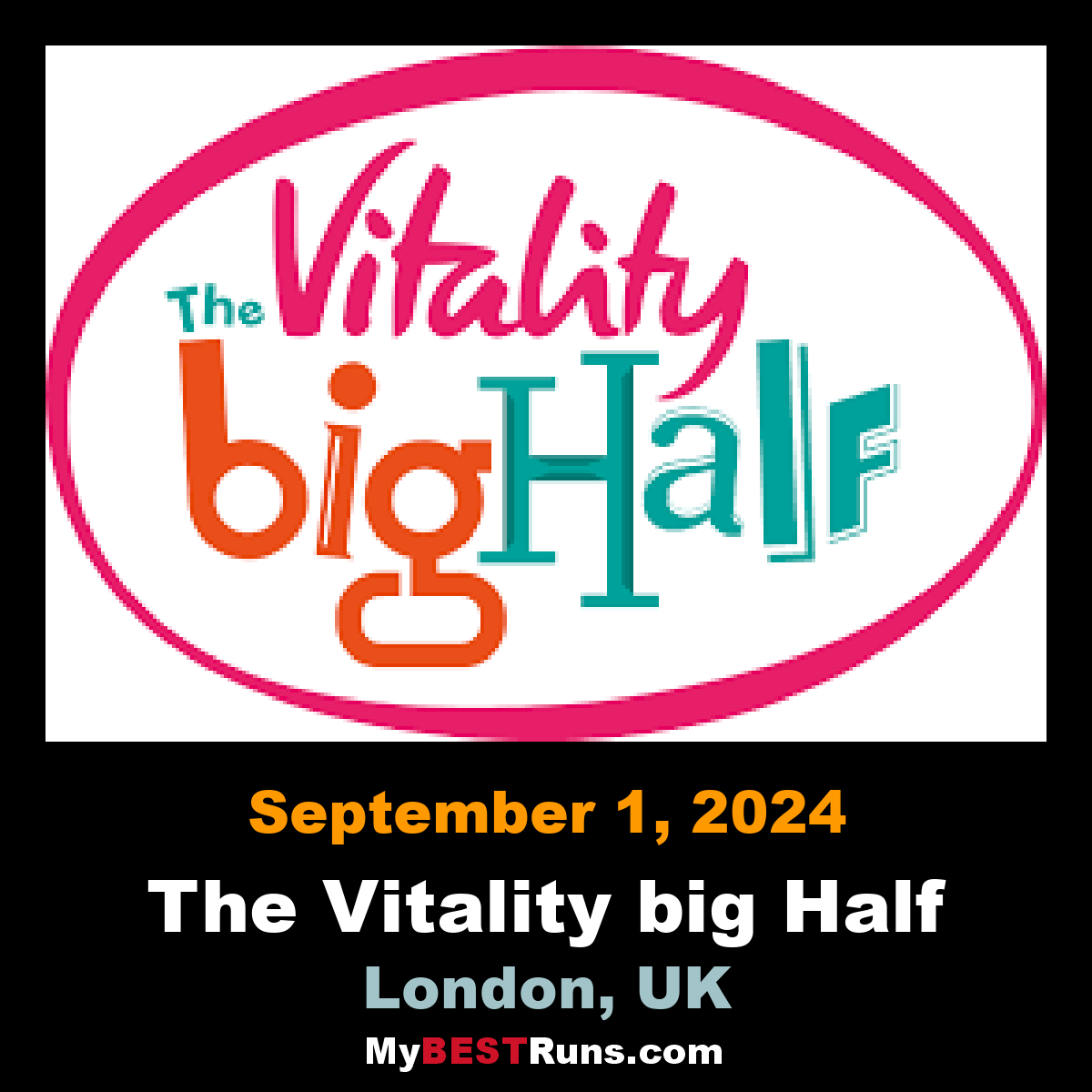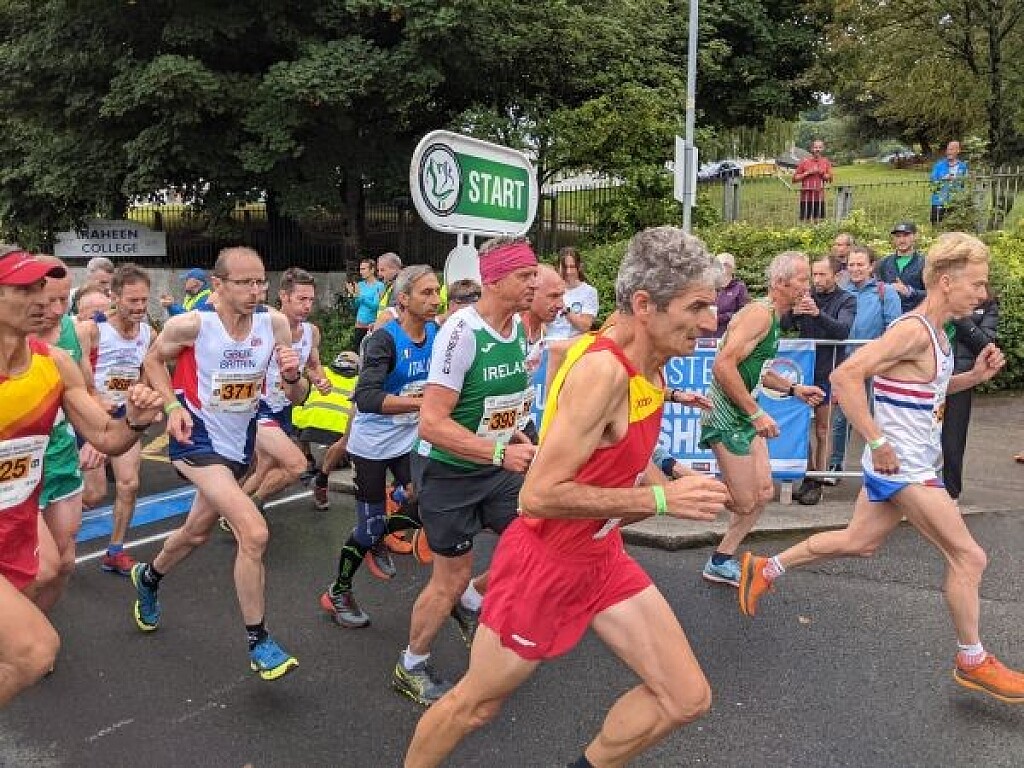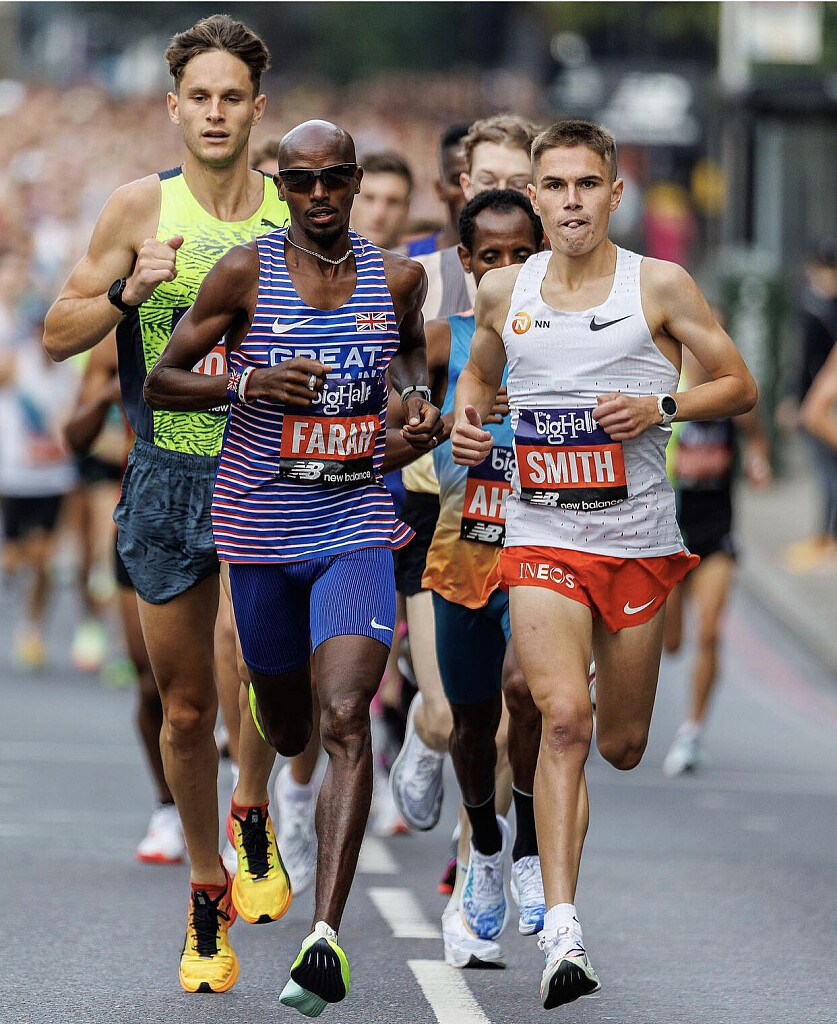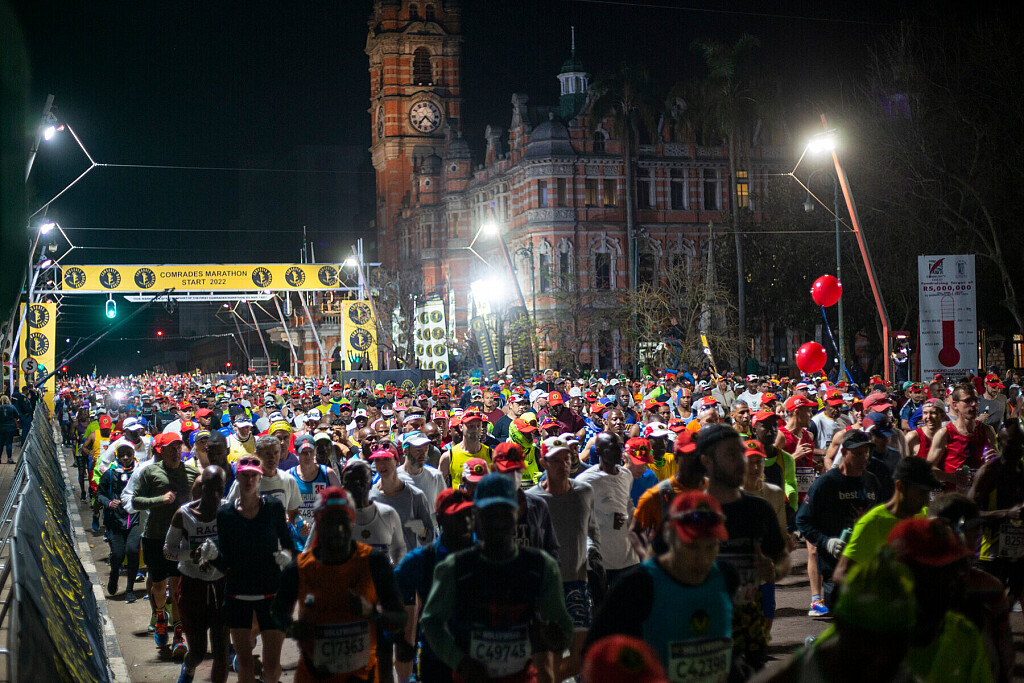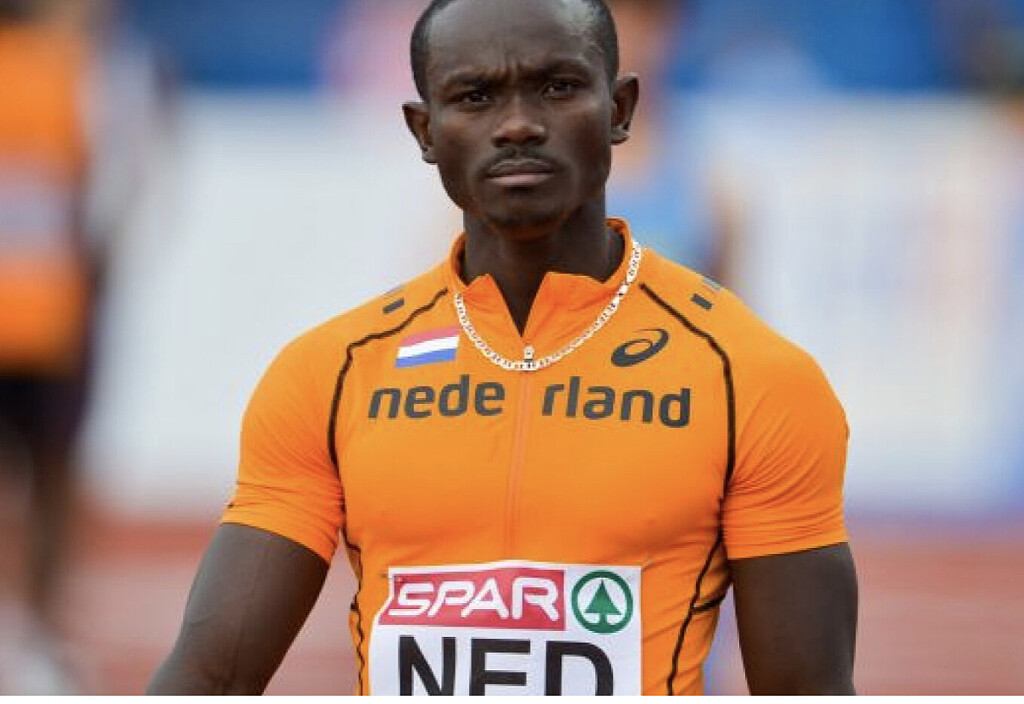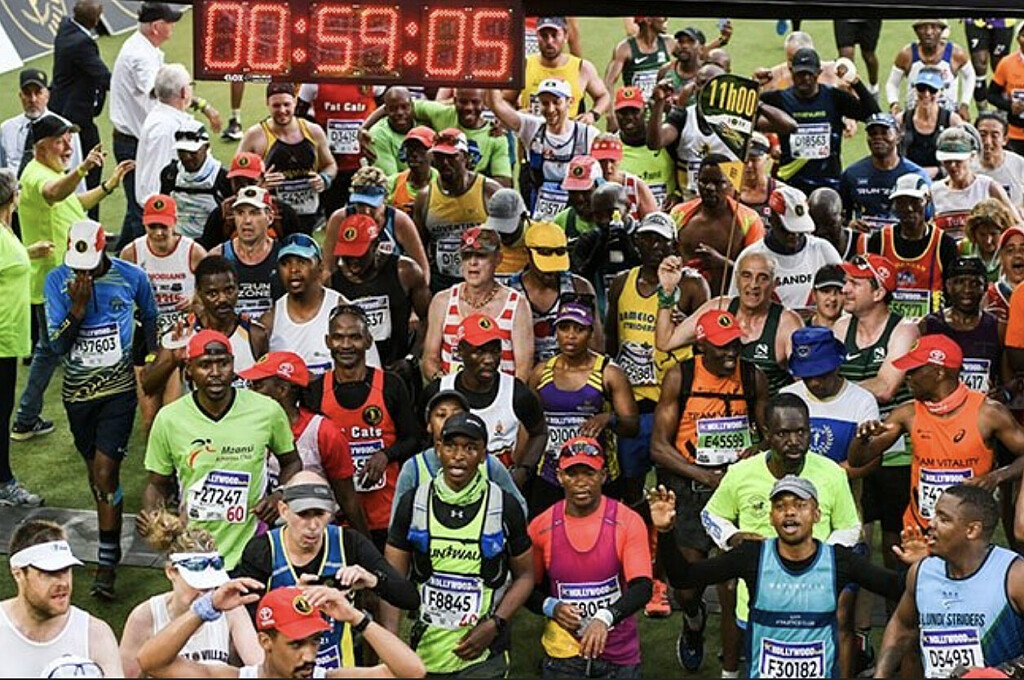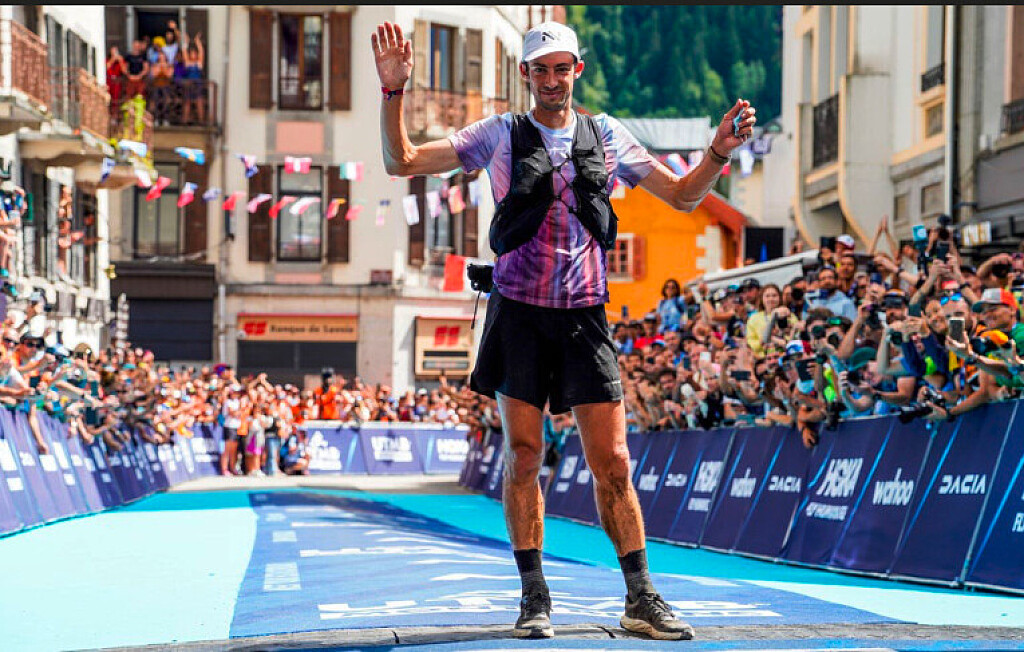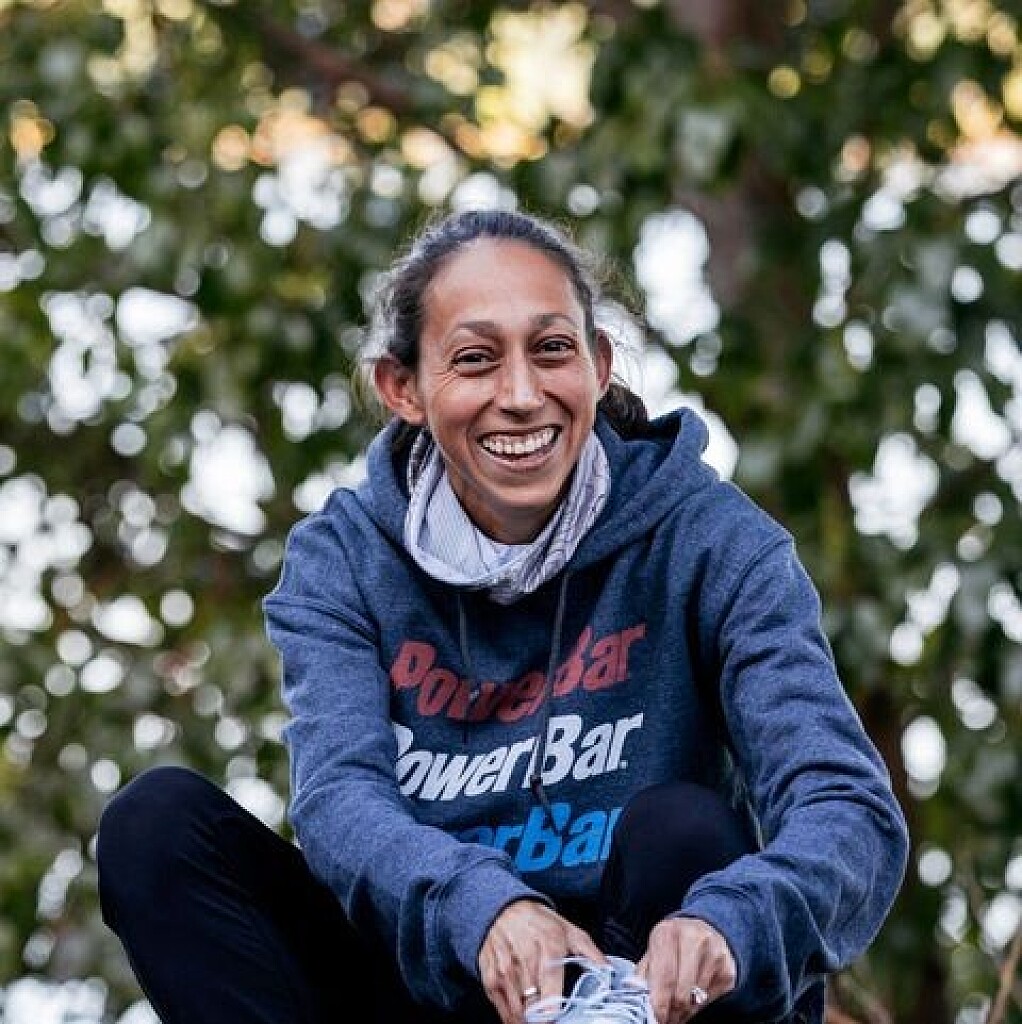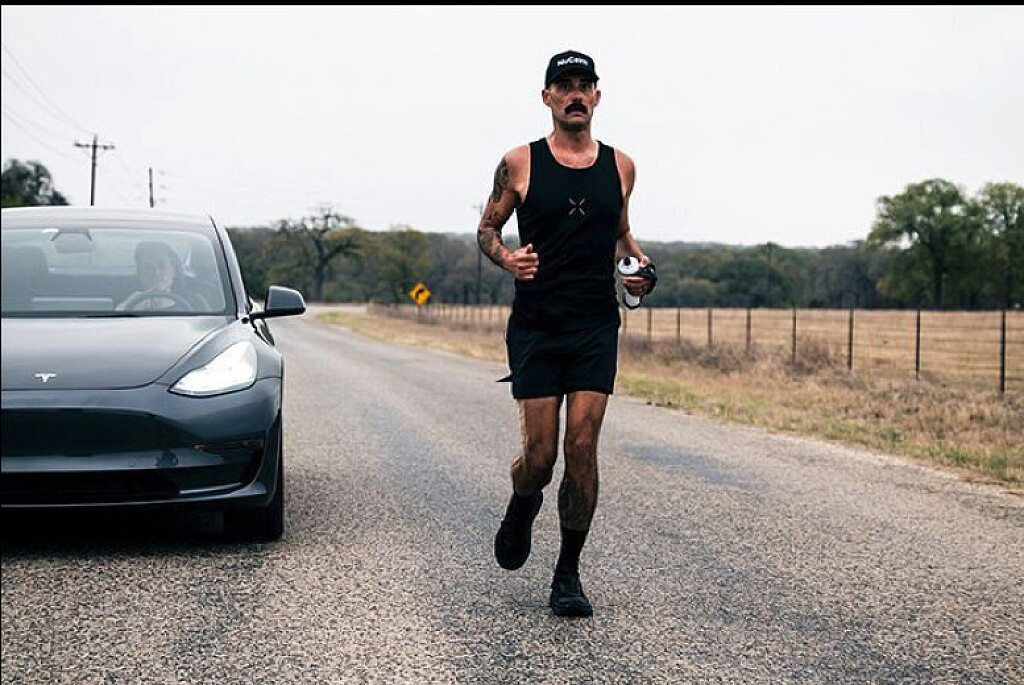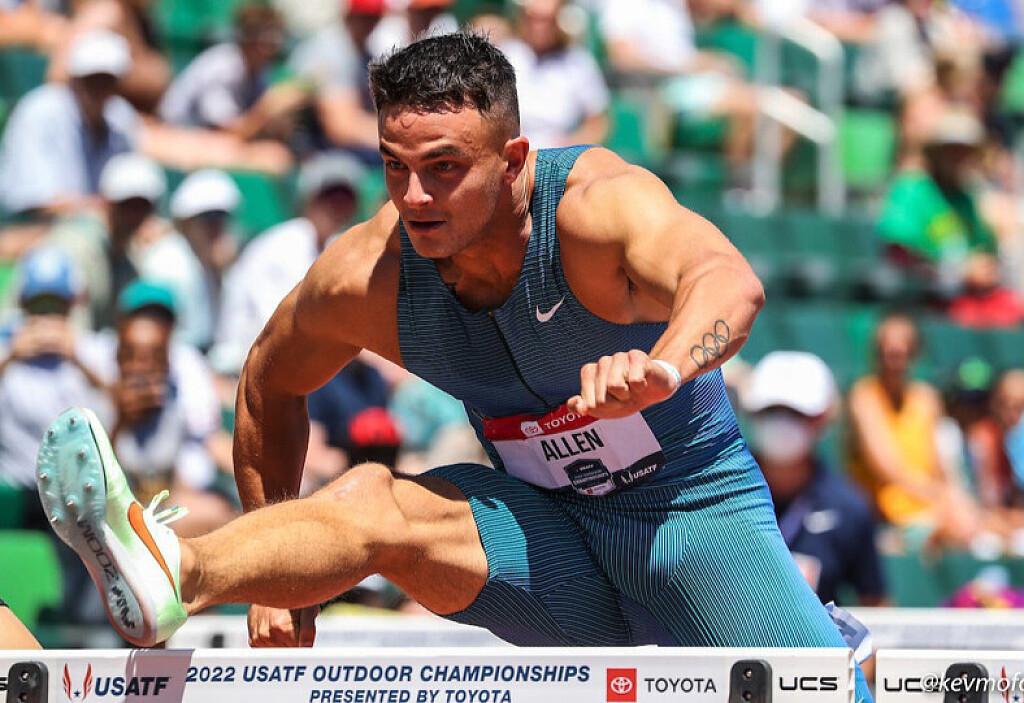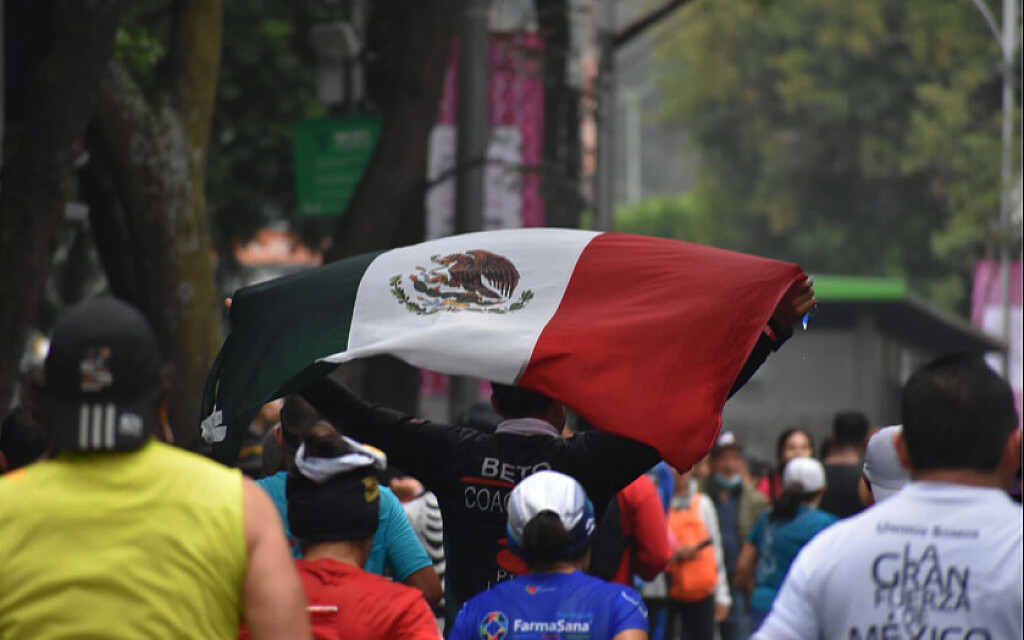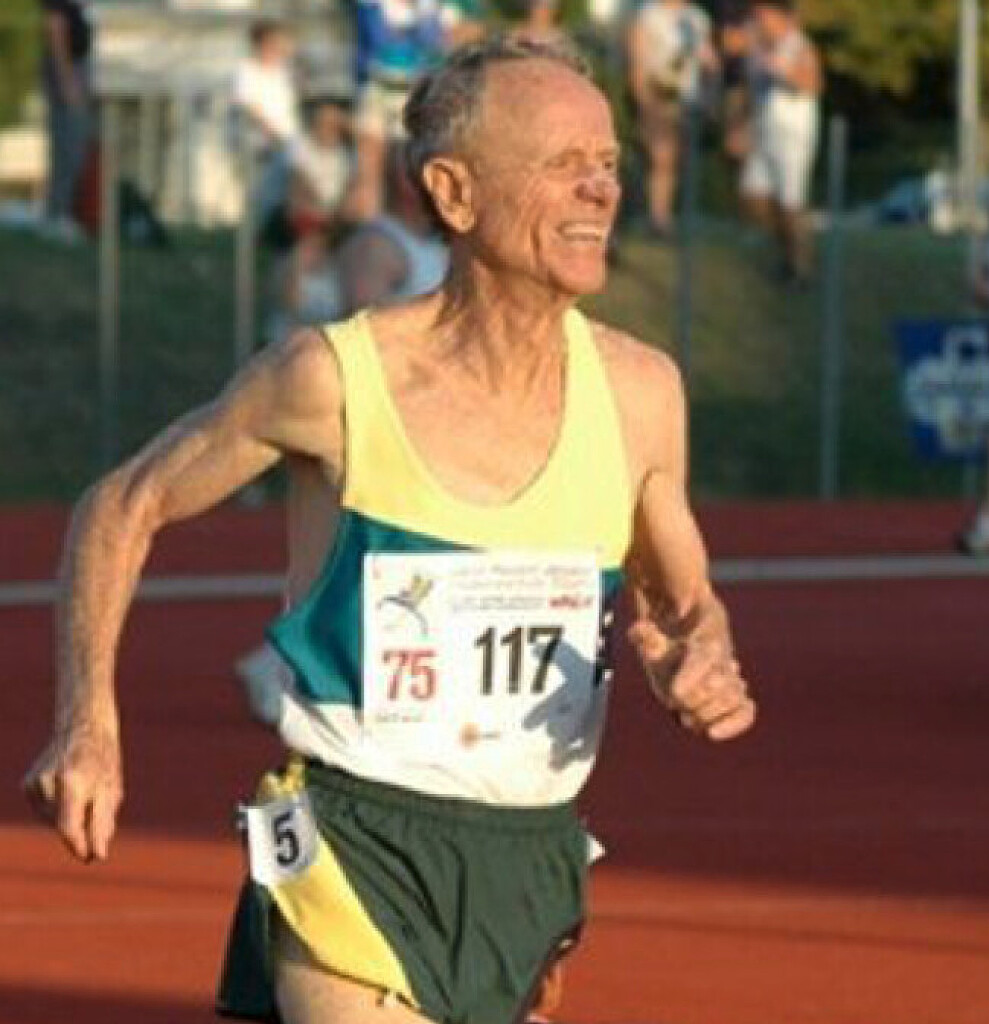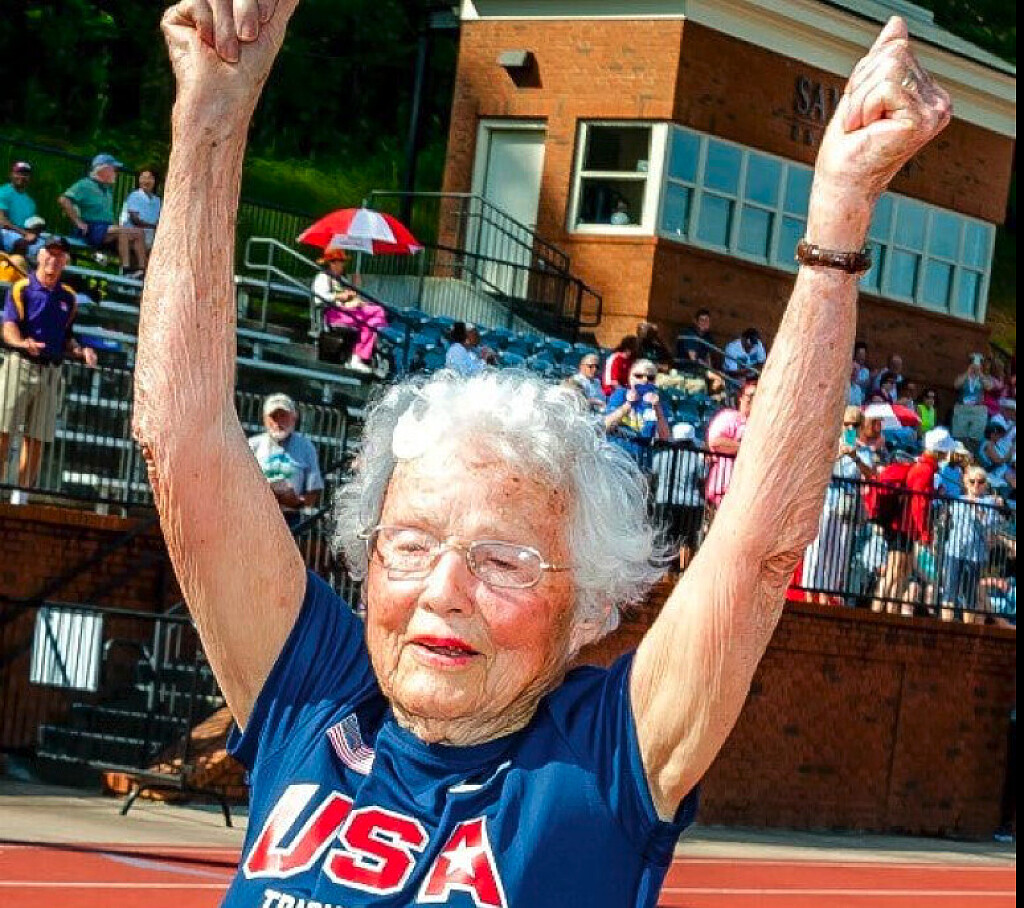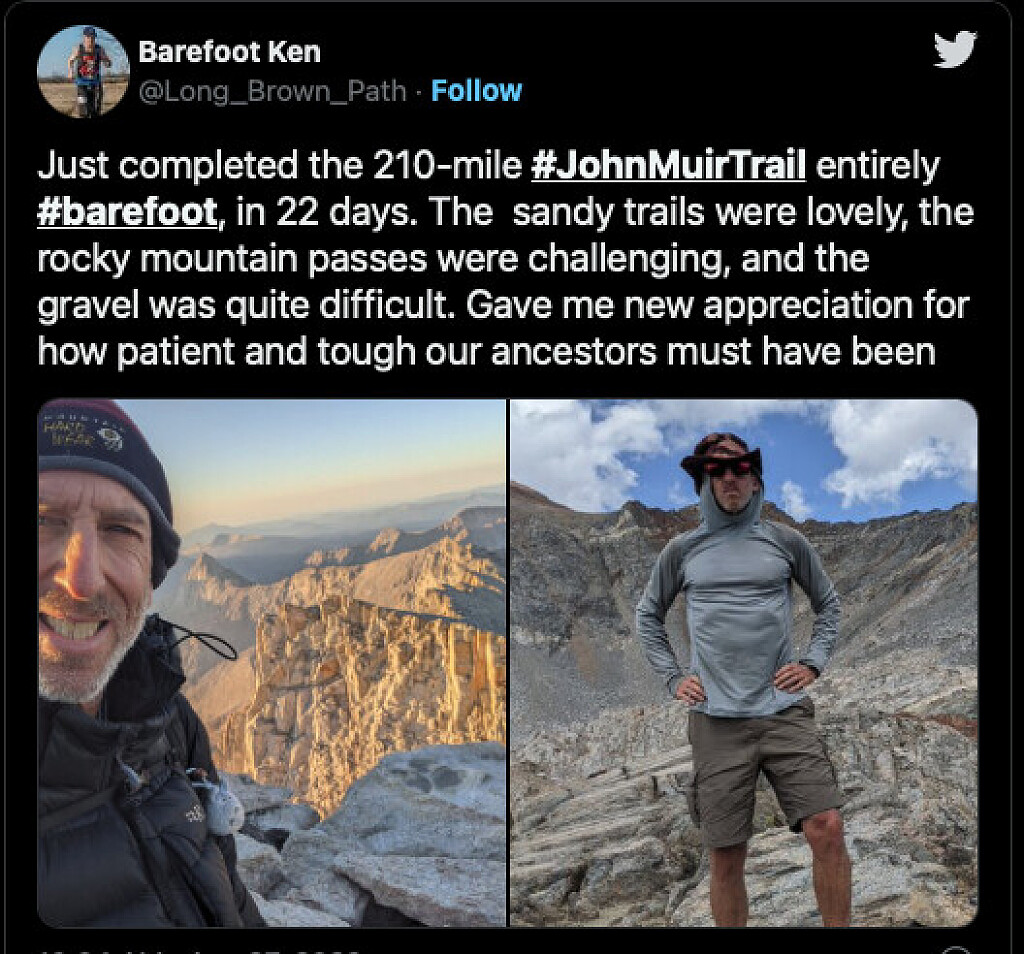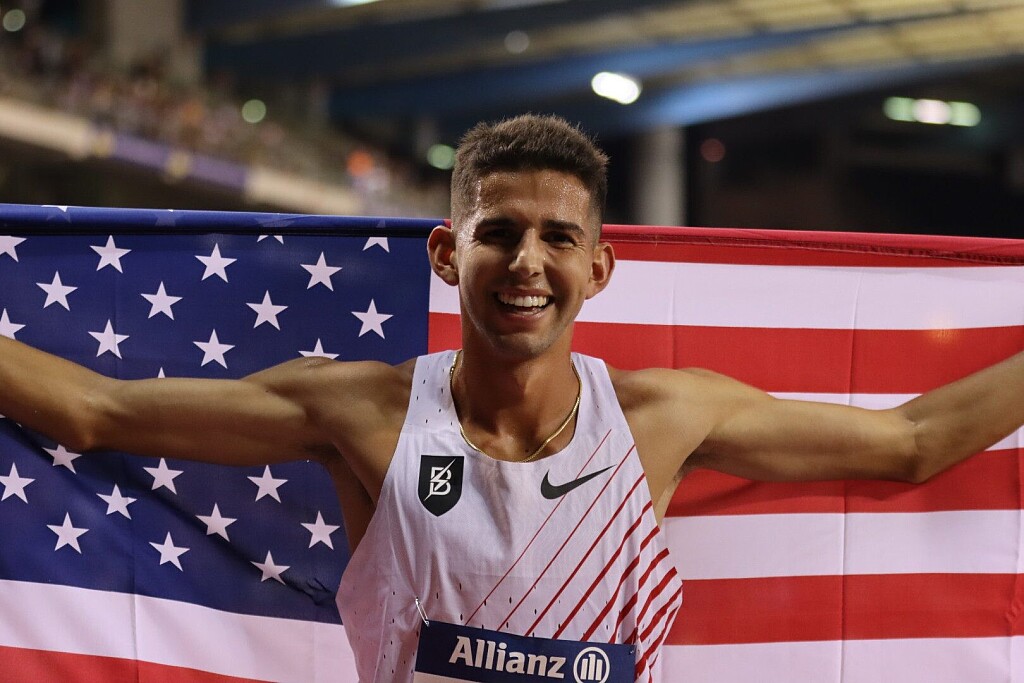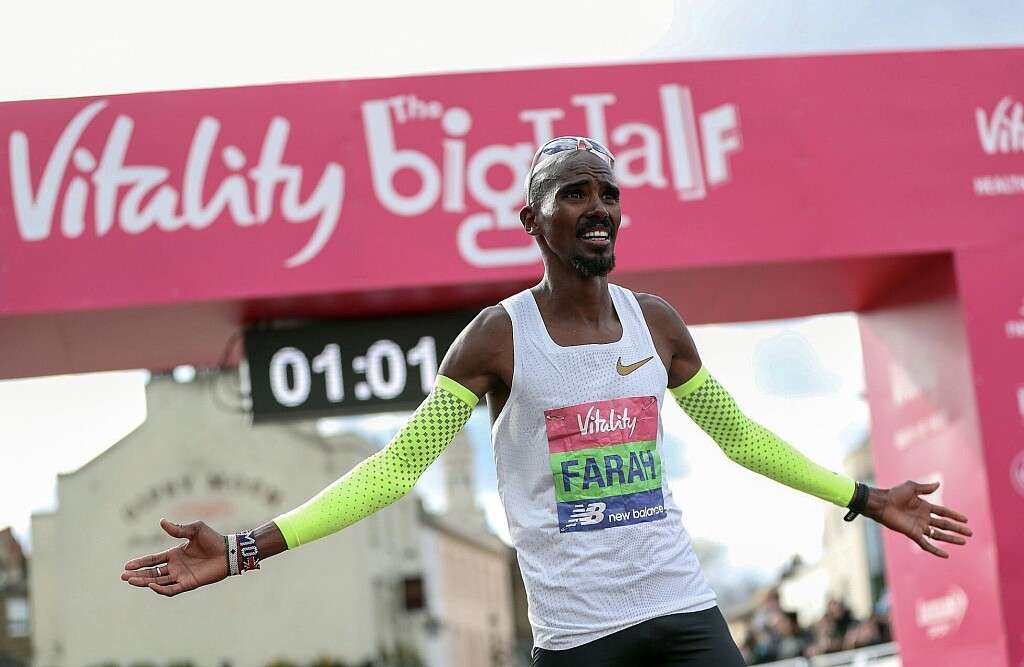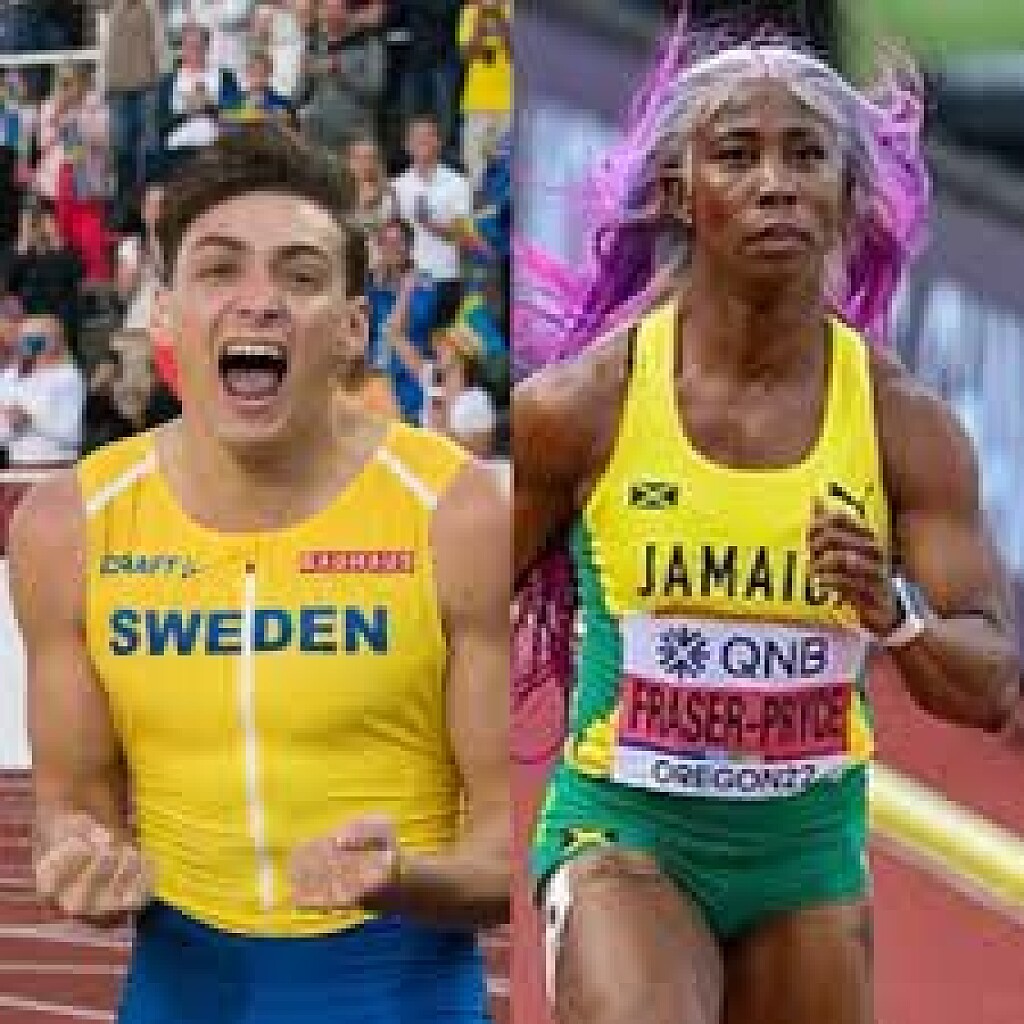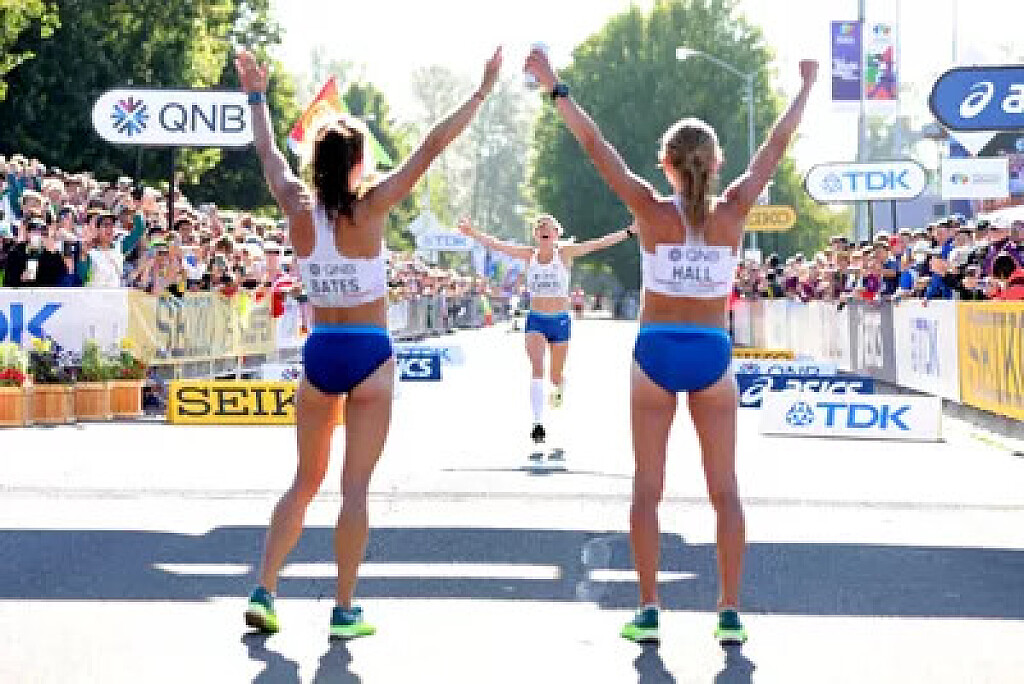Running News Daily
Running News Daily is edited by Bob Anderson in Mountain View, California USA and team in Thika Kenya, La Piedad Mexico, Bend Oregon, Chandler Arizona and Monforte da Beira Portugal. Send your news items to bob@mybestruns.com Advertising opportunities available. Over one million readers and growing. Train the Kenyan Way at KATA Running Retreat Kenya. (Kenyan Athletics Training Academy) in Thika Kenya. Opening in june 2024 KATA Running retreat Portugal. Learn more about Bob Anderson, MBR publisher and KATA director/owner, take a look at A Long Run the movie covering Bob's 50 race challenge.
Index to Daily Posts · Sign Up For Updates · Run The World Feed
I'm A Sports Nutritionist And These Are By Far The Three Most-Common Issues I See With My Athletes.
Question: "You've been seeing clients for many years and you're an accomplished elite mountain athlete. What are three themes you see folks getting wrong in their approach to endurance nutrition?"
As a sports nutritionist who works with athletes on a daily basis, I can tell you that I've seen it all. And that should not be surprising - our world is flooded with (mis)information on a daily basis. Eat this! Don't eat that! This food is healthy! This food group is unhealthy! This diet is the key to performance! Take this supplement, promise it will make you run as fast as Killian!

Humans are faced with making over 200 decisions about food every day, and yet most of us can't even decide what to make for dinner tonight. Combing through the hefty amount of food information thrown in our faces everyday through social media, the news, athletes we admire, and our peers can be overwhelming and stressful, even for a trained nutritionist.
As a general consumer of media and an athlete myself, I totally get it. Because of that, I have the utmost amount of empathy for my athletes who come to me feeling totally lost about what they should and shouldn't eat, and what they can do to improve their performance through nutrition.
That's why I started taking close notes on some of the most common questions from my endurance athlete clients. Here are three of the most common nutrition issues I see:
Issue #1: Not Eating Enough
The biggest issue I see is athletes not eating enough. Training and life are huge stressors, and even though most of my athletes have really good intentions of eating enough, they are often unaware just how much they really do need to eat to account for these stressors.
There are so many things that can complicate this, such as a change of appetite post-run, underfueling during runs, or just the sheer amount of hours spent on your feet, which can take away from time spent eating. It can be really hard to eat enough, so athletes need to devote as much time, effort, and attention into eating as they do to training, or to comparing the specific details of how the Hoka Speedgoat 5 is different from the Speedgoat 4.
Chronic undereating, whether purposeful or accidental, can lead to a variety of hormonal changes that can negatively affect your immune system, put you at higher risk for injury, and negatively affect your performance.
I've said it before, and I'll say it until the day I die - a real food diet full of nutrients and moderation, and one that brings us both physical and emotional satisfaction, is the secret to performance.
I always tell my athletes that, when in doubt, eat more! It's rare that an athlete will eat too much, even if they really try. Double up your servings, add extra snacks, eat more food before, during, and after runs, always eat dessert, and keep fun foods around the house - these things can help an athlete reach their daily calorie intake.
Personally, I'm a huge fan of adding avocado to anything and everything I can - tacos, toast, crackers, rice bowls, even smoothies. There's not an easier and more delicious way to boost calories, micronutrients, and healthy fats. Or my personal favorite: "pint of ice cream a night" tradition, which is by far the most fun and tasty way to get an extra 1,000 calories!
Issue #2: Believing in a Silver Bullet.
Just like you cannot outrun a bad diet, you cannot take a bunch of supplements to override poor food choices. I've seen athletes with a supplement list longer than my weekly grocery list.
While it might seem like the easy route, it will not always replace the benefits that come from eating real, nutrient-dense foods. While there are some exceptions for athletes on restrictive diets, and those with health issues, it can be possible for a person to get all of the nutrients they need from a balanced, nutrient-rich diet. For example, vegans might increase their dietary iron intake by making chili, which combines iron-rich beans with tomatoes. The vitamin C found in tomatoes can boost iron absorption in these non-heme, iron-rich food sources.
Supplements like fancy green powders, mega doses of multivitamins, and meal replacement powders are attractive due to their ease, but they are often just a short-term solution with short term benefits. Nutrient-dense, real foods will be much better absorbed and tolerated since real foods contain an array of things like vitamins, minerals, fiber, and antioxidants. These work synergistically to provide your body with what it needs to function well and efficiently.
More isn't always better, either. When we take certain types of supplements, we run into the risk of toxicity, especially in terms of fat-soluble vitamins (A, D, E, and K) and iron. This can harm internal organs and lead to severe, long-term damage.
If we take high levels of water-soluble vitamins (B vitamins and vitamin C), we're really just making some really expensive urine, as we pee out everything that our body doesn't need. Either way, we're probably just throwing money down the toilet (literally) or setting ourselves up for potential future health problems. We are much less likely to reach these toxic levels when we are able to consume these nutrients through food, and your body will utilize them a lot better.
Issue #3: Following a Specific Diet in Hopes to Achieve Better Performance.
You name it, I've seen it. I've seen athletes follow restrictive diets like keto, paleo, and gluten-free, even diets as outrageous as the grapefruit-and-bacon diet, in hopes that this "magical" diet will easily help them achieve their 50K PR with the snap of their fingers.
Most often, an athlete has been influenced by a pro athlete following that same type of diet, or maybe someone in their run group has found success while following one of them. And while I'm sure that there are some individuals out there who have found success following a specific, restrictive diet, it is by no means the secret to unlocking your potential or improving your performance.
Food plays many roles for us - physical, emotional, social - and its role on our physical and mental health is multifaceted. If we restrict foods (and therefore happiness!) with the hope of increasing our performance, our performance will undoubtedly suffer in the long term. If mental stress impacts our body the same way physical stress does on the cellular level, then stress related to restriction and dieting will negatively contribute to our overall health, affecting our performance and longevity in the sport.
I've said it before, and I'll say it until the day I die - a real food diet full of nutrients and moderation, and one that brings us both physical and emotional satisfaction, is the secret to performance.
Alex Borsuk Hasenohr, M.S., is sports nutritionist and professional trail runner for Dynafit. She is passionate about helping athletes reach their full potential through the use of practical nutrition, and she can be contacted through her website.
(09/10/2022) ⚡AMPby Trail Runner Magazine
Olympic sprinter shot dead during nightclub brawl in Bahamas
Bahamian sprinter and 2016 World Indoor silver medallist Shavez Hart was shot dead at a nightclub on Saturday morning in the Bahamas.
The police reported that the incident occurred after a fight in the parking lot of a local nightclub on Saturday at 2 a.m. Hart, a former sprinter for Texas A&M University, was shot in the chest while trying to break up the altercation.
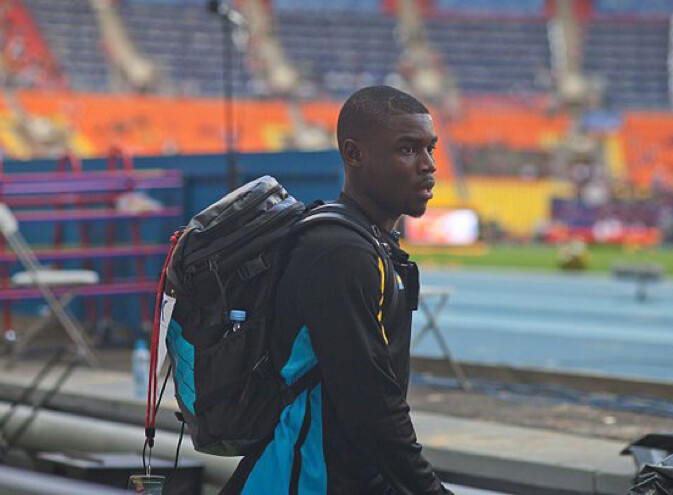
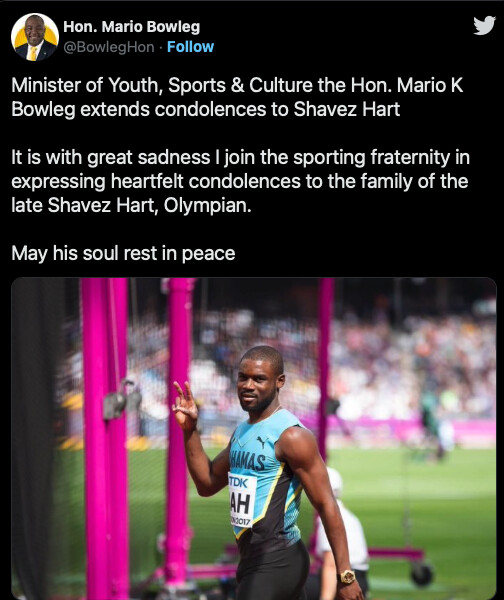
He was rushed to a local clinic, but was pronounced dead upon arrival. The suspect was arrested and taken into police custody; an investigation is ongoing.
Hart was celebrating his 30th birthday.
The 400m Olympic champion from the Bahamas, Steven Gardiner, tweeted, “The tears will have to dry on their own,” and highlighted several tweets commemorating his friend and compatriot.
Hart was the second former Texas A&M track star to die this year. Deon Lendore, his former Texas A&M 4x400m teammate, died in an auto accident in January.
Hart was an eight-time national sprint champion over 100m and 200m from 2014 to 2019 and had a 100m personal best of 10.10 seconds, making him the second fastest Bahamian-born sprinter of all time. He earned a silver medal in the 4x400m at the 2016 World Indoor Championships in Portland, Ore.
He also ran in the 100m and 200m at the 20
(09/10/2022) ⚡AMPby Running Magazine
Want to Run Faster? Here’s How to Do It
There’s no doubt about it: Running can be hard. But it doesn’t have to be!
“The goal of running faster,” says professional marathoner Stephanie Rothstein-Bruce, “is to run more economically and use the least amount of energy that you can.”
This becomes particularly important in long-distance running. After you’ve run 20 miles, the last thing you want to do is expend any extra energy — you don’t have much of it left! With a few smart tweaks to your routine, you can run much more efficiently with the energy you have — without having to pop an extra gel.

5 Tips to Run Faster, Starting Now
1. Roll Out.

You may foam roll after your workouts, but if you’re not foam rolling before, your body may not be ready for the workload you’re about to subject it to, says Daniel Viera, USA Triathlon Full Throttle Endurance coach. “Most of the time, the muscles can handle it,” he says, “but you want to make sure the tendons, ligaments and joints are ready.” Be sure to hit the glutes, hamstrings, quads, hips, calves and IT bands, spending 30 to 60 seconds on each muscle group before launching into your dynamic warm-up.
2. Drill, baby, drill!
Running fast isn’t about just running forward in a straight line. Drills such as butt kicks, high knees and Russian kicks (resting on one leg and kicking the other) increase proprioception (one’s perception of his or her body and the strength of effort being used in movement) and coordination, says Viera. He recommends beginning the drills slowly and increasing speed and velocity as you get comfortable with them. The payoff: Your body will learn to fire the correct muscles at the proper time.
3. Mix up the pace.
Running your fastest speed at every workout isn’t the key to getting faster, says Viera. As counterintuitive as it sounds, running slower can actually help you get faster! He suggests mixing things up with a slow endurance run, a tempo run and some speed work at a track at least once a week. “Working on your heart, lungs and muscles is the key to becoming a more efficient runner.”
4. Make your form work for you.
Guilty of swinging your arms across your body when you run? “The side to side motion is wasted energy for your arms as it forces your hips to counter the motion instead of powering you in a forward motion,” says Rothstein-Bruce (who runs a 2:29 marathon, so she knows a thing or two about running efficiently). She recommends practicing seated arm drills by sitting with the legs at 90 degrees and swinging your arms back like you’re beating a drum. And when it comes to “running tall,” imagine someone is pulling you up by your hair while maintaining a slight forward lean.
5. Get new sneakers!
Often, pounding the pavement in old sneakers can lead to injury, says Viera, and injured muscles are certainly not as efficient. Make sure to get fitted for new sneakers every 300 to 500 miles. And be sure to properly break them in by walking for a few miles before lacing up for a long run.
(09/09/2022) ⚡AMPby Theodora Blanchfield
Making Sure Your Running Shoe Complements Your Style
You do not want to imagine carrying out a strenuous activity like running on a running shoe that does not fit your style. You probably have thought going with the latest fashion is all you need; unfortunately, you should consider more criteria.
After buying your running shoe from the Australian Asics Store, you can only enjoy the maximum benefits attached by considering the necessary factors. You can only get the right footing balance after using the most suitable running shoe for you.

Your running shoe should fit your foot type to avoid foot injury and other complicated problems. What other thing should you know?
This guide will focus on pronation since it is a crucial consideration when choosing running shoes.What is the Meaning of Pronation?If you have come across the word "pronation" but have not figured out what it is, you are at the right place.
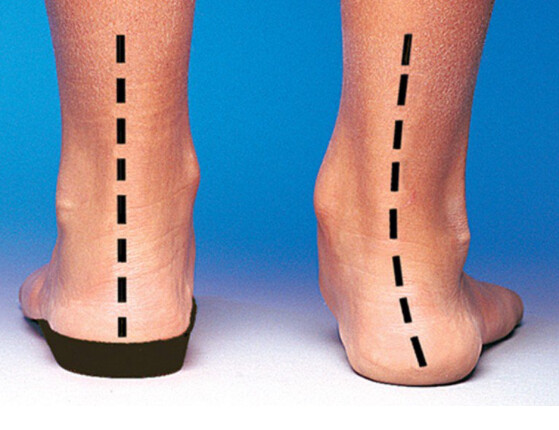
Pronation is a term used by experts to describe your feet' rotation while on movement. Usually, your feet will either roll inwardly or outwardly. Pronation is also divided into three categories. The first is normal or neutral pronation, secondly, underpronation, and lastly is the overpronation.
Normal pronation describes a person with a normal arch. That is, feet that do not rotate inwardly or outwardly in excess.Underpronation describes afoot with outward rotation, while over-pronation describes the inward process. Hence, the category you fall into will determine the best running shoe for you.
What to do After Knowing One's Pronation
People with neutral pronation are most lucky because most running shoes will be suitable for them. This is because the comfort depends on the level of activity the user engages in.
Since the feet neither rolls inward nor outward, you are good to go with almost every type of running shoe.People with underpronation will use different running shoes than neutral pronation.
Any attempt to use the same type of shoe as the neutral may lead to ankle strain and heel pain. This is because the lower leg receives more pressure anytime it comes in contact with the ground.
Therefore, apply enough pressure or cushioning to this part of your leg.Like people with underpronation, overpronation needs shoes that will apply pressure to the part of the leg with much weight, which is the inner edge of the foot.
In this case, you need support and stability from your running shoe as much as you can.In the three types of pronation, you must use reputable brands, which you will find in Asics stores in Australia. A reputable company not only understands what you need but also tailors your shoe to your need.
You can also check the company's website for reviews from past and present users. From there, you can decide if a company is reputable enough to provide the quality service you need.How to Know My PronationThe pain of wearing the wrong shoe is far greater than letting go of some time to conduct a gait analysis with AU Asics Stores.
With this analysis, you will know your foot type and the right running shoes to wear afterward. If you require it, you can carry out this analysis before making an order or purchase. Among other reasons, this is important because it prevents overspending. It also limits the stress and time in returning a shoe.
While some brands or stores would allow an exchange, some would not, nor will they refund.If you cannot carry out a gait analysis with a store, you can get it done at a health center. However you choose to discover your pronation, always remember that it is crucial to have your right shoes on.
This will help you cover a long-distance or run a competition successfully.Any Other Criteria I Should Consider?
Apart from your foot type, you should consider the quality of the material you are using. Also, the shoe should not be too tight but relatively comfortable. A shoe made with quality material provides the utmost comfort because it allows airflow and exhales excess heat and sweat from the feet.
Another criterion you should consider is price, which people barely talk about. Bear in mind that an expensive or famous shoe brand those not equate quality services. You will get these services at a high price, which you could have gotten at a lower price for the same quality elsewhere.
(09/09/2022) ⚡AMPTry fartlek training to get sneaky fit
If you are wanting to improve your times over 5K and 10K, introducing speedwork into your training program is the easiest way to get faster. But which type of speed workout is most efficient? This unique speed workout called fartlek (the Swedish word for “speed play”) is designed to get you comfortable with a variety of paces, and is one of the easiest ways to incorporate speedwork into your mileage.
Instead of doing set intervals on a track, fartleks are unstructured and can be done on any terrain.
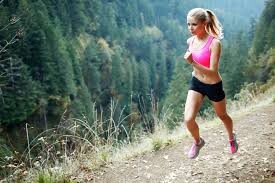
Fartlek running is a great low-key way to get sneaky fit because of its lack of structure in comparison to an interval or track workout. Fartlek running consists of random bursts of up-tempo running lasting anywhere from 15 to 60 seconds or so.
The purpose of this style of training is continuous running, so don’t stop in the middle. If you need to stop, you might be pushing too hard; try slowing down a bit.
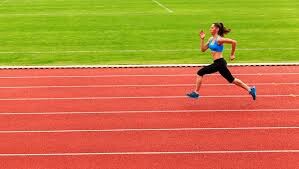
To begin the workout, start with 10 minutes of easy jogging, then choose an object about 200m away, and run toward it at a fast but controlled pace. (If you run with a GPS watch, you can substitute a time goal for a visual landmark). Once you reach your target, slow down to a comfortable pace, or jog until your breathing returns to normal and you are ready to make another hard effort. Aim for six to 10 efforts, then cool down with 10 minutes of easy jogging.
Here are some other fartlek workouts to try:
5K run with 5 x 30 seconds hard effort in the middle
8K run with 10 x 45 seconds hard effort in the middle
10K run with 12 x 1-minute hard effort in the middle
Once you feel comfortable with fartlek workouts, you’ll notice an improvement in your speed and endurance, which will help prepare your mind and body for faster efforts come race day.
(09/09/2022) ⚡AMPby Marley Dickinson
Dutch track star Sifan Hassan mulling marathon switch
Dutch track star Sifan Hassan, who won double Olympic gold in the 5,000 and 10,000 meters at the Tokyo Games, said Tuesday she was thinking about stepping up to the marathon.
“I’m really planning to run marathon,” said the Ethiopia-born Hassan. “I don’t know when, but I’m thinking about it, I’m thinking about it every night and every day, whenever I run.”
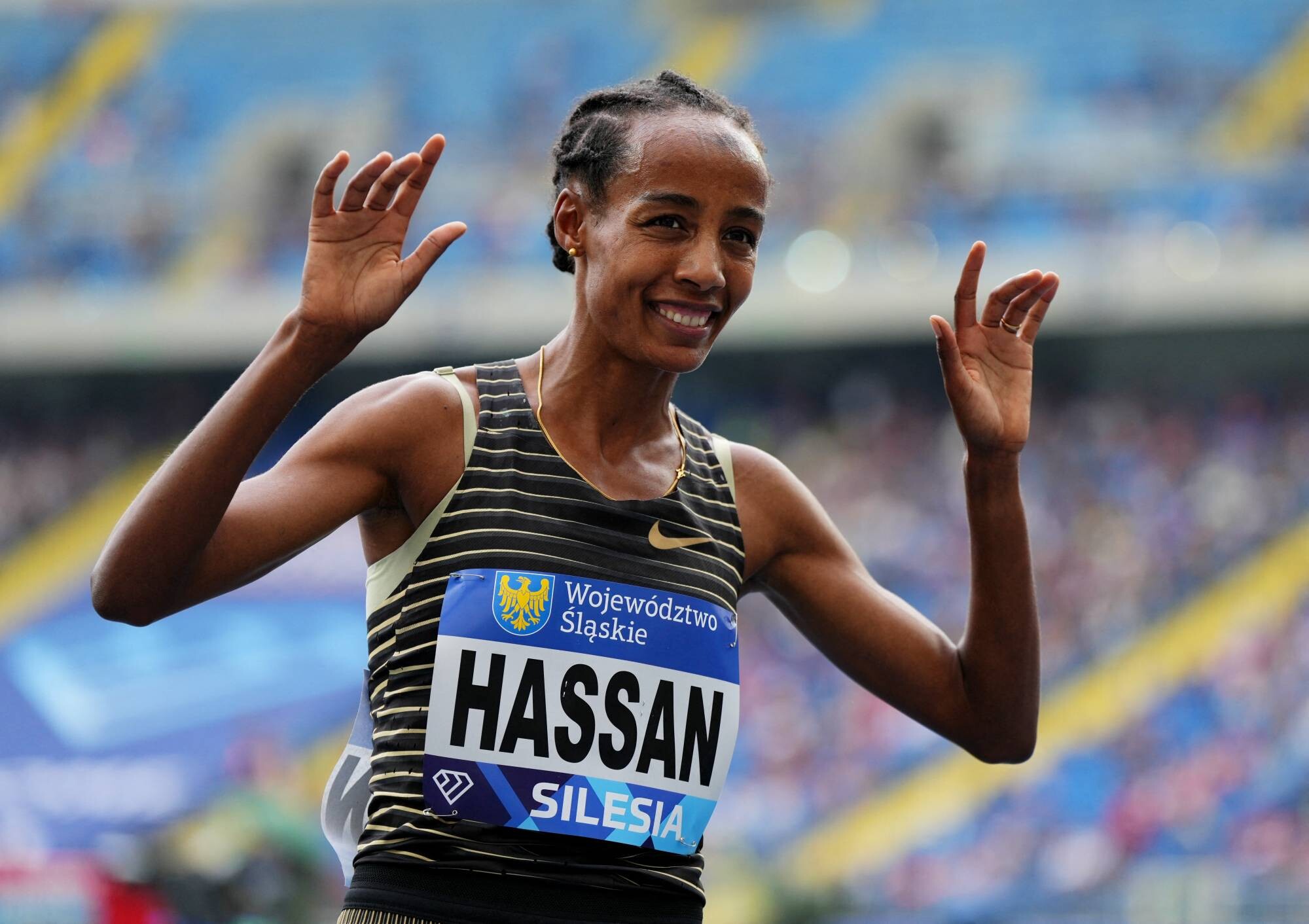
When asked whether she might have a tilt at the marathon at the 2024 Paris Olympics, she replied with a laugh: “Why not?”
Hassan, 29, also won bronze in the 1,500 in Tokyo in a remarkable bid for three titles.
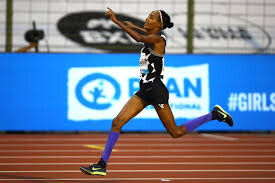
That effort, however, took its toll and Hassan has enjoyed a hiatus from the sport, time she said that had been constructively spent learning about her true self.
“In Tokyo I did amazing, but it affected me a lot. This year for me is like a break of a year,” Hassan said ahead of Wednesday’s 5,000-meter race, part of the Diamond League finals in Zurich.
“I have to have a very big goal and very big challenge to go forward,” she added, describing herself as “curious” to see if she can push her limits for challenges as much mental as physical.
“I’ve lost a couple of races, which gave me a boost,” she said of this season. “I’m in great shape, I’m peaking now.”
Much was expected of Hassan at July’s world championships in Oregon, but she could only finish sixth in the 5,000 and fourth in the 10,000.
(09/09/2022) ⚡AMPParis 2024 Olympic Games
For this historic event, the City of Light is thinking big! Visitors will be able to watch events at top sporting venues in Paris and the Paris region, as well as at emblematic monuments in the capital visited by several millions of tourists each year. The promise of exceptional moments to experience in an exceptional setting! A great way to...
more...Organizers of the Great North Run have confirmed the main race will go ahead on Sunday in wake of Queen Elizabeth death
Issuing a statement on Friday, September 9, the Great Run Company confirmed a number of changes to the weekend’s planned events following the death of Her Majesty Queen Elizabeth II – but said that the main half marathon between Newcastle and South Shields will run as normal.
The Junior and Mini Great North Runs – scheduled to take place on Saturday, September 10 – have been cancelled.
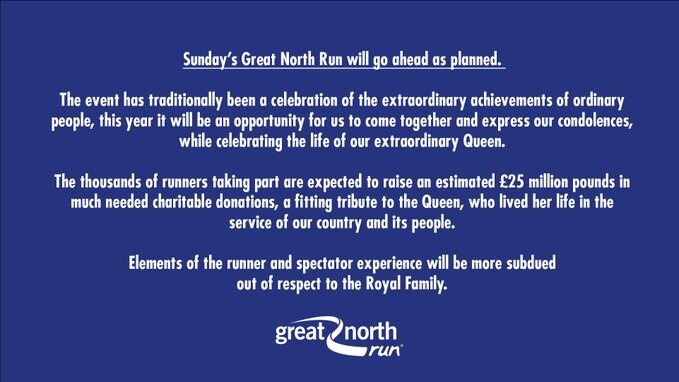
Queen Elizabeth II died on Thursday, September 8 at Balmoral Castle in Scotland. She was 96.
(09/09/2022) ⚡AMPby Debra Fox
Great North Run
Great North Run founder Brendan Foster believes Britain is ready to welcome the world with open arms after the launch of the event's most ambitious plan to date. The Great World Run campaign seeks to recruit one runner from every country in the United Nations – 193 in total – to take part in the iconic half marathon in...
more...Find your zen: fix focus and form with this running meditation
Practicing a simple running meditation on easy runs can help you tap into that much-desired flow state–where running feels effortless. Mackenzie L. Havey, author of Mindful Running, explains that adding mindfulness practice to your training has the potential to amplify the already brain-boosting effects of aerobic exercise, increase running performance, and lower anxiety and stress.
Accomplished ultrarunner Timothy Olson emphasizes how much being mindful has impacted his running.”Bringing mindfulness into anything you’re passionate about ignites your overall enjoyment of the whole experience. You become more skilled by becoming engaged in and focused on what you’re doing in the moment. The more you enjoy running, the better you are.”

Having the ability to calm your mind in a physically challenging or pressure-laden time is an enviable skill. Read through this simple meditation several times, and then try it while on your next few easy runs. You’ll find it gets easier over time, and you’ll have one more tool to pull out during your next hard race.
Basic running meditation

Choose something as an anchor for your attention–this could be your breath or your footfall.
Start an easy run, ideally on a trail or somewhere where there isn’t a lot of traffic. Make sure to be aware of your surroundings at all times.
Give yourself five to ten minutes to relax and settle into your run.
If you chose your breath as an anchor, follow each inhale to the end and then follow each exhale. If you chose your footfall, count each step up to ten and repeat. Pay attention to where your foot lands and how it feels when it pushes off.
When you notice your mind wandering, gently redirect it back to your anchor. Continually bringing your attention back to your breath or footfall will strengthen new neural pathways over time, enhancing your ability to concentrate.
With practice and when things line up, you will find that refocusing your attention on your breath or footfall can eventually lead you to flow state.
(09/08/2022) ⚡AMPby Running Magazine
Six tips for maintaining your running motivation over time
So, you’ve decided to give running a try - congratulations! Running is one of the most simple, and rewarding ways to work out. The running community is often enthusiastic in their love of the sport, and hopefully you are starting to understand why. Maybe you’ve already experienced your first runner’s high, or you might be wondering what all the fuss is about. The truth is, no matter how long you’ve been a runner, running can be challenging. It takes grit to get your run in on a chilly day or at the end of a long week. Don’t worry, running will get easier as long as you stick with it. Here are six ways for new runners to stay motivated.
1. Define your goals
One of the biggest challenges runners face is simply getting out the door. Having a goal to work toward can help give you the extra nudge you need on days when motivation is low. Think about what pushed you to start running in the first place. Maybe you want to finish your first 5K, are trying to spend more time outside, or are looking for a new social group.
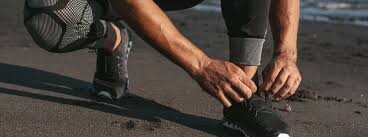
Try to come up with a specific, measurable goal that relates backs to what initially inspired you to run. Having a specific goal not only gives you an incentive to get out the door, it reminds you to celebrate your progress and commitment to running. Although COVID has placed limitations on connecting in-person, there are still plenty of ways to work towards your goals! Look for a virtual challenge on Strava or look for virtual or in-person training programs through your local Fleet Feet. Every runner struggles with motivation sometimes. Reflect back to your goals as additional inspiration to keep you moving on the rough days.
2. Set a schedule
One of these easiest ways to lose motivation is to get out of the habit of running. Even for the most experienced runners, it can be challenging to get back into the rhythm of running after a long break. A simple way to stay motivated to run is to add running to your weekly schedule. Decide how many runs you want to accomplish weekly, and get in the habit of scheduling them for the same day and time every week.
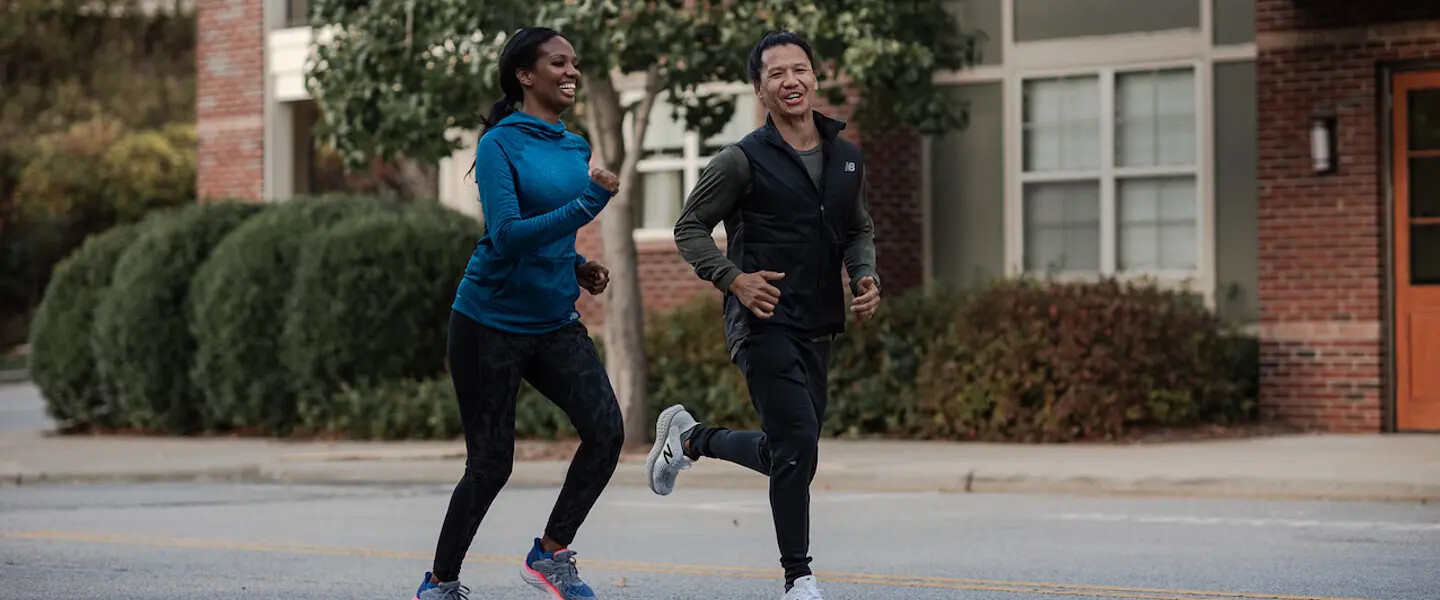
Try starting with three runs a week in your training plan. Find one hour each day that you can consistently block off for your run, and stick to that time as often as possible. If 6:30-7:30 is free every Monday, Wednesday, and Friday, designate that as your official running time. Make sure partners, friends, and anyone else you interact with day-to-day also know that this is your running hour to help avoid scheduling conflicts. Not only will this help you avoid the stress of squeezing in a jog when you feel short on time, it will also help prevent you from using lack of time as an excuse on days when you’re feeling low on motivation.
3. Aim for consistency over quantity
Let’s be honest - there will always be days when going on a run sounds like the last thing you want to do. There are times when it is the smart decision to skip a run, like during injury or illness. But in general, the most important runs to complete are the ones that we dread starting. On these days it can be helpful to shift your focus from finishing your scheduled number of miles, to simply putting on your running shoes, getting out the door and finishing something.
If you planned to run three miles, start with running a mile, or walking for 20 minutes. Maybe you’ll find you are actually capable of finishing your scheduled workout, or maybe one mile is plenty for that day. Even if you don’t finish the workout you had planned, having the grit to put a little work in on those tough days is an accomplishment worth celebrating.
4. Join a group
Many runners find that going on a jog alone is not quite as enjoyable as cruising around town with your closest friends. Running with a group is a great way to stay motivated and keep running a fun experience. Having a regular meet-up of people who are also working toward their goals can make it easier for running to become part of your routine.
Believe it or not, COVID has not completely cancelled run clubs. The popularity of running groups (in-person and virtual) is on the rise, and it’s not hard to see why. Running groups turn an everyday workout into a high-energy social experience.
Check your local Fleet Feet for a training group or social run in your area. It’s tough to make new connections during a pandemic. While it’s not quite the same as meeting in-person, virtual running groups still provide a great opportunity to form new bonds with fellow runners.
Members of virtual groups on Strava for example, are able to share maps of their runs, update group members on their progress, and cheer other groups member on from a distance. Seeing group members putting in the work (even if it’s from your phone) is a great reminder that you’re not tackling your running journey alone. To find a virtual group, head over to Strava.com and checkout their thousands of clubs.
5. Sign-up for a race
For new runners, the idea of signing up for a race can be intimidating. Yes, some people use racing as a way to experience competition, but in reality, road racing is a way for the running community to come together and celebrate each other's hard work. If you are interested in finding people to run with, a local road race is the perfect place to make connections and get to know your fellow runners. Although the afternoons of live music, food, drinks, and raffles will be toned down, some cities are slowly beginning to allow in-person races to take place again. Look for appropriate COVID precautions before attending an event. If the idea of running with other people is too far outside your comfort zone, sign up for a virtual race!
The beauty of virtual races is that they can be completed on your own time, at a location that’s convenient for you, and are still a great way to celebrate the work you’ve put in. It’s disappointing when an in-person race is cancelled, but there are ways to make a virtual option rewarding.
Check to see if your race is sending out bib numbers and t-shirts to wear while you race from afar. Plan out your route ahead of time, and have members of your household support you along the way - from the car! Having roommates or family members to be your mobile water station and cheer squad can keep some of that race day excitement alive. Make sure to snap a few pictures to share with the event organizers after you’ve crushed your solo run! Check out Running in The USA or your local Fleet Feet to find in-person and virtual races close to you. Signing up for a race is the perfect way to remind yourself of the progress you’ve made during your running journey.
6. Treat yourself
You may not fall in love with running right away - and that is okay! Regardless of where you are in your running journey, make sure to find ways to reward yourself for the work you have put in. Hopefully going on a run will become something that you begin to look forward to, but while you adjust to becoming a runner, don’t forget to reflect on the progress you are making.
It takes time for your body to become comfortable with moving for an extended period, so it’s crucial to allow yourself time to progress. Swap one of your runs for a relaxed walk, check out a new trail, or take an extra day off! If you are running with a group, make time to celebrate with your fellow runners even if it’s from afar. Share your progress in your virtual group, and cheer on other members.
Splurge on a massage to relax while you recover, or run a hot bath before a laidback movie night. Find a way to thank yourself and your body for the work you are putting in. Running is hard work - but it will get easier.
(09/08/2022) ⚡AMPby Claire Green
Kenya’s Barselius Kipyego Seeks TCS Toronto Waterfront Marathon Title
Kenya’s Barselius Kipyego will line up at the start of the TCS Toronto Waterfront Marathon on October 16 with the fastest personal best time of the elite field. But the 29-year-old wants more. Last year, he ran 2:04:48 to finish fourth at the Paris Marathon, which, like the TCS Toronto Waterfront Marathon, has earned a World Elite Marathon label. That’s twelve seconds under the Canadian All Comer’s record (2:05:00) held by his countryman, Philemon Rono, who will return to Toronto in search of a fourth victory in Canada’s biggest city.
Rono set that mark in winning the 2019 Toronto Waterfront Marathon—the last time this race was held in person. While it is foolish to compare times run on different courses and under different conditions, it is clear that Kipyego is bent on a sublime performance.
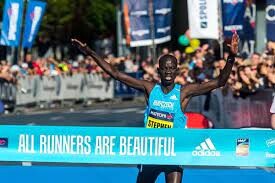
“I am coming to win the race. Then, I want to break the course record,” the affable Kipyego reveals during a WhatsApp video call. “That is why I sacrifice by staying in the camp so I can give my best to this race, so I can come fully [fit].”
Barselius is part of a 24-member group known as ‘2 Running Club,’ trained by noted Italian coach, Claudio Berardelli, in Kapsabet. He founded the club in 2016 with the aim of having a group of elite athletes bond as a supportive group despite marathon running being an individual sport.
“The idea to call the club with the number two was a sort of provocation,” Berardelli explains, “because, despite the fact that we train to be winners [number ones], the number two reminds us that a champion’s attitude goes beyond winning and being a number one.
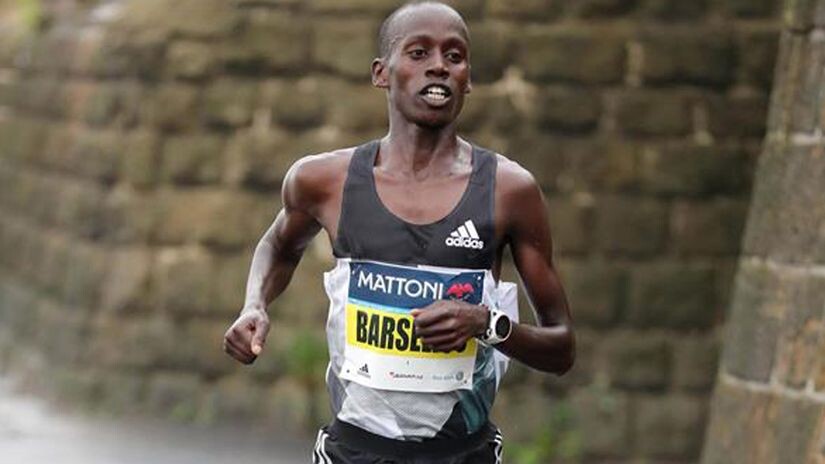
“Full commitment, perseverance, and self-esteem are some of the traits that might characterize an athlete who has really worked hard despite, in the end, not being a number one. In his own way he is a champion anyway.”
The camp is about 2,000m above sea level in the Great Rift Valley. Sharing household chores, they normally run twice a day, rising early in the morning to have coffee before setting out for their first run. Their post-run breakfast menu often includes tea, bread, fruit, and eggs. Normally runners will stay Monday to Friday at the camp for convenience and to minimize distractions. There is a television in the camp and Kipyego says he enjoys watching Nigerian movies in his spare time. They would spend weekends with their families but Barselius is taking a different approach with a Toronto victory in his sights.
“My home is about three kilometres from the camp,” he explains. “I have two children, boys, The first boy is called Dayton Kigen and the second, Dalton Kipkemboi. I used to go home sometimes but nowadays, because I am focusing on Toronto, I am staying in the camp. “I miss them but I call them and speak through video calls. My wife knows I am focused on the race [the TCS Toronto Waterfront Marathon] for some time and then I will go home after the race.”
In his absence, his wife Nahum Jelagat not only looks after the children but also takes care of the small farm Kipyego is investing his money in. “Yes, I have a farm. I am a farmer,” he says with a smile. “My wife now is looking after the farm because I am focusing on this race. She is the full manager. I have a tea plantation I grow maize and vegetables. And cows. We have cows.”
Amongst the elite training group are several athletes training for a fall marathon including Benson Kipruto who won the 2018 Toronto Waterfront Marathon and then finished fourth the following year in a personal best of 2:05:13. While Kipruto will run in Chicago, he has been encouraging to his training partner about what to expect in Toronto. The intel he has provided to Kipyego is evidently very positive.
“I just heard that it is a flat course and is a good race,” Kipyego responds when asked what he knows about the Toronto event. “I asked Benson when he won the race. I am training with him now.
“Yes, it is possible [to beat the record]. If the pacemakers set a good pace, we will run well and beat the course record.”
It is presently part of the rainy season in East Africa and heavy rain can sometimes complicate training. The dirt roads can become muddy quagmires causing the group to switch training venues. In this case, they will run later in the morning to avoid the worst of it. Still, it’s business as usual for the group.
“Training is good,” Kipyego reports confidently. “Every week we run 180km with some speed work and some long runs. Last week, I ran 40km for my long run. But every day I run 24 or 25km. I am feeling confident. My body is responding well now. I am ready to run that race in Toronto very well.”
Kipyego has never raced in Canada before nor has he faced his countryman, Philemon Rono.This matchup promises an intriguing chapter of the 2022 TCS Toronto Waterfront Marathon.
About the TCS Toronto Waterfront Marathon
One of only two World Athletics Elite Label races in Canada, the TCS Toronto Waterfront Marathon is Canada’s premier running event and the grand finale of the Canada Running Series (CRS). Since 2017, the race has served as the Athletics Canada Canadian Marathon Championship and has doubled as the Olympic trials. During the 2021 event, participants raised over $3.08 million for 151 community charities. Using innovation and organization as guiding principles, Canada Running Series stages great experiences for runners of all levels, from Canadian Olympians to recreational and charity runners. With a mission of “building community through the sport of running,” CRS is committed to making sport part of sustainable communities and the city-building process.
(09/08/2022) ⚡AMPby Paul Gains
TCS Toronto Waterfront Marathon
The Scotiabank Toronto Waterfront Marathon, Half-Marathon & 5k Run / Walk is organized by Canada Running Series Inc., organizers of the Canada Running Series, "A selection of Canada's best runs!" Canada Running Series annually organizes eight events in Montreal, Toronto and Vancouver that vary in distance from the 5k to the marathon. The Scotiabank Toronto Waterfront Marathon and Half-Marathon are...
more...Wall yoga for runners: Try these simple stretches to gain mobility and ease tight muscles
Wall yoga is perfect for those times you need to loosen up tight or achy muscles, but don’t have the motivation to leave the house (or the floor). Having even a very basic yoga practice can be complementary to your running program, and will help alleviate muscle pain and improve mobility–and the wall can be the ideal free tool.
While you still get the benefit of a deep stretch, the wall does most of the work for you. Here are three stretches you can take to the wall this evening, and modifications to help you adjust each pose to work for your body.
Legs up the wall
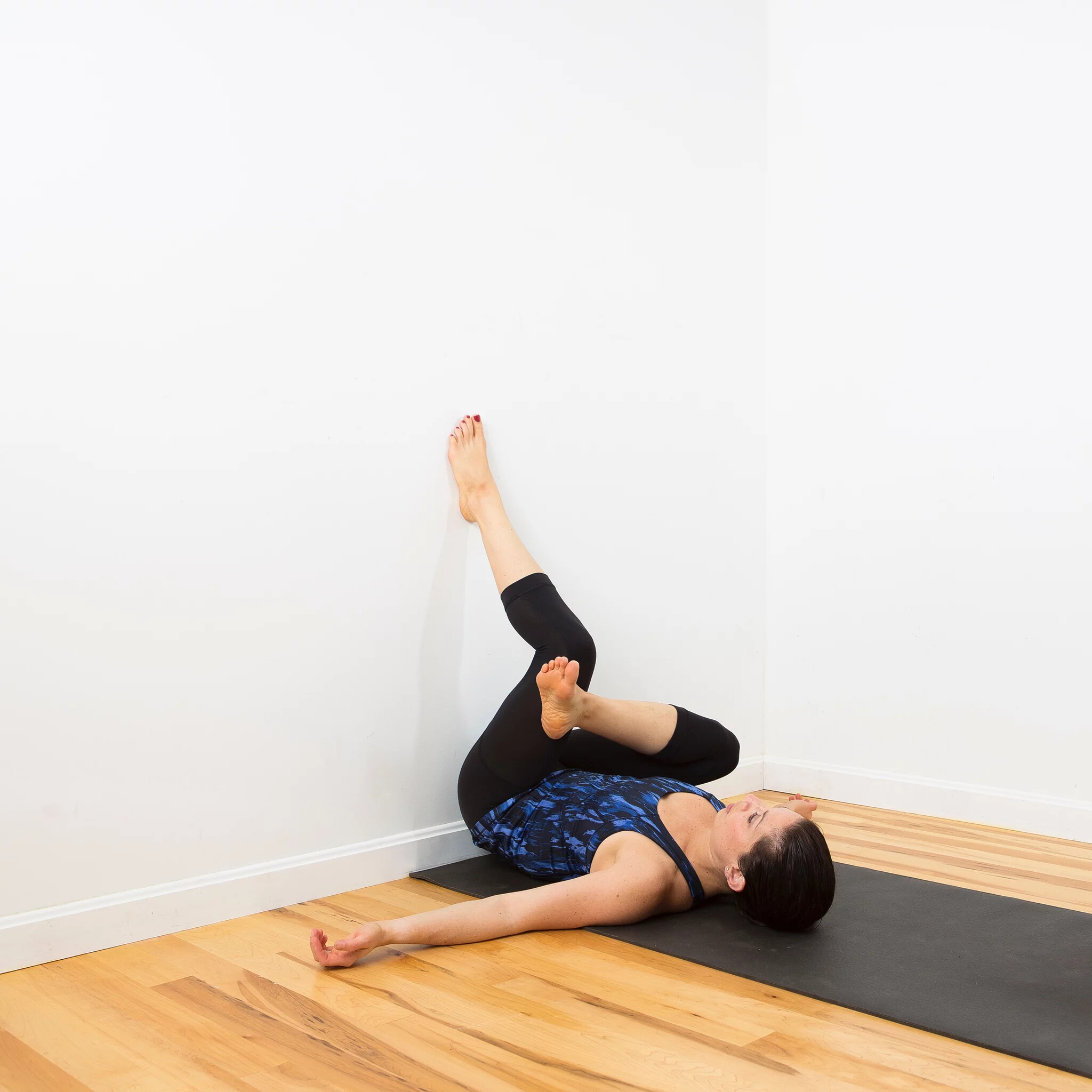
Legs up the wall is the go-to pose for athletes. This inverted pose helps with your overall recovery by increasing blood circulation and draining any fluids that are pooling in your legs, while also stretching your hamstrings and giving lower-body relief.
While you’re giving that lower body both some care and increasing mobility, you’ll also be soothing your mind–studies show that legs up the wall pose has a calming effect on the central and peripheral nervous systems.
How to do it
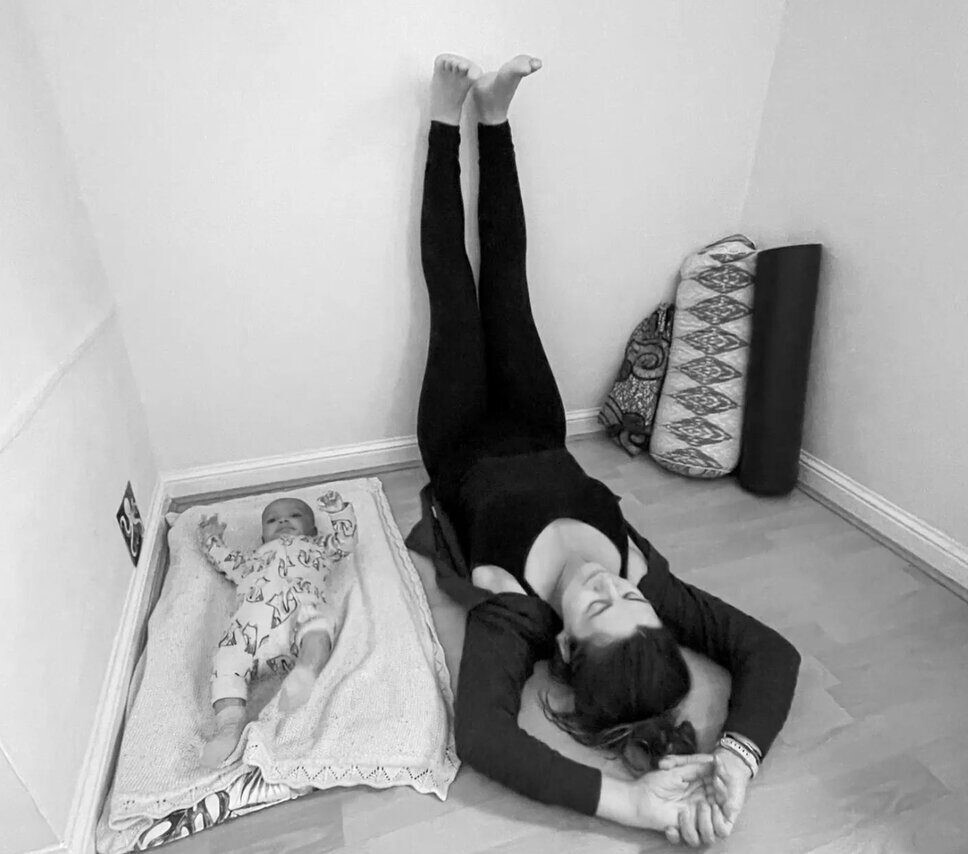
Sit with your right side against the wall, with bent knees and your feet drawn in toward your hips. Swing your legs up against the wall as you turn to lie flat on your back.
Place your hips against the wall or slightly away, and place your arms in any comfortable position–stay here, adjusting as needed, for up to 20 minutes.
Modifications: place a pillow or rolled-up blanket beneath your hips if that feels more accessible, feel free to keep knees bent and feet planted, or straighten one leg at a time.
After you’ve spent some time in each pose, release slowly by gently pushing yourself away from the wall. Relax on your back for a few moments before hugging your knees into your chest and rolling onto your side, and taking your time to eventually find your way upright.
Wall butterfly
Butterfly pose targets the low back, hip, and thigh muscles, and helps reduce soreness, encourage flexibility, and increase range of motion.
How to do it
If you aren’t already in legs up the wall pose, find your way back there, bringing hips close to the wall and sending legs upwards.
Bring the soles of your feet together, creating a diamond or butterfly shape. Bend your knees and allow your feet to come toward your hips. Try holding for five minutes, but feel free to stay in longer if you’d like.
Modifications: to deepen the stretch, gently press your hands into your thighs.
Figure four stretch
Figure four stretch, sometimes called ‘thread-the-needle’ stretch, targets two notoriously tight areas for runners–glutes and hips. The stretch you feel very deep in your glutes is a muscle called the piriformis, which runs from the base of the spine to the top of the femur and helps with hip rotation and stability.
How to do it
Lie on your back with your feet flat on the floor. Bend your right knee and place your outer ankle at the bottom of your left thigh, just above the left knee. Slowly bend your left knee and press your foot into the wall, and then lower your left foot until your shin is parallel to the floor (or however close to parallel you need to bring your foot to feel a stretch).
You’ll feel a stretch in your right hip and thigh. Hold this position for five minutes, and repeat on the opposite side.
Modifications: adjust the placement of your foot against the wall, bringing your heel towards your hips to deepen the stretch.
Yoga studios can be intimidating, particularly for those new or returning to yoga. I’ve taught yoga for years and I still find it disconcerting to practice in a new place.
I love wall yoga because I can move gently through a relaxing routine in my pajamas, listen to my own tunes or practice in silence, and feel calm and re-energized post-session. Add some regular yoga breaks to your running training, and you’ll start to notice both physical and mental benefits.
(09/08/2022) ⚡AMPby Keeley Milne
John Hancock dropping Boston Marathon sponsorship after 2023 race
Insurance company John Hancock is saying goodbye to its role as sponsor of the Boston Marathon after nearly four decades.
It's a relationship that the company said helped to raise $426 million for charity over 37 years. The contract will end after the 127th running of the iconic marathon, which is scheduled for April 17.
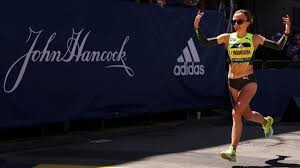
"Our contract with the Boston Athletic Association (B.A.A.) was expiring in 2023 and after careful review we have chosen not to renew our principal sponsorship of the Boston Marathon after next year’s race," a John Hancock spokesperson said in a statement. "We are honored to have served as a steward for this historic race and thank the B.A.A. for their continued partnership over the years. We are looking forward to the 2023 race as principal sponsor and will work with the B.A.A. to ensure a smooth transition to its next partner."
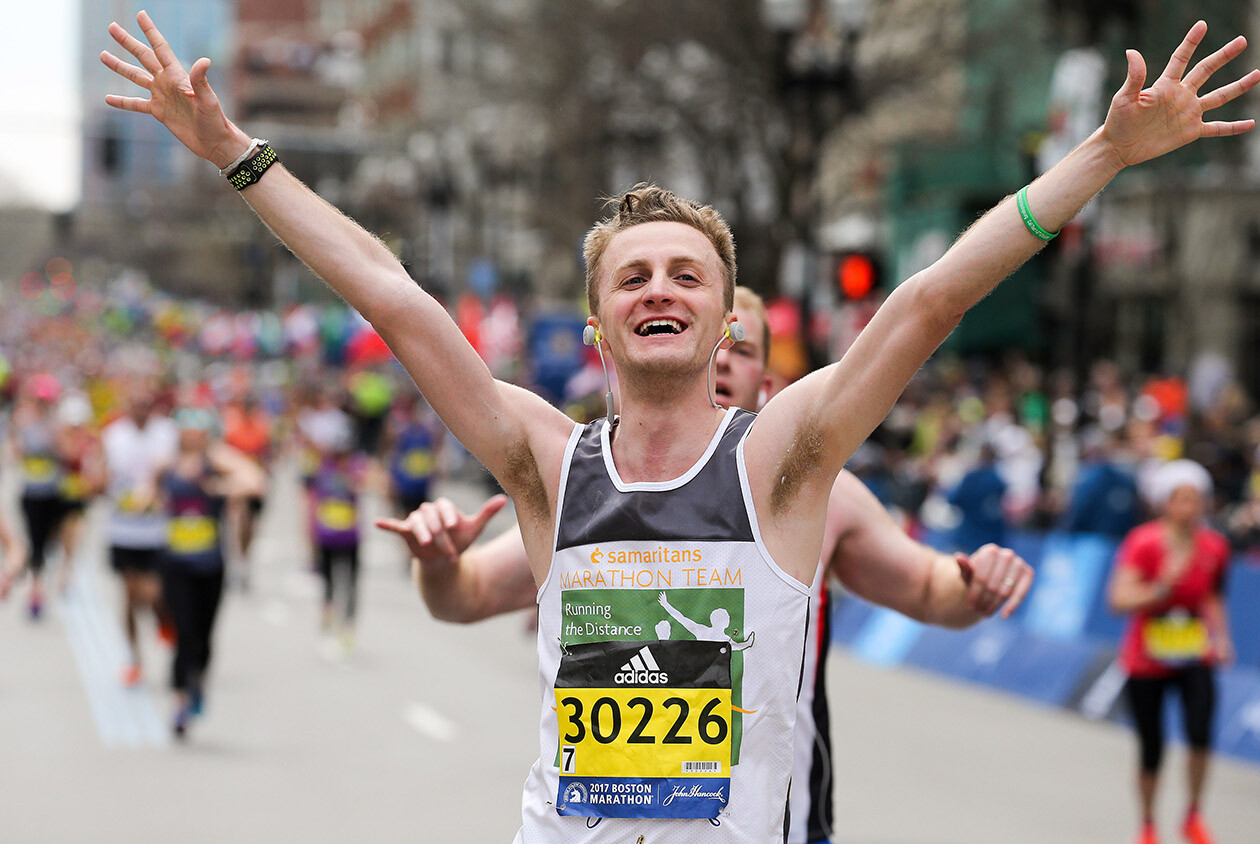
"The B.A.A. thanks John Hancock for 37 years of partnership, and we continue to work hand in hand in advance of next April’s 127th Boston Marathon," BAA officials said in a written statement. "We're excited to find our next Boston Marathon principal sponsor, and look forward to partnering with an organization who shares our passion for athletic excellence, community engagement, and growing the Boston Marathon to new heights."
John Hancock is also on the verge of ending another decades-long partnership with an iconic Boston institution. The company's lighted sign over the Fenway Park outfield will be coming down at the end of this season, as that 30-year partnership comes to an end.
Starting in 2023, coverage of the annual Massachusetts Patriots' Day race from Hopkinton to Boylston Street will be handled locally by WCVB Channel 5 and nationally by ESPN.
Full statement from the BAA:
"John Hancock has served as principal sponsor of the Boston Marathon for nearly four decades, helping to make the Boston Marathon the global and iconic race it is today. Together with the B.A.A., John Hancock has helped elevate all aspects of our event, from world-class professional athletes to fundraising for hundreds of non-profit programs. The B.A.A. thanks John Hancock for 37 years of partnership, and we continue to work hand in hand in advance of next April’s 127th Boston Marathon.
"At the B.A.A., our commitment to expanding events and creating more running opportunities has never been greater. We're excited to find our next Boston Marathon principal sponsor, and look forward to partnering with an organization who shares our passion for athletic excellence, community engagement, and growing the Boston Marathon to new heights. For 126 years, the Boston Marathon has been the world’s preeminent and most historic marathon. We're enthusiastically eager to embark on the next generation of Boston Marathon partnership."
(09/07/2022) ⚡AMPBoston Marathon
Among the nation’s oldest athletic clubs, the B.A.A. was established in 1887, and, in 1896, more than half of the U.S. Olympic Team at the first modern games was composed of B.A.A. club members. The Olympic Games provided the inspiration for the first Boston Marathon, which culminated the B.A.A. Games on April 19, 1897. John J. McDermott emerged from a...
more...Five Activities to Boost Your Post-Run Recovery
Runners have become accustomed to incorporating a warmup routine into their training. After all, warming up is an easy way to ward off injuries and a necessity for getting the most out of higher intensity workouts. For these and other reasons, many of us have developed our own unique warmup ritual that we customarily implement at the beginning of our runs. These warm up activities become such an integral part of our routine that we often perform them without thinking twice about it. But how many of us do the same after a workout?
In this article, I want to make the case for developing a post-run recovery ritual to help you transition out of workout mode. Time-crunched athletes often find themselves rushing from a workout to one of life’s other commitments. This leaves us moving from one activity to another with little time to relax in between. But for the yang of every workout or activity, we need those complementary moments of yin to absorb the training and destress. Going through the day feeling high strung all the time is a recipe for poor health and less than optimal fitness.
Make it a Ritual

The best way to incorporate some post-run recovery time into your workout routine is to ritualize it. By that I mean find a habitual practice that works well for you and becomes more or less automatic. It does not need not be long, even a few minutes will do. The point is to make that a time to relax and begin the recovery process.
As a high school runner and later as a high school track coach, I came to realize how important that post-practice de-stressing time could be. After the end of a workout, runners might find a grassy spot on the track infield to relax and socialize. In those moments, some athletes stretch, some grab a water bottle or snack, others get out the foam roller or massage stick, and others simply lie on their backs and watch the clouds drift by. Different individuals have different rituals, but the overall effect is to provide a valuable transition out of workout mode.
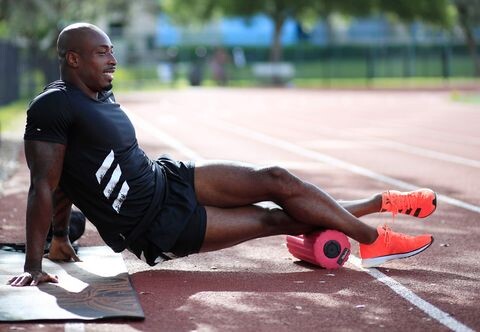
As adults, whether we do solo or group workouts, we can still tap into that same post-track practice mood. Before rushing off to the next commitment, take a few minutes to relax, socialize or simply reflect upon the workout. To ritualize that time, it is helpful to find some sort of activity to perform. Consider developing longer and shorter versions of your ritual. On days when time is of the essence, at least perform the shorter version. On days when you have more time to spare, do the longer version.
Recovery Activities
1. Stretching
Choose a set of stretches specific to your needs. Post-run, a short ritual might involve stretching the calves and quads; a longer ritual might also include the adductors ( the butterfly stretch) and psoas. Aim to hold each stretch for at least 30 seconds and up to three minutes.
2. Yoga poses
Complement your stretching with yoga poses. The warrior I pose (virabhadrasana I) benefits runners by targeting the hip flexors. From there, you can move into the warrior II pose (virabhadrasana II). The standing forward bend (uttanasana) is a good way to gently stretch the hamstrings and loosen the lower back. The squat pose (malasana) is essential for keeping the ankles, hips, and back flexible. The legs-up-the-wall pose (viparita karani) aids the movement of blood from the legs after a run. For a more meditative pose or to simply take some time to watch the clouds drift by, try the corpse pose (savasana).
3. Foam roller and massage stick
If you have these tools with you, take some time to roll out your lower back, iliotibial band, quads, hamstrings, and calves. In addition to a foam roller and massage stick, use a lacrosse ball to target trigger points (e.g. in the back or hips) and a golf ball to target the plantar fascia on the bottom of the feet. If you don’t have these tools handy, you can simply use your thumb or hands for some light self-massage to target areas like the calves, hips, and lower back.
4. Water and/or snack
Rehydrating and refueling are, of course, important to include in your post-run ritual. This could simply involve grabbing a water bottle to sip from while doing some of the activities listed above.
5. Revisiting your warmup routine
If you use drills or dynamic stretches as part of your warmup routine, you can also revisit those in your post-run ritual.
Even the busiest of runners needs to add a post run recovery ritual to their training. Doing so will help all runners recover faster and stay injury free so you can stay on track to meet your goals.
(09/07/2022) ⚡AMPby Adam Hoges
Jakob Ingebrigtsen wants to run a marathon
On Wednesday at the Diamond League Final press conference in Zurich, the Olympic 1,500m champion, Norway’s Jakob Ingebrigtsen, expressed interest in seeing what he could do in the marathon in the next three to five years.
Ingebrigtsen told British running legend and interviewer Steve Cram that he wants to run a fast marathon. Immediately, Cram laughed and said, “Why on earth do you want to do that?”
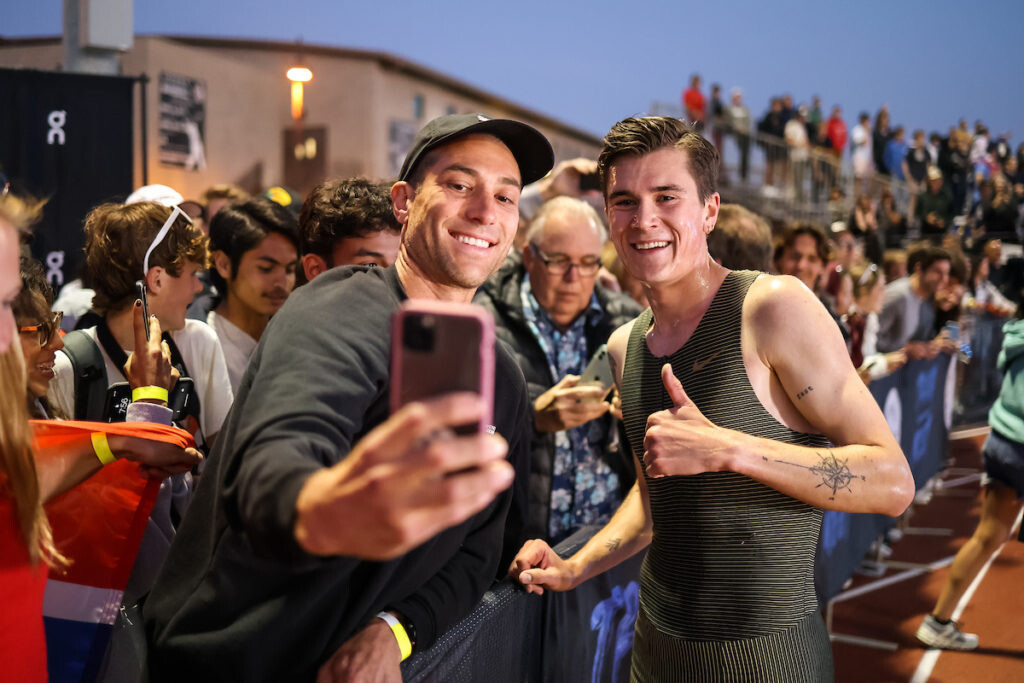
“I love the sport and running,” Ingebrigtsen replied. “I see people running well in the marathon, which inspires me to be able to see what I can do. Training for the marathon doesn’t seem fun, but I’ll have to try it.”
Earlier this summer, Ingebrigtsen chatted about doing the triple (1,500m, 5,000m and 10,000m) at the 2023 World Championships and 2024 Olympic Games. When the question arose, Ingebrigtsen said he’s always thinking and planning three to four years ahead.
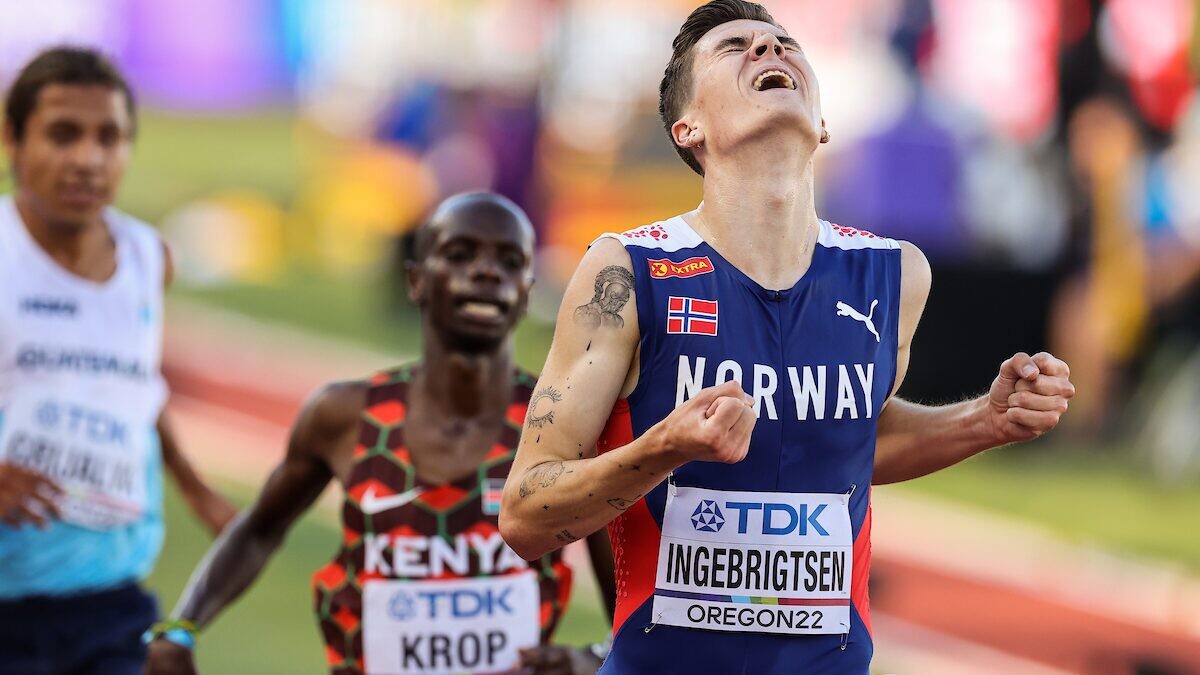
The 21-year-old gave no exact time or future race plans, but said he’s enjoying the 1,500m right now. “One thing I like about the 1,500m is that it’s only a three-and-a-half-minute race.”
Ingebrigtsen will look to win his first Diamond League title in the men’s 1,500m on Thursday afternoon. Last year, he finished second to Kenya’s Timothy Cheruiyot.
(09/07/2022) ⚡AMPby Marley Dickinson
Ten Running Excuses and How to Beat Them
Sometimes we have the best intentions to run, but something gets in the way: Our busy schedules, the weather, or even that we just we can't muster the motivation to get out there. Here's how to talk yourself back into your running shoes when you have plenty of excuses to not run.
1.- No Time to Run
Lack of time is one of the most popular excuses for skipping runs. Work, commuting, family obligations, maintaining a home, even just getting enough sleep: They all take time.
What to Do
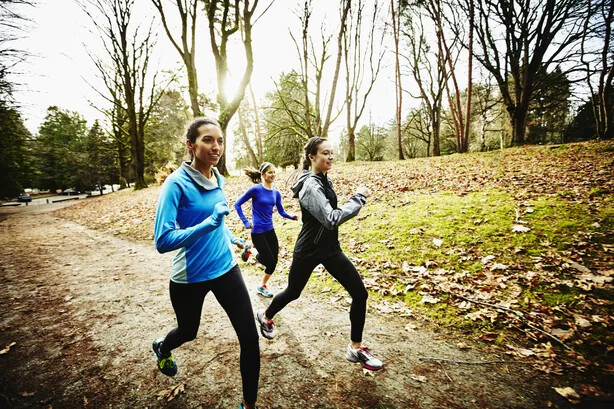
When you block out time on your calendar for a run, it almost always happens. Just like you schedule a meeting for work or a doctor's appointment, schedule your runs. Prepare for them by changing into your running clothes beforehand and making sure you have everything you need.
Analyze your schedule and figure out what you're doing that's not contributing to a good quality of life. Look for things that you can cut out without regret. For example, are you spending time at night surfing the Web, social media, or TV? Use that time to run (you can even multitask by catching your favorite shows while you're on the treadmill) or go to bed earlier and run in the morning. You may be surprised at how gaps in time for running appear once you start weeding out the time-wasters or undesirable to-dos in your life.
2.- Too Tired to Run
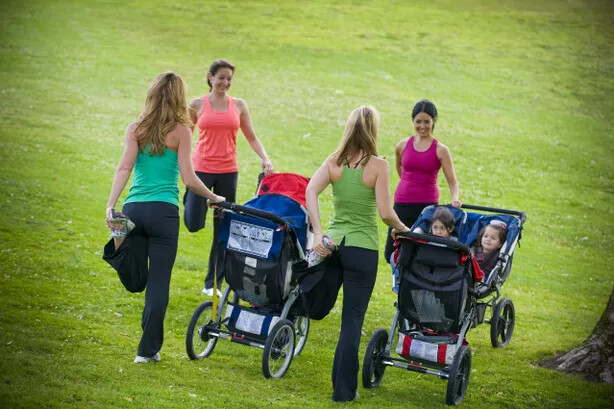
When you're feeling sluggish, it's hard to get motivated to get up off the couch and out the door. But going for a run will energize you and make you feel better.
What to Do
You may be tired because you have low blood sugar, so eat a snack or light meal at least an hour before running. If you find yourself feeling really tired as you start your run, start off by walking and then pick it up slowly. Commit to a short run (just 10 or 15 minutes). You will likely find that once you've done that much, you feel good enough to continue. Try to remember this next time.
Extreme tiredness with a normal sleep schedule may be a sign of a nutritional deficiency, such as low iron, so talk to your doctor if you find yourself frequently feeling tired even though you're sleeping well at night.
3.- Too Sore to Run
This one is tricky, because running with an injury could make it worse. But it depends on where the injury is and how severe it is. Sometimes you can provide additional support but still keep running. If your breasts are sore, for example, a good sports bra should help. For sore feet, the right pair of shoes is often. but not always, the answer. For muscle soreness, say as the result of an especially strenuous run or workout, movement will help, so try to walk or stretch. Sore joints? Be cautious.
What to Do
If you have knee pain, in many cases you will need to take some time off from running. You can treat some injuries yourself, but often you will need to see a doctor or physical therapist. If you have hip pain, you may also need to avoid running until you are treated.
4.- Bad Weather
Unless you're lucky enough to live somewhere with a perfect climate, you will face bad-weather days that can make running harder: Too cold, too hot, too wet, too icy.
What to Do
Remember the saying: "There's no such thing as bad weather—just bad clothes." If you're dressed properly and prepared to deal with less-than-ideal running weather, you can still go for a run, and even enjoy it. But do take precautions for running in the cold, heat, and rain.
5.- Too Unmotivated to Run
Although we'd like to say that our busy schedule or lack of energy is our excuse for not running, sometimes the culprit is just not feeling like doing anything. Don't be scared to reach out to your friends and family members who also run and ask them for help. Chances are they've also struggled with bouts of lack of motivation. If your paces and schedules match up, make plans to run together so you can push each other to your potential.
What to Do
Even if your friends or family members don't run, you can still tell them about your running plans. Knowing that someone may be asking you, "How was your run?" can prompt you to get up off the couch.
Another trick to beat the "running blahs" is to redefine your run. Instead of thinking, "Ugh, I have to run today," turn that around and say, "I'm so lucky that I get to take a break from my crazy work and family life and go for a run today."
6.- Bored with Running
It's easy to get stuck in a running rut. We get comfortable running the same routes or decide it's easier to just jump on the treadmill.
What to Do
Shake up your running routine by mapping out some new routes using tools such as MapMyRun. Give trail running a try. Run with a local running group or convince a friend to join you on a run. Or, sign up for some local races—this will force you to run someplace different and will help get you motivated.
7.- Afraid of Injury
Yes, running injuries do happen, so this is definitely a valid concern. But most physical activities carry some risk of injury, and everyone still needs to make exercise a part of their life.
What to Do
There are many preventive steps that runners can take to reduce their risk of injury. Getting the right running shoes for your feet and your gait is important. Regular strength-training is another excellent way to protect yourself against common running injuries.
8.- Not Motivated to Run
All runners go through some periods when they're lacking motivation. Maybe you feel like you aren't making much progress. Or you're coming off an injury and feeling tentative. Or you've just met a big goal, and haven't settled on a new one yet.
What to Do
One way to get inspired is to find a running group. When you know other people are counting on you to be at a workout, you're more likely to show up. Tthe social interaction and competition that comes with group training also help boost your motivation.
You may also want to consider signing up for a local road race. Having a race on your calendar is great motivation to stick to your running schedule.
Try planning rewards for your running progress, too. It helps to have small rewards, such as an iced coffee after a long run, and big ones, like a new running outfit after a race, to keep you going.
9.- Too Busy With Kids
It can be very tough to fit in a run when you're busy caring for your family. But it's important for you—and your kids—to do something you enjoy that makes you feel good. Remember that you're a role model for healthy behaviors. Make running a priority in your life and remember the importance of self-care and staying healthy.
What to Do
Schedule your runs and get your spouse on board to help with child-care responsibilities. And get creative and take advantage of opportunities to run. For example, if you're watching your kid's soccer game, run some laps around the field before or even during the game. Seek out fitness classes or running groups that are stroller-friendly so you can bring your little one along during your workout. Invest in a treadmill so you can fit in runs early in the morning, before kids wake, or in the evenings after they go to bed.
10.- Too Crampy to Run
Having your period (or PMS) can put a literal cramp in your running style. Or maybe you have other symptoms, like sore breasts, fatigue, or bloating.
What to Do
Try to push through and lace up your shoes. Remember that 12 weeks out of the year is a lot of time to miss out on all the benefits of running. Some exercise may very well relieve your symptoms. Be sure you have a supportive sports bra, drink plenty of water, and consider taking an over-the-counter pain reliever for cramps.
Another option: Try a running challenge, whether it's a run streak, a new race, or adding intervals to your regular route. You might just find your mojo again.
(09/07/2022) ⚡AMPby Christine Luff
Boost recovery time to become a stronger runner
Paying attention to rest and recovery now will help you build strength and stay injury-free.
If you prioritize rest and recovery all of the time, you won’t need so much of it: or so research suggests. Some runners have a strict off-season, where they only cross-train or go on easy runs during the late fall and winter months. Others run straight through the winter, interspersing their diverse training with dialed-in recovery and rest throughout the year. Here are a few tips on how to maximize rest and recovery throughout racing season, so that you don’t have to take a prolonged break from your sport.

Always take one rest day (minimum) per week
All runners are different, and your rest and recovery needs will vary depending on how much general life stress you have going on. Our bodies don’t log mileage or care about our Strava data–they accumulate stress. This includes mental and emotional stress, so if you have a lot going on in your life, you may need more recovery time. Coach and ultrarunner David Roche advocates for a minimum of one rest day per week, two for athletes with stressful life situations.

Rest for three days at the sign of a potential injury
“It’s better to be 99 per cent too overprotective than one per cent too underprotective,” says Roche. When in doubt, rest. If the signs of potential injury persist after three days, seek a medical opinion. Inserting three days in a row of rest at any point in your training when you’re feeling over-taxed in life or well-being can be an efficient, simple training boost.
You won’t lose fitness in such a short period, and three days is often enough time to catch up on rest or deal with other life issues. By the third day, you’ll probably be itching to pull on your shoes.
Lots of rest after hard efforts and big races
In a tough race, we push our bodies into supercompensation mode. This can be a fantastic way to reach the higher echelons of fitness, but an extraordinary effort involves appropriately matched recovery.
When we run much harder than usual, our bodies get a bit of a shock: supercompensation training is the act of dramatically increasing your training load for a short period of time and then compensating by going very easy and maximizing recovery. Make sure to take full days off, eat a lot of nutritious food (your body needs fuel to recover), and to ease back into training with gentle activities or easy runs.
(09/07/2022) ⚡AMPby Keeley Milne
Kidnapped runner Eliza Fletcher’s body found in Tennessee
Memphis police released a statement via Twitter on Tuesday morning reporting that they had found the body of Eliza Fletcher, the 34-year-old woman who was abducted while running near the University of Memphis campus on Sept. 2. Her body was found in the rear of a vacant duplex apartment building 10 km from where she was abducted, but the cause and location of her death have not been determined.
According to a police affidavit, Fletcher went jogging at around 4 a.m. on Friday. At 7 a.m., when she had not returned home, her husband reported her missing. A male civilian walking by found her cellphone and a pair of Champion-brand sandals on the street in the area. He turned the items over to Fletcher’s family, who gave them to police.

Fletcher was seen last on local surveillance footage on Friday morning. Surveillance footage also showed a black GMC passing and then waiting for the victim to run by, according to the affidavit. A man exited the car and aggressively ran toward the victim, forcing her into the passenger’s side of the vehicle. The car then sat in a parking lot for around four minutes before driving away.
Cleotha Abston, a 38-year-old previously convicted kidnapper, who was released from prison in 2020 after serving 19 years, was arrested on Saturday and charged with aggravated kidnapping and tampering with evidence, according to Memphis police.

The DNA found on the Champion sandals left at the crime scene was a match for Abston, and surveillance footage also showed him wearing the same sandals the day before the abduction.
After the body was identified as Fletcher’s, Abston was charged with first-degree murder and first-degree murder in perpetration of kidnapping.
Fletcher was a mother of two and a preschool teacher in the Memphis area.
(09/06/2022) ⚡AMPby Marley Dickinson
Snapchat teases new augmented-reality running glasses
These glasses will allow you to see and train with virtual training partners, plus experience light-based pacing technology.
Snapchat has released a video teasing a few new updates on their augmented-reality (AR) glasses called “Spectacles,” with images and a video of users wearing the glasses on the track and while running.
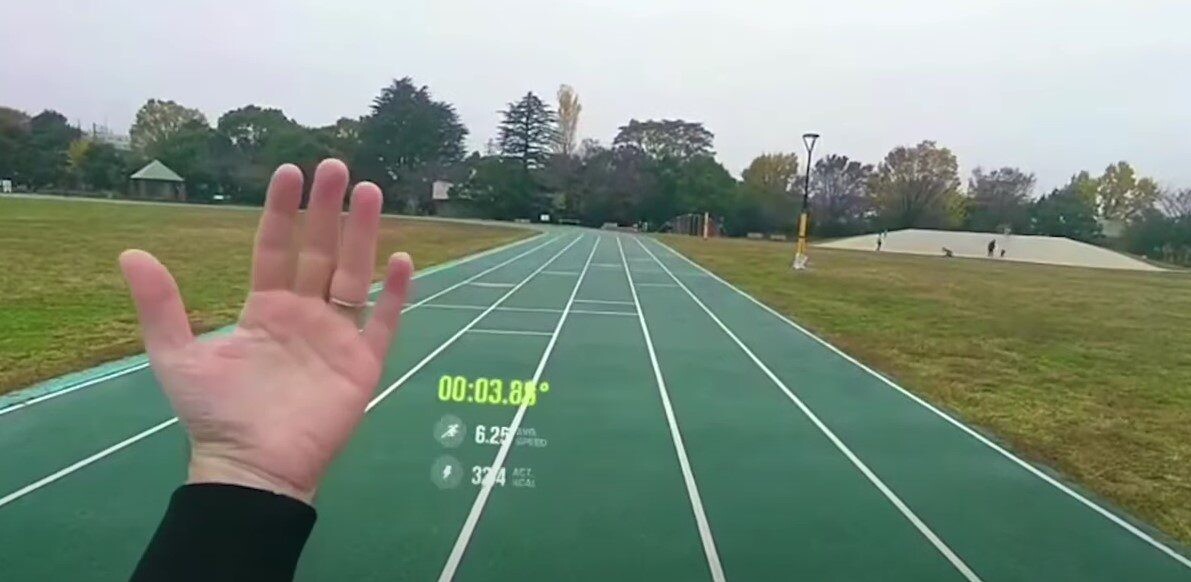
According to tech website UploadVR, these glasses will allow you to see and train with virtual training partners and experience light-based pacing technologies. The lights will help runners control and follow the speed that they are running. The glasses are also equipped with the standard pace, speed and distance information.
In case you are unfamiliar with augmented reality, it is a technology that superimposes computer-generated images into a user’s view of the real world. Snapchat is known for its AR lenses on phones, which overlay art on users’ selfies.

Currently, the glasses are only available for beta testers and creators. The multi-billion dollar social media company has not announced when these glasses will hit the open market, but UploadVR predicts within five to 10 years.
The Spectacles are a bit heavier than the usual pair of running glasses, coming in at 134 grams, approximately half the weight of a running shoe. While wearing these glasses, you can easily share your experiences with all your friends using the Snapchat app.
There is no doubt that these glasses will be a practical training tool for those looking to run with a virtual friend or hit the right pace in their next race.
We can’t wait for the debates about whether these performance-enhancing glasses will be allowed in your local 5K.
(09/06/2022) ⚡AMPby Running Magazine
The 10 Commandments Of Running On The Track
The rules of the track are a bit different than the rules of the road, so one runner has penned these commandments to teach track etiquette.
Track: a five-letter word that strikes fear into the heart of almost every runner. You cast your eye across the oval and everyone out there looks like they know exactly what they’re doing, flexing svelte muscles and then proceeding to run at speeds so fast you get whiplash just watching. Then you look at yourself: an awkward track virgin, stumbling out onto that giant round stage for all to see.
I, too, was once that awkward track virgin. All I could think was, Everyone will be watching me. Running. The whole time. I was certain it would be one of the most humiliating experiences of my life.
But…it wasn’t. Honestly. I swear. In fact—stay with me here—it actually turned out to be fun, and I eventually came to enjoy the rubberized revolutions. Where else can you run with multiple friends, regardless of pace, without losing someone? There are no traffic lights slowing you down, no potholes to watch out for, and best of all, no wrong turns. (It’s a 400m circle. If you manage to get lost, you’ve got other problems.)

The truth is, what deterred me most at the start of my track-running days were the “unspoken rules.” Therefore, after many, many visits, I’ve put together this simple list. They’re easy to follow and—I hope—will ease your fears and get you out there sooner rather than later. Because the track will make you faster, I promise!
1. Thou shalt warm up before starting a workout (and cool down after!).
You know those “goofy” people skipping in slow motion and kicking themselves in the butt? Doing stuff you tell yourself you’d never do? Well, those “goofy” individuals are getting ready to run—and you should, too. It’s important to warm up before any run, but it’s especially important before a track workout, when you’ll push your muscles to their limit. Then, afterward, it’s a good idea to cool down, to keep your muscles from scrunching up into tight, sore little pretzels. Be good to your body and it will be good to you!
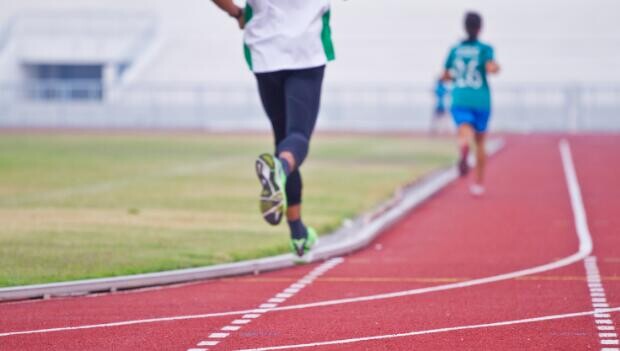
2. Thou shalt always run counter-clockwise.
It’s the most basic of directions to follow: unless you see a sign that says otherwise—and some tracks do have this—make sure you’re running counter-clockwise. Said another way: when you face the track from the “outside,” run to your right. And when in doubt, go with the flow.
3. Thou shalt only use the inside lane when running speed workouts.
If you’re at the track to get in easy miles or are recovery-jogging during a workout, please be mindful, because people running workouts will pass you, and they may not be the nicest about it. When you’re laying off the speed, the correct track etiquette is to stay to the outer lanes or the infield. (I learned this the hard way, by getting hollered at and nearly stepped on more than once.) The innermost lane, Lane 1, is the closest to being an “exact” distance—400m on most outdoor tracks, 200m on regulation indoor tracks—and when you’re running a speed workout, those inches and seconds matter!
4. Thou shalt not measure thy workout using GPS.
We all know that GPS can get confused sometimes and when you’re running in lots of tiny identically-shaped circles, it can get really confused. Do yourself a favor and turn off your GPS. Then, just count the laps: 400 meters, 800 meters, 1200 meters, 1600 meters (1 mile). Also, remember that when you race, you will not run a perfect distance, and the track is no different; however, the marked distances on the track are so close, you simply don’t need GPS. Run free, my friend!
5. Thou shalt adhere to one’s workout and prescribed paces.
When you’re running in countless circles under the scrutiny of fellow athletes, it can be tempting to change things up; not to mention give in to that little bit of friendly competition. After all, you want to look like the fleet-footed runner you are! However, try to remember: You’re not at the track to show how fast you already are, you’re at the track to get faster. That means practicing distances and paces that might make you look “slow” or turn you into a heaving sweaty mess of speed demon. But when you finally step up to the starting line of your race—that’s when you’ll be ready to run like a rock star.
(Plus, there’s a bonus! You’ll often feel a bit better and run a touch faster when you run on the track, as opposed to the road. This is because the surface is made for your shoes to grip better, and the softer landing is easier on your joints. Faster running that feels easier? Yes please!)
6. Thou shalt always finish thy interval on a straightaway.
It’s physics: When you run around a bend, you twist your body, lean into the curve, and wind up off-balance. At the end of an interval, however, you want to be pushing your hardest to run your fastest, and to do that, you need your best running form—which has to be totally balanced. Therefore, always finish on a straightaway. Every. Single. Repetition.
7. Thou shalt give verbal warning to those blocking thy path.
If you are running in Lane 1 and find yourself approaching a slower runner from behind, give that person ample notice to move out of your way. Please, however, avoid the reflex phrases that we all have: “MOVE!” “Out of the way!” “Watch out!” The best phrases to call out are “track,” “on your left,” or “on the inside.” And if you hear any of these phrases shouted at you, don’t list lazily to the right; move right immediately, because they are coming in hot! (I once moved left instead and, well, it wasn’t pretty.)
8. Thou shalt never stand motionless on the track.
If you must stop moving, step off the track. It’s common courtesy, and also practical: you don’t want to cause a collision. Imagine if cars just stopped motionless in the middle of the freeway! Also, even if you manage to avoid a collision, if you stand in the middle of the track and force runners to go around you, you will get a dirty look. Probably more than one. So do what you will, but don’t say I didn’t warn you!
9. Thou shalt leave thy earphones at home.
To go back to the cars metaphor, it’s the same reason you don’t wear earphones while driving: When a bunch of cars are maneuvering around each other at high speeds, every driver needs to be fully aware of what’s going on. The same applies to runners on a track. Don’t be the cause of a pileup.
10. Thou shalt encourage thy fellow runners.
Even if every runner on the track is doing a different workout, we’re all enjoying this suffer fest together—so let’s help each other out. A simple high five or “looking strong” can make all the difference—especially when you need it the most.
(09/06/2022) ⚡AMPby Allison Goldstein
Heart of America Marathon celebrated 63rd annual year
Boone County’s Heart of America Marathon celebrated its 63rd annual race year Monday morning, making it the second oldest continuously running marathon in the United States.
The race director Kathy Lee said the Labor Day marathon put on by The Columbia Track Club is rooted in history.
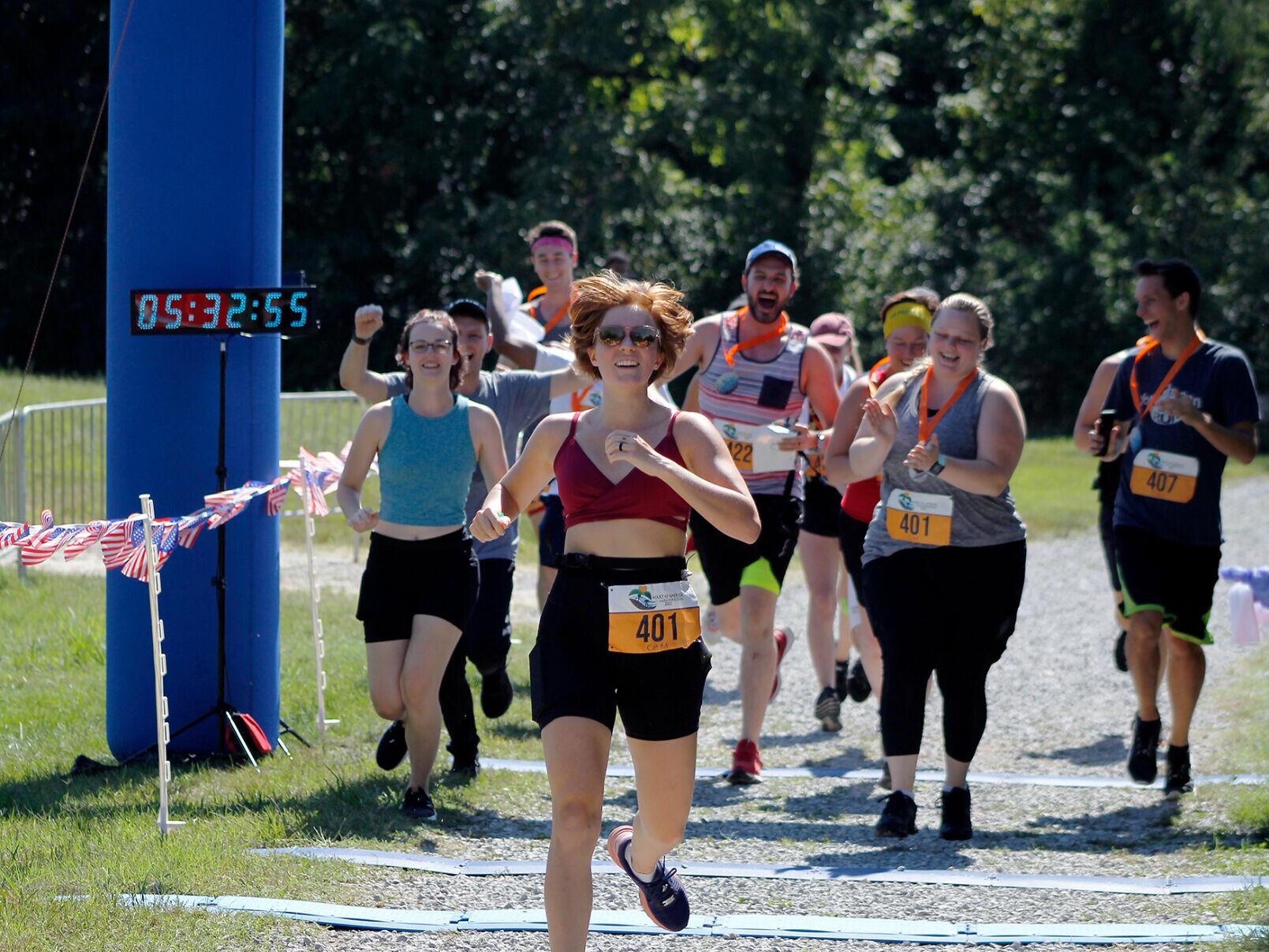
“It’s been going every year since 1960 starting right here in Columbia,” Lee said.
Lee said people travel far and wide to race in the Heart of American Marathon. She said in previous years, they’ve had runners from overseas. However, this year, the farthest runner was from Alaska.

She said the challenge is what brings people from all over to the mid-Missouri marathon.
“This is a bucket list marathon, it really is,” Lee said. “Because we advertise heat, hills and humidity, it’s tough. It was rated on RavesReviews as one of the toughest marathons in the country. Some people like the challenge,”
Thomas Sinnott is a Pennsylvania native who made the journey to Columbia to take part in the 26.2 miles.
“Well, I’m a 50-stater. There’s a few of us that try to run marathons in as many states as possible,” Sinnott said.
Missouri is Sinnott’s 32nd state in his journey to 50.
He said he was most looking forward to the race, seeing a new part of the country and meeting like-minded runners.
However, mid-Missouri offers humidity Sinnott wasn’t particularly looking forward to.
“The thing I dread honestly, this is a humid part of the world. So, without too much detail, sometimes it’s the chaffing and the grinding, that makes for an unpleasant rest of the day,” Sinnott said.
Sinnott was joined by almost 250 fellow runners taking part in the Heart of America Marathon.
Lee said there is a ton of preparation that goes into each year’s race.
“In fact, we’ll start on Tuesday to prepare for next year’s marathon,” Lee said. “It takes months.”
At the finish line, there was a pizza party for runners and volunteers, a masseuse and a chiropractor for the runners, and all participants received a medal.
(09/06/2022) ⚡AMPby Elise Person
Heart of America Marathon
This annual Labor Day race takes runners through the city of Columbia, Missouri. Our awards: Framed posters to overall male & female winners; running shoes to overall winners and first age 40+ male and female; plaques to first 3 males and females in age groups 0-24, 25-29, 30-34, 35-39, 40-49, 50-54, 55-59, 60+; medallions and T-shirts to all finishers. ...
more...Former boxing champ Sinyabi now targets Cape Town Marathon after he finished his debut Comrades Marathon
Retired two-weight SA champion Mabhuti “Mcman” Sinyabi is now targeting Sanlam Marathon which takes place in Cape Town next month.
This follows after he finished his debut Comrades Marathon inside nine hours.

Sinyabi – who recoded nine defenses of the SA junior-featherweight belt – was awarded with the Bill Rowan medal for his achievement in the 90km ultramarathon in KZN. Bill Rowan won the first Comrades Marathon in 1921, in 8 hours and 59 seconds. This sparked the idea for the medal in his honor, introduced 2000 to recognize runners who finish the Comrades between 7:30:00 and 8:59:59.
“I went there and executed my game plan well; everything just went well,” said Sinyabi.
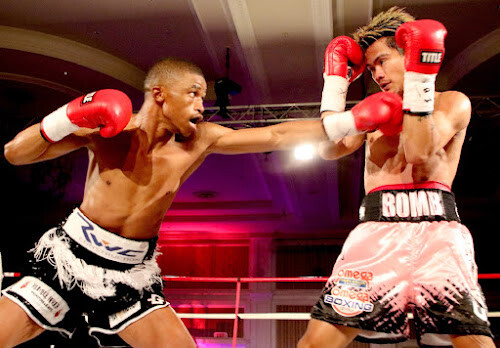
By the time he retired from boxing in 2016, Sinyabi had added the national featherweight title in his collection in 2015. His pro career record is 29 wins and five losses.
“Mentally and physically I was fit,” said the knockout artist who left 20 of his 29 victims in boxing gasping for air.
“I have got four titles as a boxer; so if I can have five medals in the Comrades Marathon, consistently winning the Bill Rowan medal I will retire. My focus is now on the Cape Town Marathon which takes place next month.”
If Sinyabi does not get the Bill Rowan medal again, he can run to finish and claim the Vic Clapham medal at the Comrades.
Known as the cut-off medal for those who finish after 11 hours but ahead of the 12th hour cut-off, the medal was named after Clapham. It is is said the Englishman who fought in World War I started the Comrades Marathon in 1921 by running between Pietermaritzburg and Durban.
(09/06/2022) ⚡AMPby Bongani Magasela
Cape Town Marathon
The Sanlam Cape Town Marathon is a City Marathon held in Cape Town, South Africa, which is sponsored by Sanlam, the City of Cape Town and Vital Health Foods. The marathon is held on a fast and flat course, starting and finishing in Green Point, near the Cape Town Stadium. Prior to existing in its current format, the Cape Town...
more...Kiera D’amato wins the women’s 20k in a record time in her new haven debut
Keira D’Amato sprinted across the finish line. She threw up her arms in celebration as her body ripped through the banner at the line.
The crowd cheered as the announcer declared her time of one hour, four minutes and 59 seconds a course record for the 20k race.
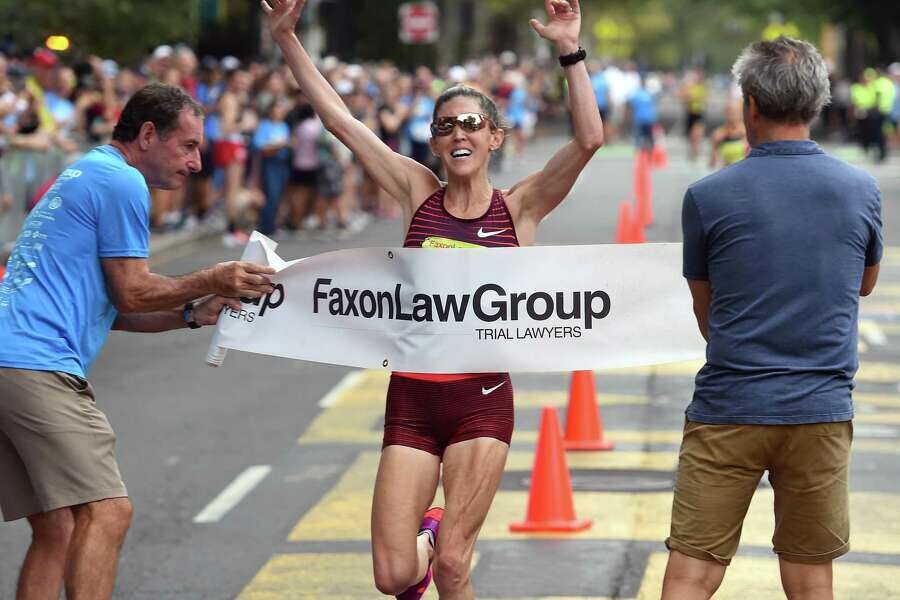
D’Amato looked left and found her mom, Liane, on the sideline holding a poster designed by D’Amato’s 6-year-old daughter, Quin. She ran over to her mom and embraced her in a hug.
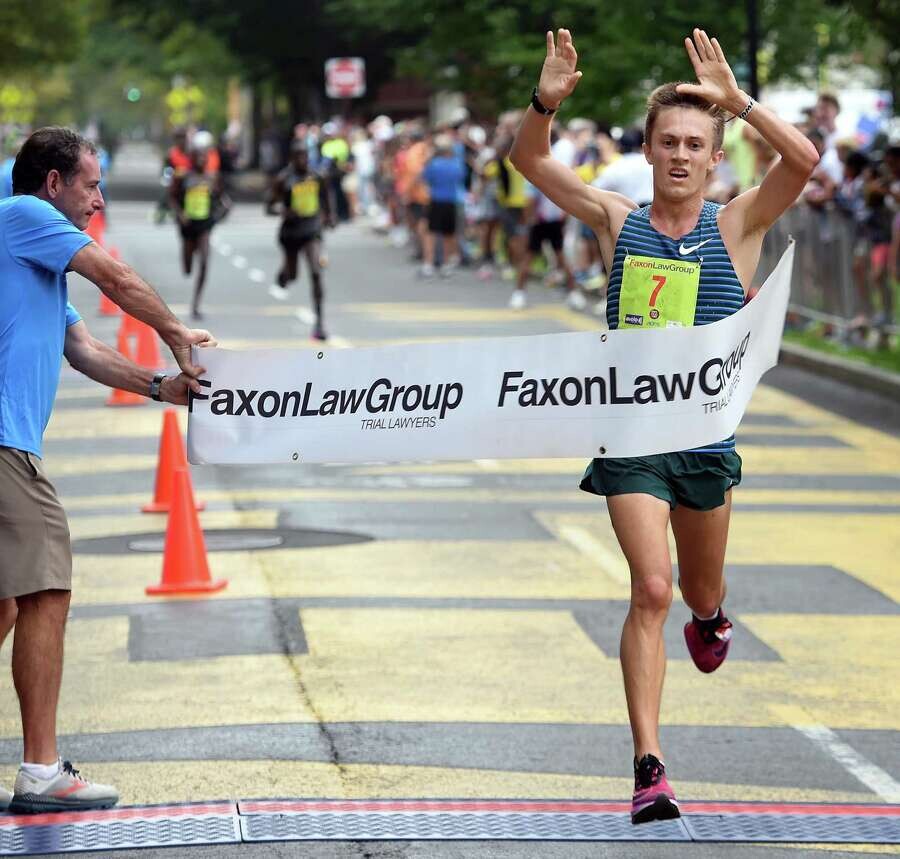
The 37-year-old walked away from running once before, yet she returned to the sport for moments like these.
“I kinda felt like running broke my heart and it wasn’t healed yet. But it was something in getting married and marrying into the D’Amato family, they’re a whole bunch of runners, that I learned how to love running again,” D’Amato said. “It’s with that love that I’m able to do things like this and I feel just so grateful to come out here and be with all these runners today.”
D’Amato won the USATF 20k National Championship Monday morning at the 45th annual Faxon Law New Haven Road Race by beating the course record from 1998 (Colleen De Reuck, 1:07:53). Emily Sisson, who finished behind D’Amato, also beat the former record, finishing Monday in 1:04:35. Monday was D’Amato’s debut in New Haven.
This year’s New Haven Road Race was limited to 4,500 runners across five different events, including the men’s and women’s 20k championship, a half marathon and a 5k.
Also having a standout debut in the 20k Championship was men’s winner Conner Mantz, who finished in 59:08. Mantz was followed by longtime Faxon Law competitor Leonard Korir in 59:13.
“It was a challenging race today,” said Korir, who’s raced in every Faxon Law New Haven Road Race since 2016. “Of course, I wanted to win, nobody wants to be second, but you know what, getting second is also good so I’m happy with that.”
D’Amato, from Midlothian, Va., and Sisson wasted no time separating themselves from the pack to start the women’s 20k. The two stayed together and crossed the Mile 3 mark at 15:31. Three miles later, there was a 300-meter-plus difference between them and the next women’s runner.
Sisson said the two traded off leading each mile until D’Amato began to pull away at Mile 8.
“I was like I’d rather win it than lose so I put a move in, and I could feel her hesitate a little bit so that gave me a lot of energy thinking like if I could just put in a couple more moves, like a quick, hard move, maybe I can take this,” D’Amato said. “It’s exciting, but it’s also terrifying to be in the front, like especially with somebody like Emily right behind you.
“Because I was like if I slow down at all, she’s gonna overtake me so it really kept me honest and kept me fighting through and I found more today than I even knew I had because of her, so I’m appreciative for sure.”
(09/05/2022) ⚡AMPNew Haven Road Race
Home of the Men’s & Women’s USATF 20K National Championship.The New Haven Road Race has again been selected to host the U.S. Men’s & Women’s 20K National Championship. The event expects to feature a number of past champions and U.S. Olympians.The New Haven Road Race is the LONGEST RUNNING USATF NATIONAL CHAMPIONSHIP! The race has been selected as Runner’s World...
more...Hellen Obiri to defend Great North Run title, Peres Jepchirchir in the mix
Defending champion Hellen Obiri and Olympic marathon champion Peres Jepchirchir will be in the women’s lineup for the Great North Run slated for September 11 in the streets of Newcastle.
Obiri won last year’s edition in 1:07:42. She is a two-time world 5000m champion and a two-time Olympic 5000m silver medalist. Obiri has a personal best time of 1:04:22 which she ran at the Ras Al Khaimah Half Marathon in February.
Jepchirchir, who will be making her debut, has a personal best time of 1:05.06 which she ran at the 2017 Ras Al Khaimah Half Marathon. She placed first during the World Athletics Half Marathon Championships in 2016 and 2020 in respective times of 1:07:31 and 1:05:16. Jepchirchir is also a former world half marathon record holder.
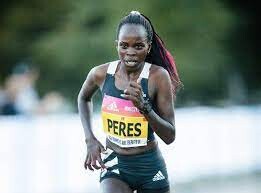
The Kenyan duo will be competing against the Ethiopian duo of Hiwot Gebrekidan and former Olympic 10,000m champion Almaz Ayana. Gebrekidan and Ayana have personal best times of 1:06:47 and 1:07:12 respectively.
Gebrekidan is the winner of the 2016 Copenhagen Half Marathon. She is also a former World Under-20 3000m silver medalist. Ayana won in the 2017 edition of the New Delhi Half Marathon. She is also a former world 10,000m record holder when she broke China’s Wang Junxia record during the 2016 Rio Olympics.

Charlotte Purdue and Jess Piasecki, both from Great Britain will also be in the race. Purdue placed third during last year’s edition of the Great North Run. She has a personal best time of 1:08:23 which she ran at the 2020 Kagawa Marugame International Half Marathon in Japan.
Piasecki has a personal best time of 1:07:20 which she ran at this year’s Santa Pola Half Marathon in Spain. She is also the winner of the 2019 Usti Half Marathon in Czech Republic. She will also be making her Great North Run half marathon debut.
(09/05/2022) ⚡AMPby Abigael Wuafula
Great North Run
Great North Run founder Brendan Foster believes Britain is ready to welcome the world with open arms after the launch of the event's most ambitious plan to date. The Great World Run campaign seeks to recruit one runner from every country in the United Nations – 193 in total – to take part in the iconic half marathon in...
more...Commonwealth Games relay champion Nwokocha given provisional doping ban
Nzubechi Grace Nwokocha, who was part of Nigeria's women's 4x100 metres relay team that dramatically won gold on the line at the Birmingham 2022 Commonwealth Games, has been provisionally suspended by the Athletics Integrity Unit (AIU) for testing positive for a banned substance.
Nwokocha infamously dipped to the line to beat the hosts England on the anchor leg to put her team - also consisting of Tobi Amusan, Favour Ofili and Rosemary Chukwuma - top of the podium.
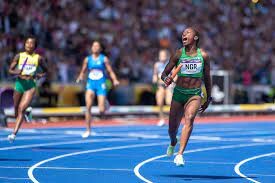
The 21-year-old tested positive for ostarine and ligandrol, according to the AIU.
It could lead to England being promoted to gold in the relay and Jamaica moved into silver.
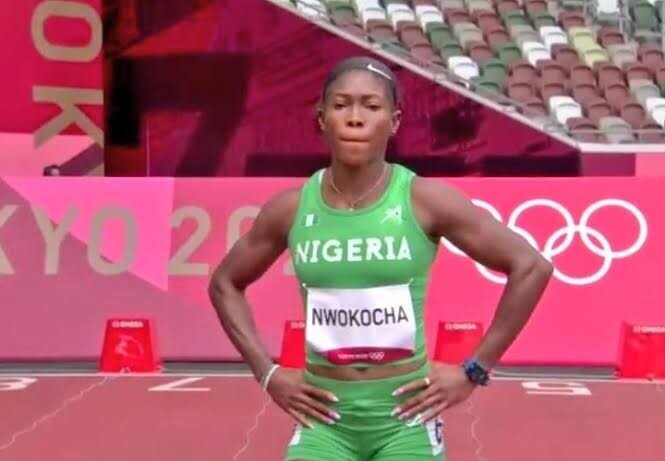
Australia would be promoted to bronze if Nigeria are disqualified.
Ostarine is an anabolic steroid that is not approved for human use or consumption in the United States, the country where Nwokocha has trained while at university.
Ligandrol is used to increase energy, improve athletic performance and increase muscle growth.
Testing positive for prohibited substances carries a penalty of up to four years, meaning the Nigerian could miss the Paris 2024 Olympic Games and the Victoria 2026 Commonwealth Games if found guilty.
At the Tokyo 2020 Olympics, Nwokocha made the semi-finals of the women's 100m and 200m, reaching the same stage in both races at this year's 2022 World Athletics Championships in Eugene.
The Nigerian was fifth at Birmingham 2022 in the women's 100m final too.
Nwokocha also finished sixth this year in the National Collegiate Athletic Association (NCAA) 100m and 200m finals.
She is not the first prominent Nigerian to face a ban, with Olympic, world and Commonwealth champion Blessing Okagbare given a 10-year ban earlier this year for multiple cases of doping, as well as refusing to comply with the investigation.
Failures in Nigerian anti-doping left several athletes to miss the Tokyo 2020 Olympics, as they were deemed to have not been tested enough prior to the Games.
(09/05/2022) ⚡AMPby Michael Houston
Bahamian athlete Sprinter Shavez Hart killed in Abaco
The track and field community of The Bahamas was hit hard over the weekend as it lost one of its own to a senseless act on his home island of Abaco in The Bahamas.
According to a police report, Shavez ‘Sparky’ Hart, one of the best all-around sprinters in Bahamian history, was gunned down shortly after 2 a.m. on Saturday morning near a business establishment situated in Mount Hope, North Abaco.
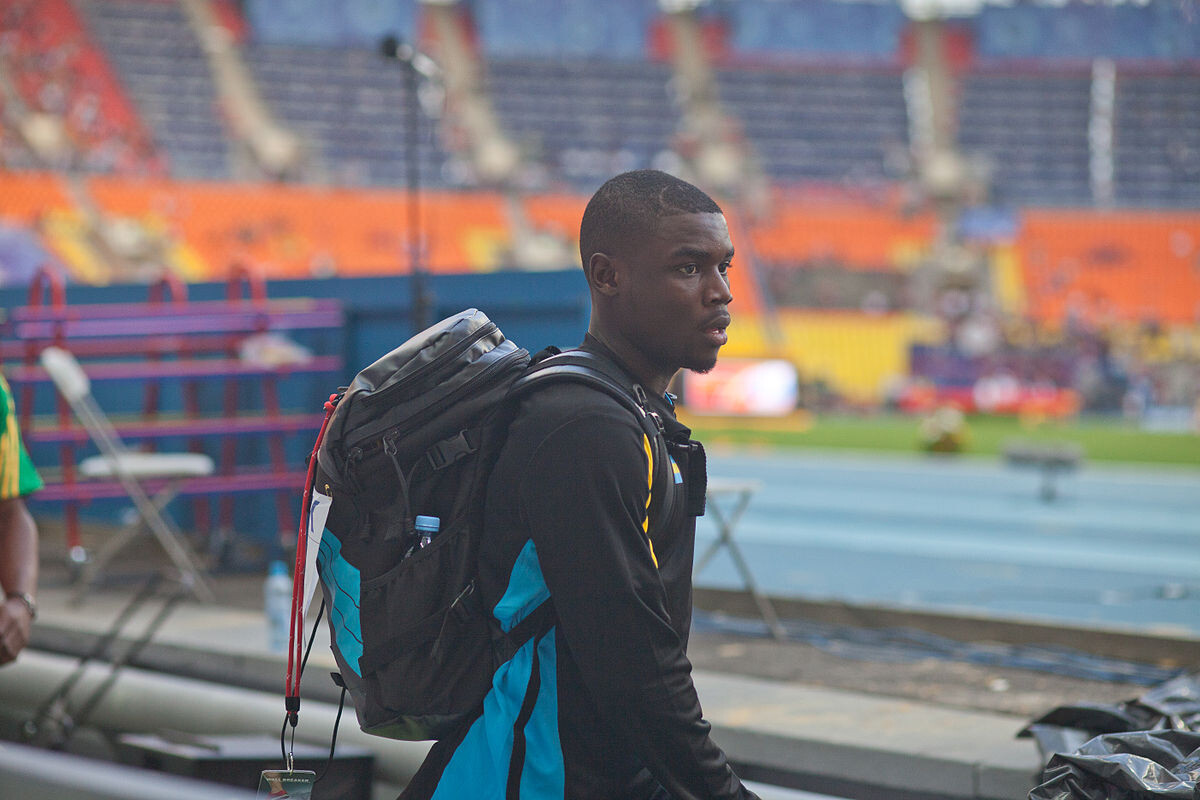
Hart, just three days short of his 30th birthday, represented The Bahamas at all levels of track and field, reaching as high as the world championships and the Olympic Games. He had personal best times of 10.10 seconds and 20.23 seconds in the 100 and 200 meters (m) respectively, and was a formidable 400m runner as well, thereby setting his mark as one of the best 100-200-400 combo runners in Bahamian history. Indoors, he had personal best times of 6.60 seconds in the 60m and 20.57 seconds in the 200m.
Hart was more known for his accomplishments in the short sprints, but it’s actually in the 400m, as a part of a relay squad, in which he achieved his most prestigious medal. Stepping in with two of The Bahamas’ ‘Golden Knights’, Chris ‘The Fireman’ Brown and Michael Mathieu, Hart won a silver medal in the men’s 4x400m relay at the 16th International Association of Athletics Federations (IAAF) World Indoor Championships in March 2016 in Portland, Oregon, United States. Hart teamed up with Brown, Mathieu and Alonzo Russell, and they ran a national record time of 3:04.75 for the silver medal.
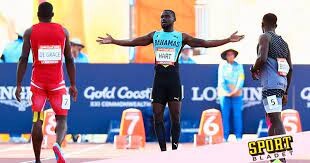
Hart never really reached his full potential on the senior side at global meets, but his times have him listed in the top five in Bahamian history in the short sprints. He is at number four in the 100m and tied for fifth with another of the ‘Golden Knights’, Demetrius Pinder, in the 200m.
According to the police report, a group of men were involved in a physical altercation in the parking lot of a local night club on North Abaco early Saturday morning. One of the men left, returned with a firearm and discharged the weapon, shooting Hart in the chest. EMS (Emergency Medical Services) attended to the victim and found no signs of life. He was later transported to the Marsh Harbour Clinic where he was seen and examined by a doctor and pronounced dead. The report continued, stating that the suspect in this matter was later arrested and taken into police custody, and that investigations are continuing.
Shavez’s mother said her son was trying to defuse an altercation between two men when he was caught in the middle and shot. It was reported that the subject attempted to shoot another man and ended up shooting Hart.
“He was such a good son – very quiet and always helpful,” said his mother Shammaine Hart. “He did a lot of work in the community and was always trying to give back. I will certainly miss him.”
Hart was well-loved in local track and field circles.
Speaking from Europe where she is busy running on the circuit, Anthonique Strachan who represents the athletes locally, and who was just elected as a Member-at-Large for the North American, Central American and Caribbean Athletic Association (NACAC) Athletes’ Commission, said she is devastated by the news.
“This is just too much. Shavez was the sweetest, most kind-hearted person you would ever meet. He was dedicated in everything he did and he was a guy who wore his heart on his sleeve even though he showed minimal emotions,” said Strachan. “I’m still very shocked. I wish the best for his son and his family and will continue to pray for them during this most difficult time. His son, who I believe hasn’t turned one yet, will never really get to experience his father – just knowing what is told to him. He will never get to see the great person that his dad was, and how driven and dedicated his father was in everything that he put his mind to – from school, to sports to becoming an entrepreneur.
“It’s very hard to grasp that something like this happened. Condolences to his mom, his dad, his son and his entire family. This is so heart-wrenching and so sickening. There are a lot of innocent people being killed and I hope the government does something to put a serious clamp on the gun violence that is happening in the country.”
Strachan said she last spoke to Hart via phone during the NACAC Championships in Freeport, Grand Bahama, in August, and he vowed to attend the event for the weekend but it never materialized. She said in speaking to the athletes, they have decided to make a donation to the family, setting up a GoFundMe account.
NACAC President and former BAAA President Mike Sands said he was saddened by the news of Hart’s unfortunate and unexpected demise.
“He was a great athlete who competed with true grit and determination. It was always a pleasure being in his presence,” said Sands. “He was a very humble and a mannerly young man who always greeted you with a smile. My condolences goes out to his immediate family and the wider track and field family. Let fond memories of ‘Sparky’ comfort us all during this difficult period. I also take this opportunity to urge everyone and our young men, in particular, to seek conflict resolution rather than violence that all too often ends tragically.”
(09/05/2022) ⚡AMPby Sheldon Longley
Marathon workouts for the time-crunched runner
Try one of these sub-60-minute workouts to polish off your marathon training. Contrary to popular belief, marathon training doesn’t have to take over your life; efficient prep for a speedy marathon can be accomplished in less than an hour. Combine one of these sessions with some easy running days and a slightly longer run, and you’re set for the week.
Race Pace Repeats
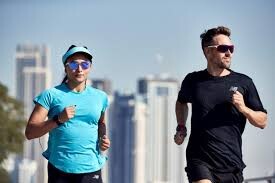
This interval session is a favorite of renowned coach Luke Humphrey, author of Hansons Marathon Method, who ran a similar workout in his college days. He recommends it to his runners working on time-crunched training schedules. As you improve, Humphrey recommends reducing recovery time to only one minute.
Warm up with 10 minutes easy running

Run five minutes at marathon pace, with two minutes easy recovery, repeat five times
Cool down with five minutes of easy running
Threshold Intervals
This interval workout pushes your aerobic threshold–the limit at which your body can work before lactic acid begins building up. Designed to keep your heart rate up for long enough to build strength without causing exhaustion, threshold intervals will make your goal race pace feel easier.
Warm up with ten minutes easy running
Run two minutes at 80 per cent effort, two minutes recovery at an easy pace, repeat eight times
Cool down with five minutes easy running
Progression run for strength
This is a great workout to run if the race you’re training for has a hilly course. The 12 minutes of faster running at the end of the workout challenges both your legs and lungs, improving overall efficiency.
Warm up with eight minutes of easy running
Run 15 minutes at goal marathon race pace
Run 12 minutes at a hard pace (try your goal 10K race pace)
Cool down with eight minutes of easy running
Follow any hard workout with easy running or a recovery day, and make sure to hydrate well.
(09/05/2022) ⚡AMPby Running Magazine
Eilish McColgan storms to course-record-smashing win at The Big Half in London
Eilish McColgan has done it again. At The Big Half 21.1K in London on Sunday, McColgan determinedly chased down victory in 67 minutes, 34 seconds, knocking over two minutes off of Charlotte Purdue‘s course record of 69 minutes, 51 seconds. McColgan was followed by Purdue in 70:15 and Samantha Harrison in 70:22.
Scotland’s McColgan, who withdrew on Friday from a much-anticipated 2022 London Marathon debut due to a condition called rebound hypoglycemia, left fans with no doubt as to her running ability. Her victory caps off a remarkable season for the athlete, including Commonwealth Games gold at 10,000m and a new British half-marathon record of 67:26.
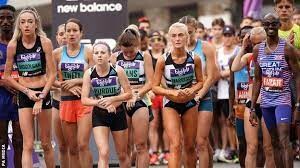
The 2023 London Marathon returns to its regular timing in April, so McColgan will not have to wait an entire year for her London Marathon debut. “It is disappointing and if it was up to me I would probably try and batter on, muscle through, but I know that is my heart speaking. The sensible decision is to get everything right for April,” she told press.
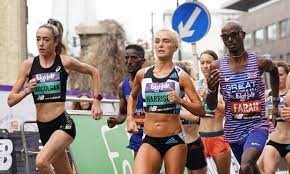
Legendary British athlete Sir Mo Farah ran to his third win at The Big Half in 61 minutes, 49 seconds, in what was only his second race of the season. In May, Farah lost a 10,000m race to amateur runner Ellis Cross, sparking rumours of retirement.
He announced his intention to return to the TCS London Marathon in July, and quelled some of the talk around his career with Sunday’s performance, breaking away from the pack with three miles to go. Farah was followed by Jack Rowe in 62:04 and defending champion Jake Smith in 62:10.
(09/05/2022) ⚡AMP
by Keeley Milne
The Vitality Big Half
Created by London Marathon Events Ltd, in partnership with Sported,The Vitality Big Half is a community running festival, taking place in London in March. This one-day event offers a host of running distances, from a challenging half marathon to a free one-mile course, as well as a family-friendly festival of food, music and activities. What’s happening? Take part with friends...
more...IRELAND SHINES AT WORLD MASTERS MOUNTAIN RUNNING CHAMPIONSHIPS
Saturday's (Sept 3) weather may have been overcast in Clonmel but Irish athletes blazed the Comeragh Mountain trails to take an impressive haul of medals at the 21st World Masters Mountain Running Championships.
With a population of just 5.1 million, Ireland produces more than its fair share of strong mountain runners versus much larger countries who sent teams to this world championship for athletes ages 35 to 79. Irish mountain runners took home eight of eighteen available team gold medals and four individual gold medals.
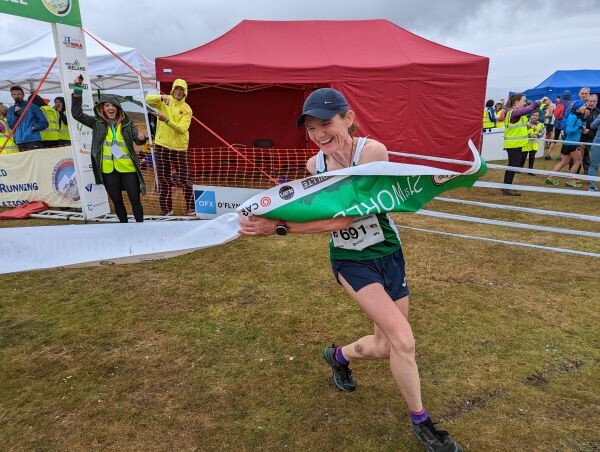
The fastest times of the day were recorded by Thomas Roach (GBR - M40) in 42:00 and Victoria Wilkinson (GBR - W40) in 53:17 on the 10.6km long course with 602 meters of climbing. On the 8.4km short course with 500 meters of climbing it was Franco Torresani (ITA - M60) in 42:09 and Nicoletta Fearari (ITA - W55) in 50:50 who ran the fastest times.
Another performance of note was that of co-race director and course designer Tom Blackburn (IRL) who won a bronze medal in the male 55-59 age group running 44:37, just 20 seconds behind the winner in his age group.Races kicked off in age group waves starting at 10:00 AM under perfect weather conditions for runners; overcast, light breeze and temperatures in the high 50s (F) slowly rising into the low 60s (F).
Only a brief period of light drizzle would interrupt this pattern until the final wave at 1:45 PM.Running on the short course, the W75 race was won by Barbara Prymakowska (POL) in 1:16:40. The W70 gold medal went to Margret Gottnauer (GER) in 1:00:56. The first Irish gold went to Pauline Moran (IRL) who won the W65 age group in 55:50.
Ana Mori Aguado (ESP) won the W60 class in 52:18. Representing a strong Italian contingent, Nicoletta Ferrari (ITA) won gold in the W55 class in 50:50; the fastest women's short course time.Also running the short course, James Patterson (GBR) took gold in the M75 age group in 58:12. Adolfo Accaliai (ITA) led an Italian podium sweep of the M70 age group in 48:49.
The first Irish men's gold medal of the day went to Martin McDonald (IRL) in the M65 class in 48:27. Franco Torresani (ITA) won the M60 class in 42:09. Over 60 runners finished the M55 men's race but it was Tom Tipping (GBR) who bested them all in 44:17.
(09/04/2022) ⚡AMPby Richard Bolt
Mo Farah warms up for London Marathon with his third victory in the Big Half
Sir Mo Farah enjoyed a timely return to form ahead of next month’s London Marathon with a third victory in the Big Half.
The four-time Olympic champion suffered a shock loss to club runner Ellis Cross at the Vitality 10k in London in May to spark further talk of retirement.
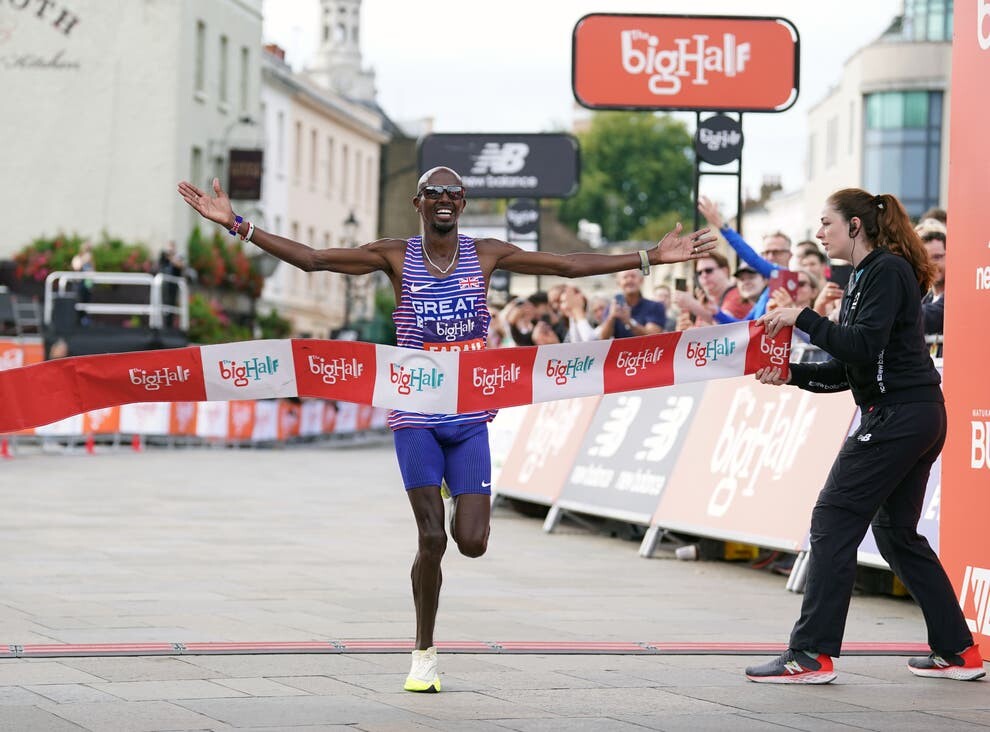
Farah helped silence some of the external noise with an impressive run on this occasion in the capital and crossed the finish line in Greenwich with a time of 61 minutes and 49 seconds after storming clear of his nearest rivals during the last three miles of the 13.1-mile course.
It was only the 39-year-old’s third-fastest run in the Big Half but still enough to edge out Jack Rowe and defending champion Jake Smith, who finished second and third respectively.
Eilish McColgan won the women’s elite race in record time.
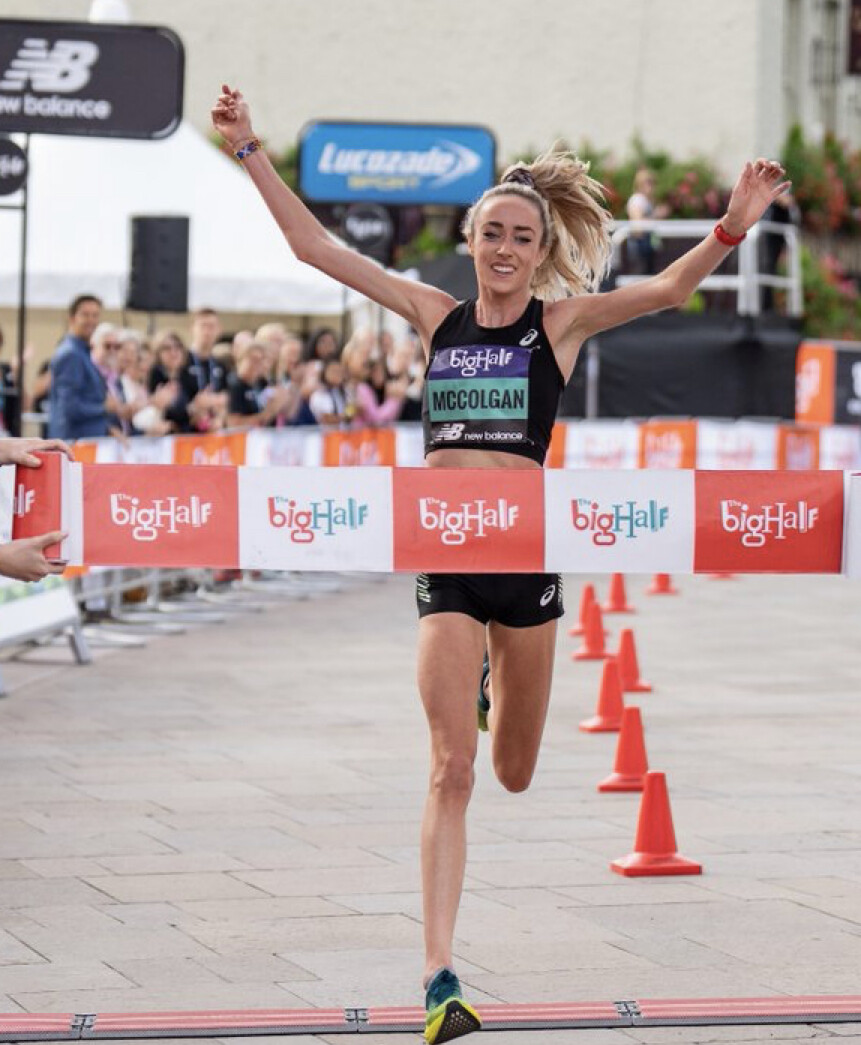
Scotland’s Commonwealth Games gold medallist Eilish McColgan claimed victory in the elite women’s race with a record time of 67.34 minutes but unlike Farah she will not be competing in the London Marathon after it was announced on Friday.
Eilish posted, "67:34. Course Record
"An atmosphere running the streets of London! Happy to take the win and knock over 2mins off the course record.
"Tough running solo over the last half of the race but it was more of a challenge not to smile with everyone cheering us along."
Farah told BBC sport, “Today wasn’t easy but most important is the win and it is nice to be back."
“It is really nice to see my family here and so many people come out. It is family-friendly but most importantly for me, it is the streets of London and just the support and atmosphere, it is brilliant and makes you want to come back every year again and again.
“The key thing for me today was to try and win, no matter what happened.
“It was to play around with things, pick up my drink and all practice ahead of the London Marathon.
“I’m excited, I’m looking forward to it. The last seven weeks it has been good, I’ve got consistent training going, so I’m happy with where I am. The next step is this afternoon I’ll fly out and get ready for the next four weeks, get my head down and see what I can do.
Farah was competing for just the second time in 2022 and eager to bounce back from his disappointment in May.
After being part of a five-man group for the first half of the London event, the multiple gold-medal winner used his experience to pull away after refuelling at the 11-mile mark.
His winning margin was slower than his 2018 and 2019 victories but provided the British athlete with a confidence booster ahead of taking on next month’s London Marathon.
Fellow Olympian McColgan will not be competing in October’s 26.2-mile race having been hit by a reaction to taking on fuel during long practice runs.
The issue has been identified as rebound hypoglycemia, a common occurrence among endurance athletes which leads to reduced blood sugar levels and means there is not enough glucose in the blood to meet the body’s demands.
But McColgan stuck to water on Sunday and bettered Charlotte Purdue’s time of 69.51 minutes last year to show she will be a force to be reckoned with if she can compete as planned in the 2023 London Marathon.
(09/04/2022) ⚡AMPThe Vitality Big Half
Created by London Marathon Events Ltd, in partnership with Sported,The Vitality Big Half is a community running festival, taking place in London in March. This one-day event offers a host of running distances, from a challenging half marathon to a free one-mile course, as well as a family-friendly festival of food, music and activities. What’s happening? Take part with friends...
more...‘We Are Here Because of Him’: The Runner Who Defied Apartheid
In the dying days of South Africa’s apartheid regime, pioneering Black runners helped transform the Comrades Marathon into the race it is today, one that reflects the country around it.
On a balmy Sunday morning in late August, Kgadimonyane Hoseah Tjale stood below a stadium full of roaring fans on the finish line of the Comrades ultramarathon, clutching a small air horn.
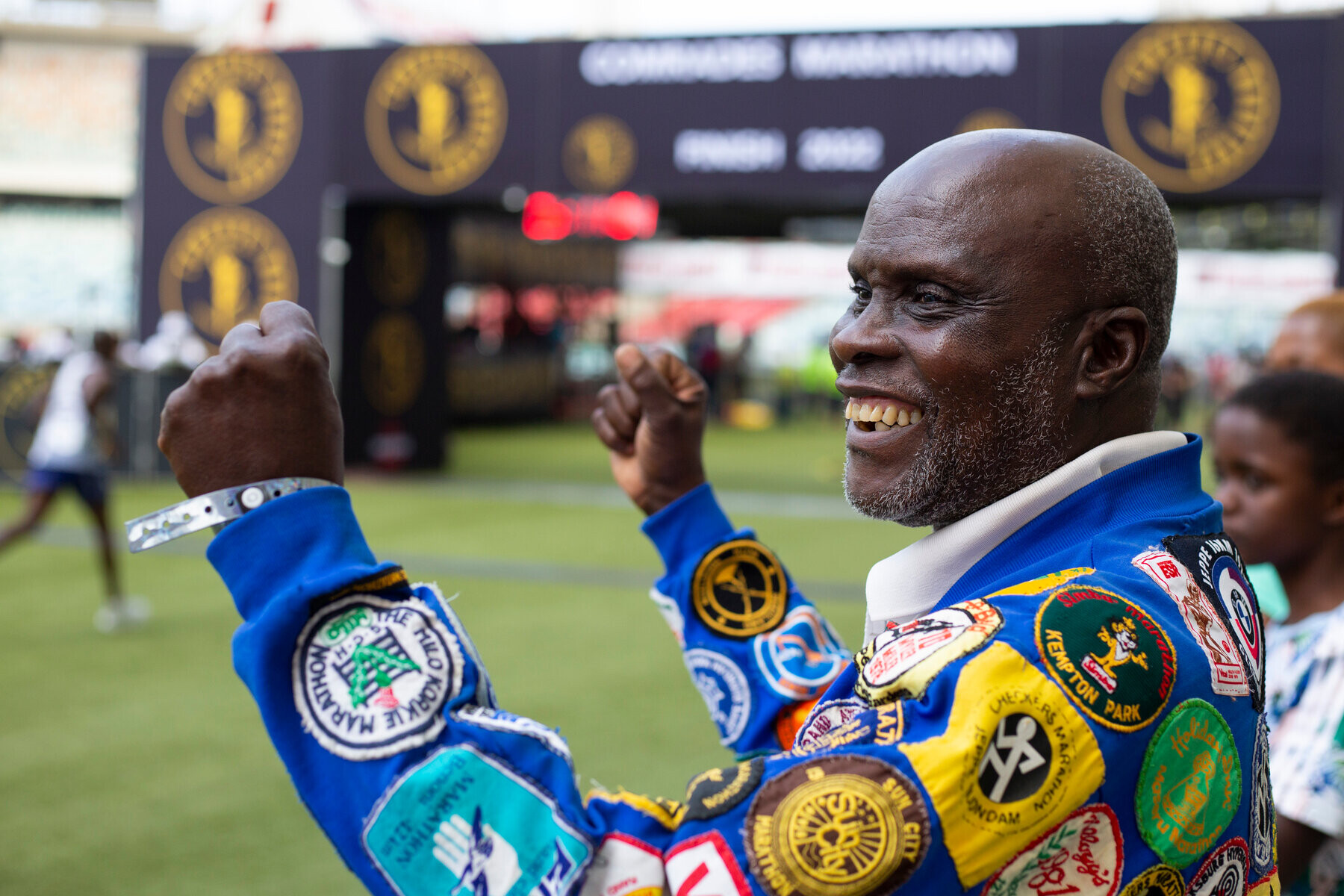
He had been here before. In the 1980s and early 1990s, Tjale racked up four podium finishes at the Comrades, a 56-mile race between the South African cities of Pietermaritzburg and Durban. Today, it is the largest ultramarathon in the world, attracting a field of up to 20,000 runners, throngs of spectators and millions of live television viewers.
The story of how the Comrades became the race it is today is bound up in the story of Tjale and other pioneering Black runners of his generation. In the dying days of South Africa’s apartheid regime, they helped transform the race from a poky, amateur affair into an enormous event that looks much like the country around it.
They did so from one of the most uneven playing fields in the modern world.
Back at the race for the first time in 29 years, Tjale marveled as the top finishers sprinted past him. In his days, nearly every top runner was white. Now, all the top men were Black, wearing the jerseys of big corporate running clubs that paid for them to attend training camps. The 2022 men’s race winner, a university security guard named Tete Dijana, earned around $42,000 in prize money and bonuses. It was equivalent to about a decade of his salary.
“There was none of that in our times,” said Tjale, a retired delivery driver who was living in a shack north of Johannesburg when he ran his final Comrades race in 1993, when the race did not offer a cash prize.
(First photo) The start of the Comrades Marathon at the Pietermaritzburg City Hall. Credit...Rogan Ward for The New York Times
Tjale had been invited back by the Comrades’ organizers to sound a horn marking the cutoff for a special medal given to runners who finish in less than six hours. In the car from the airport two days before, Tjale asked one of them why they had invited him.
Tjale had been invited back by the Comrades’ organizers to sound a horn marking the cutoff for a special medal given to runners who finish in less than six hours. In the car from the airport two days before, Tjale asked one of them why they had invited him. He’d never won the race, after all.
But for Comrades runners, the reason was obvious.
“We are here because of him,” said Freddie Wilson, a runner from Johannesburg, as he waited to take a photograph with Tjale at the race expo. His voice shook with emotion.
Like many Black South Africans, Wilson grew up watching Tjale on TV. His family didn’t have a television, but on Comrades Sunday they would crowd with others in their neighborhood into the lounge of a family who did and spend the entire day watching the race.
Wearing a bucket hat and running with a distinctive, lopsided gait, Tjale was a revelation in the front pack. From inside a country whose government was purpose-built to stifle the ambitions of Black South Africans, here was a Black man doing something audaciously ambitious, for the whole country to see.
(Third photo) Spectators running with Tjale in a Comrades Marathon during the 1980s.Credit...The Comrades Marathon Association
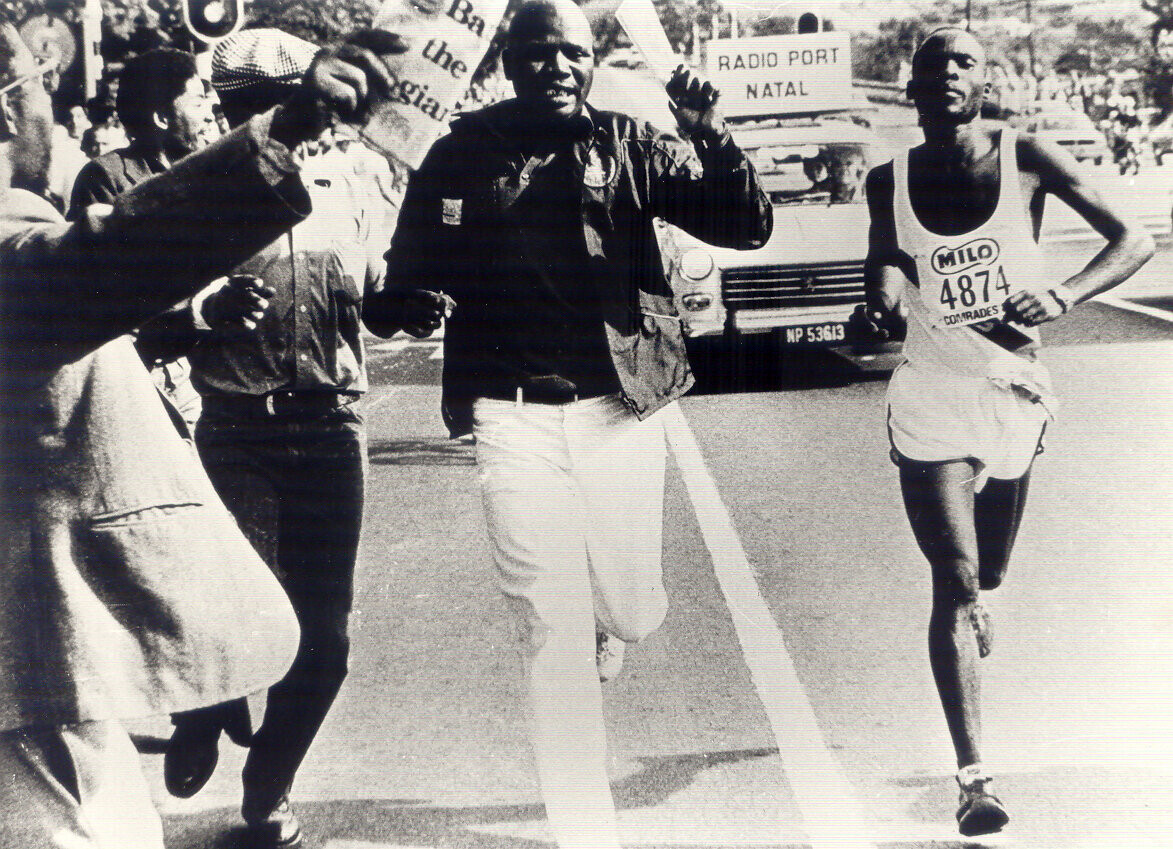
“He was our great,” Sello Mokone, who has run the Comrades 18 times, said. “The moment we saw a Black guy doing this, we knew we could do it too.”
At his peak, Tjale could run 56 miles at a pace of just over six minutes a mile. He racked up dozens of wins at ultramarathons, including at South Africa’s other famous ultra, the 35-mile Two Oceans. Twice, he almost defeated the Comrades’ white folk hero, a floppy-haired blond man named Bruce Fordyce, who won the race nine times between 1981 and 1990.
Bob de la Motte, a white runner who finished second to Fordyce three times, said that Tjale “was the better athlete.”
But while Fordyce focused full-time on the Comrades, living off money from speaking gigs and corporate sponsorships, Tjale worked as a delivery driver, running 15 miles from the crowded workers’ hostel where he lived to his job. On weekends, he ran every local race he could find, from 10 kilometers to 100 kilometers (6.2 miles to 62.1 miles), for prize money to supplement his income.
“He was lucky,” Tjale said of their rivalry.
Tjale grew up in the 1960s in a rural area near the city of Polokwane, formerly known as Pietersburg. He dropped out of school after eighth grade. A few years later, he moved to Johannesburg to work as a live-in gardener for a white family. There, he clipped hedges during the day and washed the family’s dishes after dinner. In between, sometimes, he went for a jog.
In the late 1970s, his running caught the attention of his employer, who helped him buy a pair of sneakers and join a running club. He began entering races, and soon, winning.
It was an auspicious moment to take up distance running. At the time, South Africa was subject to widespread international sports boycotts, which kept the country out of most major events. The nation was desperate to get back in, and in the mid-1970s, the apartheid government announced it would desegregate a minor sport, running.
Amid a global boom in running, entries at races like the Comrades began to tick upward. And South Africa’s single state-run TV station began broadcasting the Comrades live in the early 1980s. Millions watched Black runners like Tjale and white competitors like Fordyce share bottles of water and sling their arms over one another at the finish line.
“In the Comrades, everyone needed help at some point, and people always gave it,” said Poobie Naidoo, another elite South African distance runner from the 1980s, who is of Indian heritage.
But the moment runners like Tjale and Naidoo stepped off the course, they returned to an apartheid reality. In 1979, not long after his first Comrades, Tjale was arrested on his way to work for not having documents showing he was allowed to be in a white part of the city. He spent a night in jail.
“On the road was the only place I sometimes felt like apartheid wasn’t there,” Tjale said.
In 1989, both Tjale and Fordyce participated in a 100-kilometer world championship. Because of the timing, Fordyce skipped the Comrades, and Tjale ran it on tired legs. Another runner, Sam Tshabalala, became the race’s first Black champion. Tjale, meanwhile, ran his final Comrades in 1993, quietly finishing 51st.
In 2016, Tjale, a reserved man with an easy laugh, retired to a 20-acre farm he bought near Polokwane. It was one of the first times since he married in the 1970s that he and his wife had been able to live together, and they spent quiet evenings on their couch cracking jokes and watching soap operas.
He didn’t think much more of the Comrades, besides occasionally turning down invites to events the race hosted. “I was done with that thing,” he said simply.
But this year, a Comrades Marathon Association board member named Isaac Ngwenya called with a plea. Would Tjale come and let himself be honored. He agreed and last weekend boarded a plane for Durban.
Tjale arrived to a race radically transformed from the one he left. At the Comrades expo, thousands of runners — most of them Black — milled around, trading training stories. The night before the race, more than 300 people slept in the Pietermaritzburg Y.M.C.A., where race organizers put up entrants who could not afford accommodation.
“It’s something I can show my son, and myself — that I did this thing,” said Cynthia Smith, a security guard, as she stretched out on her foam mattress.
On the start line at Pietermaritzburg City Hall the next morning, more than 13,000 runners sang an old migrant laborers’ song called Shosholoza, whose title means “go forward.” The gun popped, and they surged into the winter morning.
“It’s like living your entire life in a single day,” Tommy Neitski, a 42-time finisher, said of the race’s mass appeal. It’s also like seeing all of South Africa in a day, on a course that winds its way past shacks and boutique hotels, sugar cane fields and gritty industrial towns.
Tjale arrived at the finish line at Durban’s Moses Mabhida Stadium to sound the six-hour horn. Waiting in a V.I.P. lounge, he ran into Jetman Msuthu-Siyephu, winner of the 1992 race. They spent the morning trading memories.
As the day wore on, the two men watched the salt-streaked runners pour in by the thousands, dissolving in joy and exhaustion as they stumbled over the finish line. Tjale couldn’t stop smiling.
“When we go,” he said to Msuthu-Siyephu, “we will have left something for this world.”
(09/04/2022) ⚡AMPby Ryan Lenora Brown (New York Times)
Comrades Marathon
Arguably the greatest ultra marathon in the world where athletes come from all over the world to combine muscle and mental strength to conquer the approx 90kilometers between the cities of Pietermaritzburg and Durban, the event owes its beginnings to the vision of one man, World War I veteran Vic Clapham. A soldier, a dreamer, who had campaigned in East...
more...Groundbreaking New Study on Pregnancy and Performance
On the morning of August 27, Allison Baca was greeted by a foreboding gloom at the trailhead beneath 13,229-foot Mount Audubon, in Colorado. She decided to give her objective a shot anyway, planning to turn around if the weather went from gloom to doom.
With her partner Tony, she had blocked off this date on the calendar weeks in advance as her chance to spend all morning in the mountains, chasing history on the iconic Pawnee-Buchanan Loop above Boulder. Those free mornings were extra special. Free time has been much harder to find on the calendar since she became a mom last year.
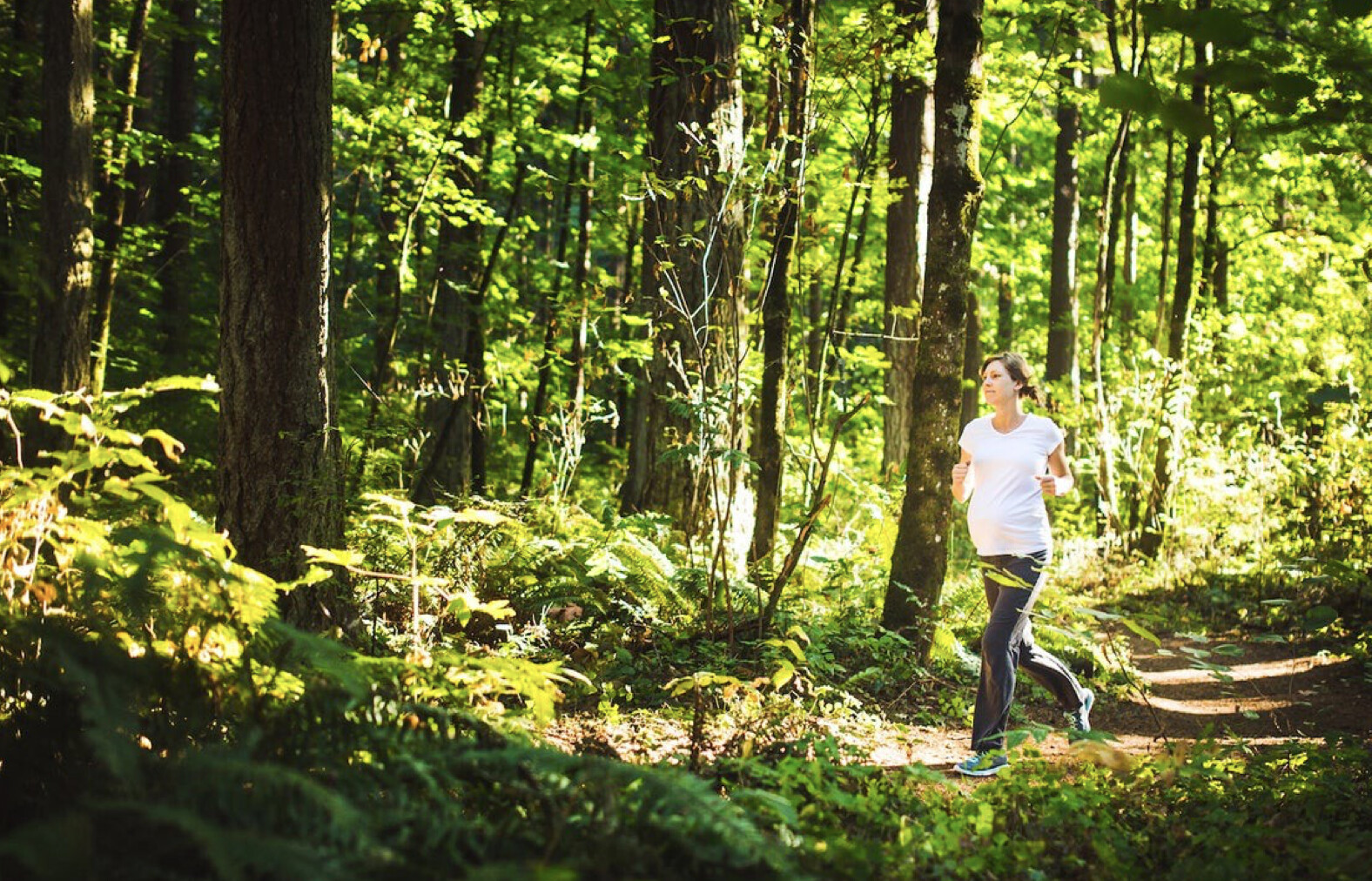
On March 26, 2021, she gave birth to her first child, Mateo. The 17 months since then have been a journey, full of ups and downs that only a parent can truly understand (as a soon-to-be first-time dad, I have watched enough preparing-for-baby videos to understand that I won't understand the chaos until I live it).
Something about that journey made Allison even more unstoppable on the trails. So she went into the mountains with confidence . . . and also some time constraints.
Pawnee-Buchanan is a 27-mile route with 7,000 feet of climbing over technical mountain terrain. Ever since Anton Krupicka first reset what was possible in 2010 by running 4:50, Boulder trail runners have taken their cracks at the route, with plenty of cracked ankles and broken spirits to show for it. The women's record stood at 5:34, set by stellar athlete Emily Caldwell. Challenging that time would require speed and technical proficiency. But most of all, it would require strength. Luckily, over the previous 17 months, Allison had honed a new skill that she'd be taking with her: Mom Strength.
Over the 27 miles, she fought through vicious wind gusts in remote wilderness, with enough ups and downs to ruin any quad muscle. Her final time? An astounding 5 hours and 5 minutes. Allison beat her goals and made history. "It was exciting to finish the loop and realize that I was able to run faster than I had ever imagined starting the day!" she said.
When asked about how pregnancy and motherhood changed her as an athlete leading up to the performance, she paused. In that pause, I sensed a weight that someone can only feel when they have lived through the shit, for better and for worse, and are trying to summarize something messy into something neat.
"Motherhood has given me more of an identity outside of running," Allison said. "Sports used to be my identity, and they still are a part of my identity, but they are not everything. If a run doesn't go well, I used to dwell on it. Now there isn't time to dwell-I need to bring my best mom-self through the front door after good or bad runs. My life feels more well-rounded, and it can be exhausting. But I think it helps my running."
The journey was full of that uncertain chaos, and very few parenting journeys are as tidy as they can seem from the outside. For Allison, it all led to a mind-blowing FKT performance, and I think there's a strong argument that it's one of the best "FKTs of the Year" in the whole world. We can't be sure what propelled her to such a historic performance-it's some combination of talent, toughness, training, and intangibles.
But based on a study that was just released, I think we can draw one certain conclusion about at least one of those intangibles. For some athletes, Mom Strength can be a superpower even when it comes with some mom exhaustion.
Study Overview
The study was published online ahead of print in August 2022 in the Medicine & Science in Sports & Exercise Journal, reviewing training and performance trajectories of 42 elite runners during and after pregnancy. The author list was a who's who of top researchers: Francine Darroch, Amy Schneeberg, Ryan Brodie, Zachary Ferraro, Dylan Wykes, Sarita Hira, Audrey Giles, Kristi Adamo, and Trent Stellingwerff. The superstar team tackled a big, thorny topic that is usually full of whispers and innuendo, rather than data.
Leaving the world of anecdotes and wishful thinking behind, what does pregnancy actually do to athletes?
Let's get straight to the fascinating finding: athletes "who intended to return to high-level competition did so at a statistically similar level of performance in the 1 to 3-year period post-pregnancy." But there's something even more exciting. A whopping 46% of these elite athletes improved performances post-pregnancy.
A baby does not mean an athlete has to press stop and rewind. Those little poop machines sometimes just require a brief slow-down, followed by fast-forwarding to the best part of the show. It's complicated, though, and everyone is different.
In interpreting the study, I'll try to highlight just how different it shows that every journey can be, even if those complications might not make the headlines.
Study Context
The study was such a massive leap into the unknown because it was the first of its kind. As the authors said, "we are unaware of any previous study with significant participant numbers that has systematically and statistically investigated directly published quantitative performance outcomes before and after pregnancy."
A 2019 study in BMJ Open Sport and Exercise Medicine had completed a pregnancy questionnaire and interview with 34 elite athletes and compared that to a control group, finding no differences in pregnancy outcomes or returns to full activity. That study didn't look at long-term training or performance levels, so the 2022 study is really talking about venturing into a new research frontier.
To explore that frontier, the research team set some constraints. They would be gathering data on an athlete's first pregnancy only. In addition, the participants would be elite athletes, with times equivalent to a 2:46 marathon or faster in events 1,500 meters and up. The participants received a 139-question survey on training during and after pregnancy, completed with data from their training logs. 35 of the 42 athletes had performance times from the 1 to 3 years before birth on the World Athletics website, and those times were compared with postpartum results.
What a cool study design! By focusing on elite athletes, the researchers set up a tough hurdle to jump. Participants had already been striving to optimize their performances, so how does pregnancy affect optimization? It seems suboptimal to have a body's processes taken over by an ever-growing parasite for 10 months, right? Wrong, of course. The study results demonstrated the complexities of long-term performance, since many of the athletes actually got faster than before.
Study Findings
First, 57% of athletes reported conceiving during a period of decreased training load, with 24% intentionally decreasing training around conception. That may show that some athletes think that elite training is less conducive to conception, or that athletes focus on family planning during a break from competition.
Second, during pregnancy, athletes decreased training load from pre-pregnancy levels. They ran significantly fewer sessions, dropping from 9 per week to 5 per week, and the proportion of intensity decreased. Running volume decreased to 64-73% of pre-pregnancy in the first trimester, 49-54% in the second trimester, and 29-36% in third trimester, with more cross training toward the end of pregnancy than the beginning. Running paces slowed significantly, up to 23% in the third trimester. But athletes still averaged significantly more training than recommended by international exercise guidelines for pregnant people.
Third, after pregnancy, participants averaged 6 weeks off running and 3 weeks off cross training. They returned to 80% of pre-pregnancy loads at 14 weeks postpartum. The error bars on those numbers were large, showing substantial inter-individual variability.
After pregnancy, athletes raced less, dropping from 7.2 races per year to 2.8 races per year in the year after pregnancy, increasing to 4.4 races per year in the 3 to 5 years postpartum. But what's so exciting is what they did with those races.
Performance Findings
60% of the participants planned to return to pre-pregnancy levels or greater. This cohort saw no change in performance levels. Most exciting of all, "Nearly half of the athletes (46%) had better IAAF performance scores in the 1- to-2 years post-pregnancy than during the two years before birth."
While those numbers are exciting and hopeful, they are a bit more complex than they might seem at first glance. What about the 54% of athletes who didn't improve in the 2 years after pregnancy, despite intending to? What about the stories that aren't leading off running articles like this one? That's where the discussion gets a bit more complicated.
Pregnancy and Performance
In the discussions around pregnancy and training, I think we often seek simple narratives. I'm looking squarely in the mirror when I say that.
To start this article, I framed pregnancy as a potential superpower, which it clearly is not for everyone. While there are examples of athletes coming back stronger than ever, like Allison, there are many stories of athletes that really struggle to train during and after pregnancy. Some of those athletes never reach the same levels again, and those stories need to be told too.
As the authors say, "the limited data do not appear to support pregnancy as ergogenic for any physiological variables." Thus, the process of pregnancy alone is unlikely to be a performance enhancer. But as the study found, it can coincide with improvements in performance in many athletes, even elite athletes that were already pushing their training limits.
Headline: WOW, that is so exciting and hopeful!
Subheading: HOWEVER, it's often so scary and uncertain.
The hopeful data need to be understood in conjunction with the negative outcomes, too. I have been fortunate to coach many athletes through and beyond pregnancy, including Allison. I was excited to tell Allison's story because she is, well, a badass, and it can be motivating to have these uplifting models of Mom Strength. This study showed that intention to return at higher levels than before pregnancy was a key element in actually returning and exceeding to those levels, so I want to support a system of all-caps BELIEF that lets an athlete know it's possible.
But it won't happen for everyone. If 46% of athletes had better performance scores in the 2 years post-pregnancy than 2 years pre-birth, that means 54% did not. Those 54% may go much faster at Year-3 or Year-5 or Year-10, and I imagine each of those data points on both sides of the improvement curve involve stories of joy and sadness that are rarely told publicly.
This study showed that intention to return at higher levels than before pregnancy was a key element in actually returning and exceeding to those levels, so I want to support a system of all-caps BELIEF that lets an athlete know it's possible.
The authors highlight the complexity and those stories. "Our results may reflect a shift in the broader athletics culture and wider acceptance that individuals continue to compete at an elite level, and some possibly at a higher level than they did pre-pregnancy."
An athlete like Megan doesn't neatly fit into this study. Yes, she's elite. But she hasn't been able to train through pregnancy. Yes, she hasn't gotten injured. But it's tough to get injured when reading at the creek, outside of papercuts. And yes, she intends to come back stronger and faster than ever. But it's not a choice.
If anyone can do it, though, it's Megan. This study adds a few cups to the hope bucket, for her and other athletes going through the pregnancy process. That is so exciting! And it still doesn't change the fact that many of the stories around pregnancy won't be as neat and simple as the caption of this article implies.
I know one thing for sure: Megan is the strongest person I have ever met. Whether she runs faster in the future or not, well, that's out of her control, though I think she and other athletes can be full of realistic, pragmatic hope.
Either way, I am popping some popcorn for the show ahead. Megan is so damn strong. Now just imagine what she can accomplish in life with Mom Strength.
"Taken together, these findings indicate that childbirth can be a positive part of an elite athlete's career; the forced break may have both mental and physical benefits. Additionally, our own previous research has shown that a focus on motherhood and shifting priorities may alleviate some of the stress placed on performance outcomes particularly when athletes have strong social support and childcare."
Included in those few sentences are likely thousands of stories that the researchers know about, but aren't fit to print in an academic journal. Allison's journey has been scary and non-linear at times, and her specific stories are not mine to tell. The same goes for most journeys during and beyond pregnancy.
Some athletes get faster. Some get slower. Some love the evolving process of balancing motherhood and athletics. Some cry themselves to sleep from the weight of it all. Some bodies and brains thrive, others live through tough times that only a few loved ones might ever know about. Most mix all of those feelings and fears together at one time or another.
The Uncertainty
All of those stories are equally valid. I wrote this article now because my wife/co-coach Megan is 30 weeks pregnant with our first child. She's one of the best athletes in the world, with 5 national championships and dozens of course records that boggle the mind. But a couple months before conception, she felt chest pain that turned out to be a heart condition. She has barely exercised during pregnancy, her 20-mile runs replaced by daily trips to the creek where we read books and nature bathe. It has been a simultaneously beautiful and scary process so far, and I imagine that's not going to stop anytime soon.
(09/04/2022) ⚡AMPby Trail Runner Magazine
Dutch athlete blames positive doping test on cheap chicken
Dutch athlete Solomon Bockarie tested positive for the growth hormone GHRP-2 during an out-of-competition check in early July, the sprinter announced. He insists that he wasn’t doping. His spokesperson Robbin Pieterman speculates that the hormone ended up in his system through cheap chicken he ate, NOS reports.
“I don’t know how this product got into my body,” Bockarie said to the broadcaster. “I only know one thing for sure. And that is that I have not used doping. If anyone is vehemently against using banned stimulants, it’s me.”

According to Pieterman, Bockarie tested positive after eating chicken he bought at the market in The Hague. “It could be that this chicken had been treated with hormones and that he got this hormone in his body from eating this chicken,” Pieterman said. “Fortunately, Solomon still has pieces of this chicken at home. We will try to have it examined to show that the hormone entered Solomon’s body through this route.”
“I have a lot of questions about this check and the results,” said Bockarie. “Let me emphasize that an athlete is at all times responsible for the substances found in his body. But in this case, so much is unclear that I would like some clarification.”
Vincent Egbers of the Doping Authority refused to comment on the matter. “We are waiting for the athlete’s formal response first,” he said to NOS.
Bockarie was part of the Dutch team at the Olympic Games in Rio 2016 and Tokyo 2020.
(09/04/2022) ⚡AMPSecond death confirmation rocks 2022 Comrades: 'Two deaths are two too many'
The Comrades Marathon has been rocked by another tragedy of a participant who died while participating in Sunday's down-run.
47-year-old Phakamile Ntshiza, who ran for the Pretoria-based Adventist Athletic Club, died suddenly while on the course to Durban.
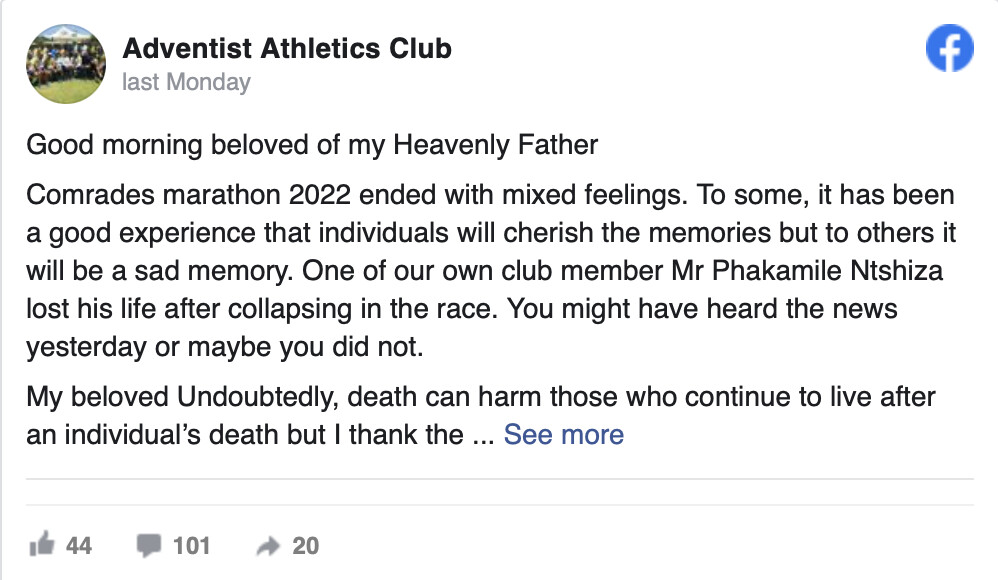
He collapsed shortly before reaching Drummond - the half-way point of the race - and was declared dead when the Netcare medical team arrived on the scene.
This follows news earlier in the day that Mzamo Mthembu of the Hollywoodbets Athletics Club died in a Westville hospital on Sunday after collapsing just before Pinetown.
Comrades race director Rowyn James confirmed both deaths to Sport24 on Monday.
"When our Netcare team had arrived at the scene, the athlete was declared dead," James said of Ntshiza's death.
"The chairperson of the Comrades Marathon Association has been in contact with both families.
"Comrades is a family. We have had over 400 000 people run the race since its inception over 100 years ago, and we are all family.
"Two deaths are two too many, and our thoughts and condolences are with the families of the runners who lost their lives."
James added that a total of 74 runners had been transported to hospital – 41 to St Augustine's and 33 to Netcare Umhlanga – after Comrades shut its medical facilities at 20:00 on Sunday night.
Of those, two remain in ICU presently. One is still on a ventilator.
"We’re wishing them both a speedy recovery," added James.
(09/04/2022) ⚡AMPKilian Jornet Isn't The G.O.A.T. of Trail Running Just Because He Wins Big Races
After Kilian Jornet won the Ultra-Trail du Mont-Blanc (UTMB) for a record-tying fourth time on August 27, it was easy to assume that running 100 miles is something that comes easy to him.
It doesn't, but it would be easy to think that because, well, it sure looked that way.
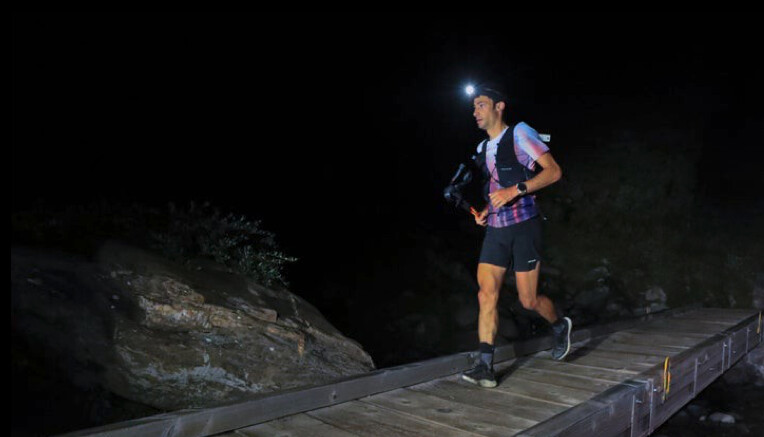

While the 34-year-old who hails from the Catalan region of Spain has long ago established himself as the G.O.A.T. of ultra-distance trail running in the mountains, he's as human as each of the other 2,300 runners who toed the line at this year's UTMB. Like his fellow competitors, Jornet felt fatigue in his legs from grinding through the 171.5km (106.5-mile) course and its 33,000 feet of elevation gain. He said he had difficulty breathing when he ran too fast or climbed too abruptly, likely the lingering effects of having just overcome Covid-19 earlier in the month.
And, like everyone else, he had to fight off low moments of mental torment, and maybe even a tiny trace of self-doubt-remember, he's human-as American rival Jim Walmsley opened up a big lead on him over the Grand Col Ferret as the course passed from Italy to Switzerland.
But what sets Jornet apart, and what has always distinguished him as an athlete, is a unique combination of physical ability, smart racing strategy and a deep connection to the mountains that allows him to move joyfully, patiently and, at times, seemingly with relative ease amid the physical anguish that comes with running such a grueling race.
But make no mistake, he suffered enroute to winning UTMB in a course-record 19 hours, 49 minutes, even if he made it look easy overcoming Walmsley and dispatching competent French contender Mathieu Blanchard.
"Since the start there has not been a single moment in which I didn't suffer," Jornet said after the race. "I knew that I needed to keep my intensity under a certain threshold where it can be heavy for the lungs, but it was no problem. But muscularly it was very hard from the start of the race."
Jornet is human, even if it took a debilitating illness to show it. But as he turned in yet another masterwork performance on the world's biggest stage, Jornet gave glimpses of what has made him so otherworldly for so long. Perhaps surprisingly, superior physicality is only a small part of it.Patience and Respect
Having already won UTMB three times and Hardrock a record-tying five times-most recently just six weeks earlier-Jornet had nothing to prove in Chamonix. In fact, if he had never toed the line or for that matter retires from competition, his legacy of epic race victories and Fastest Known Time (FKT) records on some of the most difficult trails and biggest mountains around the world would stand the test of time.
But that brings up another element that makes Jornet great is that he has always run as if he had nothing to prove. Sure, he's a competitive athlete, but his focus seems to be more about immersing in the zest of competition and the life-affirming bliss he's always felt in the mountains.
For Jornet, the destination truly is the journey, not the outcome. That adventure-oriented focus was something he learned in his youth growing up in the high-alpine environment of the Cap de Rec mountain refuge in the Spanish Pyrenees, where his dad was a mountain guide and his mom was a ski instructor. He climbed his first peak at age 3 and started competing in ski mountaineering races at 12.
Along the way, he developed a grounded sense of presence in the mountains that has allowed him to remain calm and bide his time in ultra-distance races-especially more rugged mountain races like UTMB and Hardrock. Instead of going all-out from the front, he typically follows a more fluid strategy of just staying in contact with the lead group and letting the race play out a bit as the terrain dictates before becoming hyper-competitive.
Contrast that to Walmsley, who has been hellbent on becoming the first American man to win the race with a front-running mentality, countryman Zach Miller, who returned after injuries and Covid-19 kept him away from continuing the same pursuit for three years, and the hard-charging Blanchard, who was eager to steal the show and make a name for himself in front of a supportive mostly French crowd after a robust third-place finish in 2021.
Even when Jornet was younger, he ran with maturity and wisdom beyond his years, always earnestly clinging to the premise that the experience of racing-and sharing it with his competitors, not to mention spectators and volunteers when possible-is always more important than the actual race itself.
When Walmsley built a big lead with a strong power-hiking surge up the Grand Col Ferret, Jornet was seemingly content, at that moment, to ease through the highest point of the course, chatting at times with volunteers, fans and videographers in French, Spanish or English as he had done at times earlier in the race. In previous UTMB races, he's burst ahead on the switchbacks up Grand Col Ferret and other steep climbs on that course, only to stop on top and wait for his competitors to catch up while gazing at the stars or picking mushrooms with children.
"At Hardrock this year, when I saw him on top of Grant Swamp Pass, he stopped in the middle of the race just to chat with me because we hadn't seen each other in a while," Miller says. "That's just the way Kilian is."A Versatile Mountain Athlete
Jornet has a much more diverse set of athletic skills and abilities than most ultrarunners. In addition to winning ultras, Jornet was a multiple world champion in ski mountaineering and SkyRunning in his twenties. He also set a host of new speed ascent marks and roundtrips on Mt. Kilimanjaro (Tanzania), Aconcagua (Argentina), Mont Blanc (France) and the Matterhorn (Switzerland). Although he missed in his attempt to set a new FKT on 29,032-foot Mt. Everest in 2017, he actually summited the world's highest mountain twice in six days without supplemental oxygen.
When he was a few years younger, he set a new record on the 171-mile Tahoe Rim Trail in California and Nevada and posted the fastest-ever time up the steep, rocky 1.3-mile Mt. Sanitas Trail in Boulder, Colorado.
"Kilian is a beast," says Francois D'Haene, the other four-time UTMB winner who last year became the first to win Hardrock and UTMB in the same summer. "When it comes to Vertical K races and distances from 40K to 100K, I think there is no competition between us. He's faster than me and stronger than me, especially on technical terrain."
Aside from long-and-rugged Hardrock and UTMB, Jornet won the shorter and much faster 42km Zegama Alpine Marathon in Spain and placed fourth in the 31km Sierre-Zinal village-to-village race in Switzerland in August. A lot of it has to do with the fact that he still trains in much of the same fashion as he did as a kid, often focusing more on fun, hard, playful days of adventure on foot or on skis as much as he does structured high-performance workouts.
"Kilian is unique in the range that he can cover," Miller says. "As a runner, his ability to switch back and forth from something like Zegama to Hardrock to Sierre-Zinal to UTMB is just incredible. And because of that ability, I think he's a bit of a mad scientist when it comes to training. He kind of turns himself into a guinea pig and trains in ways other guys might not be willing to for fear of overtraining."
All of that translated into Jornet's ability to win this year's UTMB despite trailing Walmsley by about 15 minutes at the 126km aid station at Champex. When the surging Blanchard caught him and quickly left the aid station, Jornet's competitiveness and mountain practicality started to fire up. They passed Walmsley and gapped him and then ran stride for stride over the ensuing 2,300-foot climb from the village of Trient down into the ski town of Valloricine.
Finally, after leaving the 153km aid station at the same moment as Blanchard, Jornet surged on a gently sloped 4km section of trail to the base of the final 2,600-foot climb up Tte aux Vents. Blanchard got a first-hand view of the master at work and all he could do was watch him run away to victory and hold on for second place.
"Running from Champex with Mathieu, I knew I was stronger going up but that he was catching on the downhills," said Jornet, who has lived in Norway for the past several years with his wife, Emelie Forsberg, and their two young children. "Once we got to Valloricine, the strategy was to push very hard up the final climb to Tte aux Vents and then manage the lead. I had about an 8-minute lead and I was feeling comfortable with it, but in a ultra race you never know, many things can happen."A Transcendent Athlete
At some point a conversation about Jornet should transcend trail running and include the similarities he shares with other great athletes who have had a similarly dominant presence in other sports. And yes, that means Tom Brady, Michael Jordan, Lindsay Vonn, Eddie Merckx, Michael Phelps, Ann Trason, Lynn Hill, Kelly Slater and Eliud Kipchoge.
Why not? Like each of those all-time athletes, Jornet has consistently risen to the occasion at the biggest moments of his career, not only because he physically outclasses the competition, but also because his intellectual prowess as an athlete and his ability to outthink, outwit and outlast them. It's not that he wins everything-although he's won the vast majority of his races since winning UTMB as a 20-year-old in 2008-it's more that he's been competing at the highest level for 15 years and hasn't regressed and has rarely had bad days.
In 2017, he had a rough go of it in the UTMB and finished second to D'Haene and in 2018 he dropped out after inflammation and pain caused by a pre-race bee sting made it difficult to keep running.
"Even his bad races he performs well, and I think that's what makes Kilian special," says Walmsley, who finished fourth at UTMB this year. "Whether it's a bad moment or a bad race, he's always still competing at a really high level. I have raced him twice at UTMB and both times I have thought I have found a crack, but I haven't been able to hold onto it."
Until recently, Jornet might have been viewed solely for his athletic. But with his bold move this year to break away from longtime sponsor Salomon and begin a new environmentally friendly trail running shoe brand called NNormal (with Spanish footwear brand Camper), he's not only begun to hone his entrepreneurial spirit in the world of business but also to make an impact as the environmental steward he's always been.
It's a path only a handful of high-level outdoor athletes achieved success at after making their mark in their sport disciplines, most notably Yvon Chouinard, a climber, surfer and kayaker who founded Patagonia in 1970.
Jornet ran all of his races this year in the same model of NNormal shoes that will be available at running shops and online this fall. It's a uniquely designed shoe that's balanced under the midfoot to promote midfoot and forefoot running gaits, but with enough cushioning to run with a heel-striking stride, especially on downhill sections of a trail. A thin polyurethane plate provides protection from rocks and some energy return, while a proprietary version of a Vibram Litebase Megagrip outsole serves up secure traction.
That all might sound pretty standard, but Jornet really wants his NNormal shoes to stand out for their durability. He and his colleagues have gone to great lengths to source long-lasting components, but they've also designed the shoe to be deconstructed so it will be easy to re-sole, repair or recycle it after hundreds of miles of wear and tear. It's all part of NNormal's No Trace philosophy that is all aimed at transparently designing gear with the smallest carbon footprint possible.
"There are a lot of good guys in the sport, but in [my] mind, Kilian is the king of the sport," says Miller, who was the fifth finisher at UTMB this year. "He sets the tone for the entire sport and [is] a great representative of the sport."
(09/03/2022) ⚡AMPby Trail Runner Magazine
Practicing Your Fuel Stops Should Be a Part of Your Marathon Training Plan—Here’s Why
Focus on nutrition on long run days so you can conquer the miles—without hitting the wall or running to the bathroom.
You train for speed, endurance, and strength before toeing the starting line at a race, gradually building up your distance and pace to make sure you’re ready to take on the miles. But sports dietitians confirm that most runners overlook one vital focus area during training—that is, your gut.

“Your digestive tract isn’t used to running and taking in food at the same time. The constant up-and-down motion of running coupled with the blood flowing away from the gut and toward the working muscles usually results in a wonky stomach,” says marathoner Natalie Rizzo, MS, RD, dietitian and founder of Greenletes in New York City. “But that doesn’t need to be the case. Just like you need to train your muscles to run, you need to train your gut to accept the fuel it needs.”
The more you practice, the better your gut will be able to handle the energy it needs, says Angie Asche, MS, RD, CSSD, a Lincoln, Nebraska-based dietitian and owner of Eleat Sports Nutrition. For any training run longer than an hour, consider giving your race-day nutrition strategy a trial run. That means eating the breakfast you would have on race day and consuming the fueling products you’ll have midrun at structured intervals throughout your miles. Practicing your plan should then help you fine-tune your fueling come race day.
Because we all have different body sizes (and, as a result, energy needs) as well as gastrointestinal (GI) tracts, the best fueling strategy looks different for each person. However, a study published in 2021 in Nutrients and a review published in 2017 in Current Opinion in Gastroenterology recommend that if you notice an upset stomach or diarrhea while running, steer clear of the following items for the two hours prior to and during a run:
Dairy products
Meat
Caffeine
Sugar alcohols and artificial sweeteners
Foods with a higher proportion of fat or protein than carbs
Anything with 5 grams or more of fiber
How to Prepare Your Digestion for Race Day
Pregame with care
Aim for at least 1 gram of carbs per kilogram of body weight in your prerace meal. (For a 180-pound runner, that’s about 82 grams of carbs.) If you have time, the goal is to eat three to four hours before a race lasting two hours or more, aiming for 3 to 4 grams of carbs per kilogram of body weight.
If you have only two hours to eat before heading to the start, go for 2 grams per kilogram of body weight. To help a 180-pound person reach their carb goal in the hours leading up to a race, Megan Robinson, MS, RD, CSSD, sports dietitian in Paoli, Pennsylvania, suggests having a large bagel with nut butter, and a fruit smoothie (made with a large banana, 1 cup of berries, and 1 cup of almond milk) three hours before your run. Then one to two hours prior to the start, consider having a sports drink containing 60 grams of carbs plus 2 ounces of pretzels.
Time it right
Aim for about 30 to 60 grams of carbohydrates for every hour of running after the first 60 minutes. Consider splitting those carbs up so you have a snack at 30-minute intervals. (For reference, 20 ounces of a sports drink, one gel, or one medium banana offers about 30 grams of carbs.)
“That said, the best way to train your gut is to start with a smaller amount of fuel and build up to the amount your body needs,” Rizzo says. “Use long training runs to start with that smaller amount, like 8 ounces of a sports drink, half of a gel, or half of a banana. Once your stomach can tolerate the smaller amount, add in more fuel.” To gradually build up your fuel intake, try to double your midrun snack every two weeks until you reach your end goal.
Stay hydrated
To reduce the risk for an upset stomach, acid reflux, or diarrhea, drink enough water to prevent dehydration, especially with chews or gels. “These all contain a large amount of carbs for their size, and if you do not consume water while ingesting them, it can lead to stomach cramping,” Robinson says. That’s because water moves out of the body and into the intestines to dilute the sugar, and without more H2O, you can get dehydrated or GI distress. As a general guideline, aim for 4 to 8 ounces of water every 15 minutes.
Tune in to what’s not working
Your body will make it clear if your gut isn’t having a good time. Gas, bloating, side stitches, diarrhea, nausea, and upset stomach can all indicate danger. If your stomach feels okay, but you notice that you’re bonking, crank up the carbs before running. “Some runners we work with aim for 4 grams per kilogram body weight four hours prerace,” Asche adds. You can start with that 1 gram of carbs per kilogram of body weight prerace (and make sure to get enough midrun fuel) and see how your final kick feels, adding in more carbs as necessary.
Feed your good gut bacteria
On rest days and on days with short runs, aim to eat gut health-promoting items. “Fermented foods, like yogurt, kefir, miso, sauerkraut, and pickles, are rich in probiotics that help build a healthy gut,” Rizzo says. Fiber can also aid in preventing constipation. Just scale up both fiber and probiotic intake slowly in order to avoid GI distress.
4 Gut-Friendly Fuel Options
While the best fit for your fuel is individualized, those who struggle with GI issues tend to have the best luck with sports supplements that have two types of sugar, like glucose and fructose, rather than just one. “Each type of sugar uses a different receptor in the bloodstream, so the body can absorb both of them quickly without causing any GI issues,” says Rizzo.
If you prefer whole-food options, try orange slices, dried cherries, or dried figs, all of which contain at least two natural sugars. For a packaged product, consider these dual-sugar selections:
(09/03/2022) ⚡AMPby Runner’s World
How much protein do runners need?, If you aren't already monitoring your protein intake, it's a good idea to start
Protein is a big discussion in gym and weightlifting culture, but it’s a less-prevalent conversation among runners. This is something that needs to change, though, as runners should focus on their protein intake just as much as any other athlete. You may not require as much protein as a strength- or power-focused athlete, but the need for protein is still paramount for your health and success as a runner.
The idea of tracking your protein consumption may seem daunting or tedious for some, but don’t worry, we’re here to tell you just how much you need in your daily diet.
How much protein do you need?

Ashley Ludlow is a dietitian and runner, and she says runners need to consume way more protein than average, non-active adults. It is often recommended that adults consume 0.36 grams of protein per pound of body weight, but studies have shown that this is too low for many people. There’s no set number offered by Ludlow, but she says runners should aim to hit between 0.5 and 0.9 grams of protein per pound of body weight every day.
But how do you determine if you’re on the lower or higher end of this spectrum? Ludlow says it really depends on how much and how far you run. If you’re only training a few hours a week, you can stick to the lower end. However, if you’re putting in high mileage and lots of hours every week, you’re going to want to get close to eating your body weight in grams of protein. This means that if you weigh 145 pounds, you should aim to hit around 130 grams of protein ever day.

“The more energy you burn off in exercise, the more protein you need to ensure that your body doesn’t break down your muscles to fuel your workouts,” says Ludlow. Of course, every runner is different, and this practice may not work for you. If you try it out and things feel off, it could be a good idea to visit a dietitian to figure out what will work for you and help you thrive as an athlete.
Easy ways to get enough protein
Upping your protein intake doesn’t have to mean you’re eating steak every night or forcing down a glass of raw eggs like in Rocky. There are so many easy (and tasty) ways to get the protein you need. Try adding a protein shake to your diet in the morning or after runs and other workouts. These are good with just water, but if you’re looking to get more out of the shake, you can add nut butter, milk, yogurt and anything else you like. Those few added ingredients are great sources of protein themselves, meaning that your already protein-dense smoothie will be even more filling.
If you want something you can snack on throughout the day, grab some nuts or a box of protein bars. One ounce of almonds (around 20 nuts) is six grams of protein, so if you graze them (or any other nut) throughout the day, you’ll get a great boost in your protein intake. As for protein bars, there are so many different brands and flavours out there. Shop around, test a few and find the one (or ones) you like best. The amount of protein varies by the brand and bar, but you can get a great shot of it from any type you buy. Plus, it makes for a quick and easy snack when you’re running out the door for work or to meet your friends for a workout.
Of course, if you’re looking to increase your protein consumption, shakes can only go so far. Adding high-protein items to your lunches and dinners will certainly help you reach your recommended daily intake.
For runners who eat meat, a large pork chop (36 grams of protein in a 230-gram chop), a slice of fish (22 grams of protein in a 110-gram piece) or a steak (62 grams of protein in a standard 250-gram steak) are all great ways to up your protein. For plant-based athletes, lentils (18 grams of protein per cooked cup), beans (15 grams per cup) and quinoa (9 grams per cup) are all great options to fill out your meals.
(09/03/2022) ⚡AMPby Ben Snider-McGrath
Tips for Running a Marathon and Half-Marathon from World Record holder Des Linden
Running a marathon is not easy. First, you must train your body and your training. It takes months to prepare your body physically, mentally, and nutritionally. And you must train your training with planning, preparation, and consistency. If you can follow these principles, you will be successful. You don’t want to be undertrained or underprepared; that is how strains, pains, and injuries happen.
But don’t take it from me. Des Linden is the expert. Marathoner, Des Linden, was an American woman to break the 33-year dry spell for an American to win the Boston Marathon, finishing it in 2:39:55. Also, last year, she was the first woman to run a 50K under three hours in 2:59:54.
Here are Des Linden’s insider tips to help you improve your marathon. Of course, you don’t have to follow her process entirely, but you can incorporate some or all the things she does that create success for her.
Pace Your Training
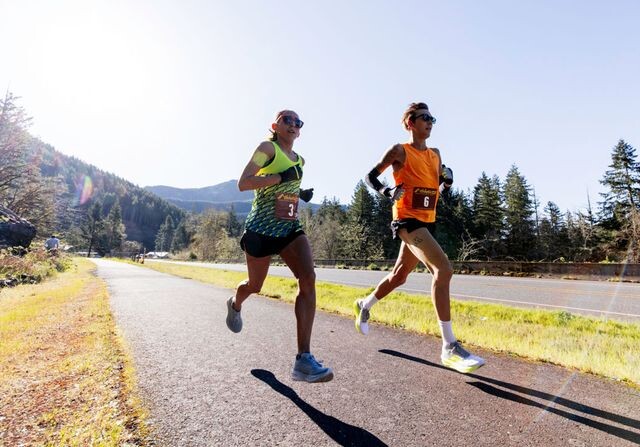
When it comes to running and training for a marathon, there is no quick way. You train, rest, recover, and then your body adapts. Forcing in extra miles is overtraining and not going to make up for missed training days. The body does not work like that. Des says you must be consistent with your training. Training too hard or too much can be disastrous, especially in the middle of your training phase. Consistency is the key. So, don’t up the mileage for your next run if you miss a day.
Be Patient with Running
Distance running is different from running just a few miles or sprinting. First, des says you must love running and the training that comes with it. If you don’t love it, you will force your body to do it. That is bad for you mentally. Physically, the body needs consistent training and time to adapt and improve. She also says there are no quick ways to get better, “You just have to show up.”
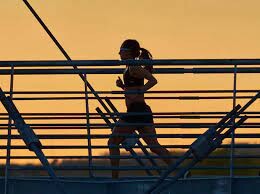
You Need Calories
Des says runners are famous for not eating enough to fuel their run. You must eat the right foods for energy. She says good nutrition will keep you strong and healthy and prevent setbacks. It is terrible for your body when you are out on a run, and your body struggles with energy. Not enough calories mean the training will force your body. But she also stresses eating poor nutritional food is better than an empty tank.
Nevertheless, try to eat natural, wholesome foods like vegetables, nuts, and fruits. Des says simplicity works best. Just make sure you get fueled up.
Learn How to Re-Fuel
Post nutrition for your run is essential and the basis of how your energy will replenish. Des says eating 15 to 20 minutes after your workout is critical. Eating a meal right after training is hard, so you must prepare. The most important thing to consume is a protein shake to start repairing muscles immediately. Along with protein, eat carbohydrates that absorb quickly to boost your energy levels. So, drinking a protein shake and eating carbs like bananas are simple and easy ways to refuel and recover.
Des says her stomach is still not ready to digest a full meal after her run. So, she says she will increase her protein when her stomach has recovered, which can take longer than an hour. Then, she plans her bigger sit-down meal of about 15 to 25 grams of protein. But, to refuel properly, you must understand digestion.
Experiment with Your Nutrition
There are so many different foods to eat and supplements to use. But not all foods are created equal and have the same effect for each person. Des says you must test different foods before running and know which ones work best for you. Experimenting and trial and error are your best ways. She says she has tested many foods to develop her nutritional plan over the years. For example, she says she can eat anything during easy runs. But before long training runs or races, she chooses simple foods to avoid the risk of longer digestion, which has the possibility of upsetting her stomach. An upset stomach equals slower runs.
The Key to Speed is Relaxation
Des says you must find the balance between pushing and forcing yourself. If you push yourself, you can stay more relaxed. And, if your force yourself, you create tension that will work against you running faster and longer. Also, the more relaxed you are, the more energy you conserve. If you are tense, it will eat up your energy. And you need that energy when mile 20 arrives to pick up the speed a bit.
For Aspiring Runners
Des says just be patient because running a marathon is a process. On day one, you will think and feel how hard it was to run. And that difficulty will continue for ten days. She mentions that you will want to and feel like quitting, but you must get over that hump. Over the hump is when your routine begins. Des states that getting in shape is hard, but it is awesome once you are in shape. Don’t throw yourself into it; ease into it so you will stick with it. Too much too hard, and you will quit.
Once Des crosses the finish line, her recovery begins. After every marathon, she does not train for two weeks to recover. After that, however, she will get into the pool to do passive recovery. Des says taking two weeks off is essential to heal her body and get excited to train for the next race.
“Sometimes you chase results, and you lose sight of the bigger picture. You need to step back and get back to enjoying the process of running versus chasing down a win.” – Des Linden
(09/03/2022) ⚡AMPby Jason Kelly
This Ultrarunner Outlasted a Fully Charged Tesla
Bobbie Balenger ran a staggering 242 miles in three days, covering more distance than an electric vehicle on a single charge.
Endurance runner Robbie Balenger set a world record last year when he completed 16 laps of the Central Park Loop Challenge, running a total of 100 miles in the course of a single day. His most recent ultrarunning accomplishment—attempting to run further than a Tesla electric car on a single charge—is the subject of a new documentary from Ten Thousand, as part of their ongoing Feats of Strength series.
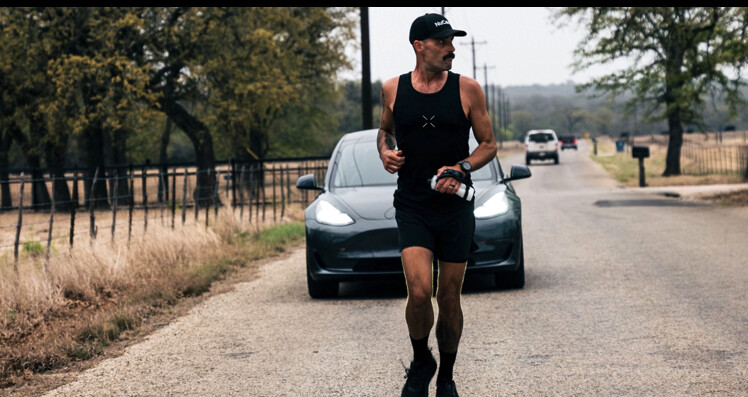
Firstly, the Tesla sets off from the same starting point where Balenger will begin his run, and is driven across the state of Texas until its battery is depleted, which occurs after 242 miles. Balenger then assigns himself 72 hours to surpass that distance on foot, a feat which he expects to be as challenging mentally as it will be physically.
It's just between my two ears, that battle," he says. "And that battle can get pretty lonely." However, he embraces the unpleasant aspects of the experience, like the physical discomfort, fatigue, and soreness which persist and only get worse as he covers more distance.
"I say that running is the inverse of a drug," he continues. "With drugs, you feel really good while you're doing it, then you feel like shit afterwards. With running, especially when you get into it, you feel like shit while you're doing it then you get to feel great afterwards."
At the halfway mark of 121 miles, Balenger pauses for an hour and 50 minutes of rest. He is then joined for the second stretch by a number of other endurance athletes, including Ironman triathlete Nick Bare and distance runner Hellah Sidibe, who run alongside him while offering encouragement.
46 hours in, at 5:30 a.m., Balenger takes another 50-minute nap before heading into his third and final day of running. "One of the things that draws me to these things is you are so aware of yourself and being alive while doing it," he says. "Through the pain, all of it, every sense is heightened."
After 76 hours 54 minutes, Balenger has run a total distance of 242.01 miles, outlasting the Tesla in terms of distance even if he went over his original time target of 72 hours. Ultimately, he says he is grateful to all of the people who helped him on his journey, and proud of himself and what he has accomplished.
"The bigger picture in life is just follow-through," he says. "You break through these versions of yourself, and tear it away and come out a new person, which I think happens for everyone as we evolve through chapters in life, but what's interesting is ones that happen so quickly... There's very few experiences in life where you look back three days later and you're like, I do not recognize that person."
(09/03/2022) ⚡AMPOlympic hurdler Devon Allen cut from Philadelphia Eagles roster
It has been a summer to forget for American champion hurdler Devon Allen. A dual-sport athlete, Allen balances separate careers as a track star and professional football player. Unfortunately, both of these endeavours have taken tough hits in the past couple of months. At the 2022 World Athletics Championships in Eugene, Oregon, in July, Allen was disqualified in the 110m hurdle final, and on Tuesday, he was cut from the NFL’s Philadelphia Eagles.
In 2021, Allen had an incredible season on the track. He won multiple races and charged to a fourth-place finish in the 110mH at the Tokyo Olympics, which marked his second appearance at the Games (he finished fifth in 2016). In April of this year, things got even better as he signed a three-year deal with the Eagles. (Allen was a wide receiver at the University of Oregon, where he also ran track, but hadn’t returned to the field since his final year of college in 2016.)


Just a few months after signing with the Eagles, Allen ran a world-leading PB of 12.84 seconds, and looked poised to medal at the world championships, which were being held at his alma mater in Oregon. He flew through the heats and semi-finals at Eugene’s Hayward Field, but when he got to the final, he was called for a false start and subsequently disqualified. Grant Holloway, Allen’s compatriot, proceeded to take the gold in 13.03.
There was a lot of controversy surrounding Allen’s DQ, as he left the blocks just a single thousandth of a second too soon (a difference undetectable to the naked eye). The starting blocks are equipped with electronic sensors to monitor each runner’s reaction time; the minimum allowable reaction time is 0.1 seconds, and Allen’s posted time was 0.099. It was the smallest of margins to ruin a star athlete’s dreams of a gold medal on home soil, but the officials had no choice but to accept the information provided by the sensors and disqualify Allen.
Now, just a month after that crushing blow, Allen has been cut from Philadelphia’s 53-man roster. He spent the previous month at the team’s training camp, which included a game against the Cleveland Browns in which Allen caught a 55-yard touchdown. His pre-season performances weren’t enough to earn him an official spot on the roster, though, and he will have to hope to be given a spot on Philadelphia’s practice squad.
(09/03/2022) ⚡AMPby Running Magazine
Police identify the man who poured rum into Mexico City Marathon water cups
In a wild video posted to social media, a man who does not appear on camera recorded himself as he poured white rum into sports drinks at a water station set up for participants at the Mexico City Marathon last Sunday. On Wednesday, the director of the Mexico City Institute of Sport, Javier Hidalgo Ponce, announced that police have identified the drink-spiker, who will likely face prosecution for attempted poisoning.
According to reports, the man was intoxicated, and spiked the drinks around 6 a.m. after leaving a nightclub. It is apparent in the video that he aimed to get the marathon runners drunk.

The water station was located near the halfway point on the course, when runners would have covered more than 21 km, and the consumption of undiluted alcohol combined with exertion could be dangerous. No runners drank the spiked drinks, since race volunteers who worked at the water station realized in time what had happened, and dumped out the alcohol.
Ponce blamed the incident on the Mexico City mayor’s office for allowing nightclubs to close so late.
More than 19,000 runners participated in Sunday’s marathon. Kenya’s Edwin Kiptoo won the men’s event, completing the course in 2:10, and Ethiopia’s Amane Beriso won the women’s race in a course record time of 2:25
(09/03/2022) ⚡AMPby Running Magazine
90-year-old man sets new 1500m world record
At a masters athletics meet in Western Australia on Thursday, Perth runner David Carr set a men’s 90+ 1,500m world record (the metric mile) of 7:32.95, breaking the previous record by five seconds. Carr’s world record-setting time equates to a speed of 12 km/h and a pace of around five minutes per kilometre.
Carr, who celebrated his 90th birthday in June, has now broken five 90+ world records this summer: the 1,500m, 3,000m (16:20.96), 5,000m (29:47.83), 10,000m (62:48.93) and 2,000m steeplechase (12:50.43).
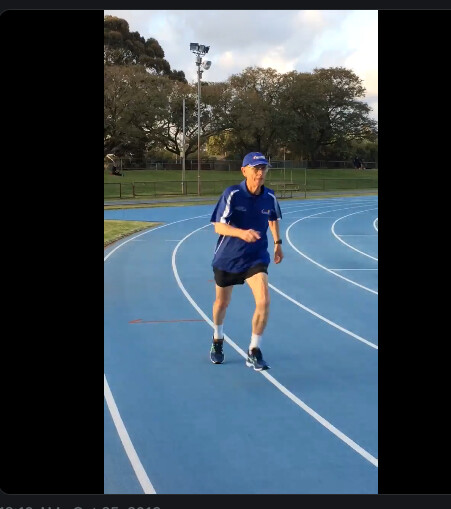
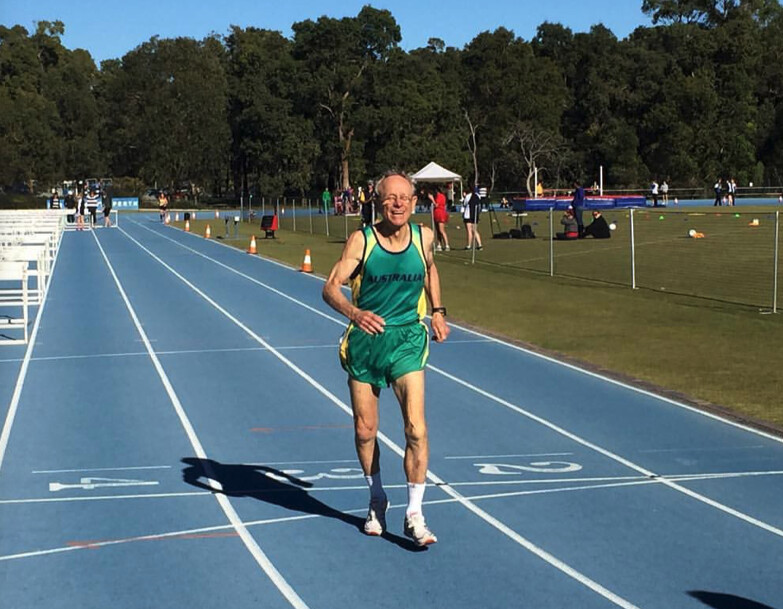
The previous 1,500m record, of 7:37.05, was held by Toshio Kamehama of Japan, set at the Japan Masters Championships in 2015.
According to an online age-graded running calculator, Carr’s graded time is faster than Hicham El Guerrouj’s 1,500m world record of 3:26.00. His age-graded result would be 3:16.00, which is remarkable.
Carr has been involved with athletics since 1948; he competed during his service in the Australian Navy and his time as a teacher. In 1974, he began competing in the masters division and went to his first Masters World Championship in 1980, since then he has won a healthy number of gold medals in middle distance events.
The Australian has had several attempts at the 90+ 400m and 800m record, but has come up short. Both the 400m and 800m 90+ records are held by Canada’s Earl Fee, (400m – 1:29.15, 800m – 3:34.93).
(09/03/2022) ⚡AMPby Running Magazine
Seven Pearls of Wisdom From a 103-Year-Old World Record Runner
Julia Hawkins insists we should all try new things. She would know—she started running at 100 and became an age-group ace by 101.
Julia is still running at age 106 as of 2022.
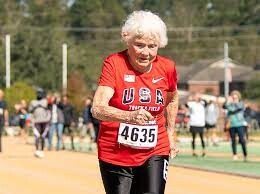
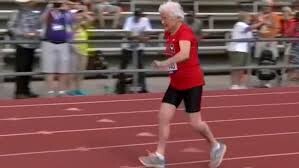
Julia “Hurricane” Hawkins is still taking the running world by storm.
In 2017, at age 101, Hawkins set the world record for her age group in the 100-meter dash at the USA Track & Field Outdoors Masters Championships. She completed the distance in a blazing 40.12 seconds, instantly catapulting herself to running stardom.
Now 103, this great-grandmother from Baton Rouge, Louisiana, is busy preparing for the National Senior Games. This biennial competition—open to runners ages 50 and older—is scheduled for June 14-25, in Albuquerque, New Mexico. Hawkins will throw the shot put and race the 50-meter dash, 100-meter dash, and potentially the 200-meter dash.
“As you get older you don’t usually break your own record. I’ll give it my best, I’ll tell you that,” said Hawkins about her upcoming opportunity to make history – again. In addition to the 100-meter world record, Hawkins holds the centenarian world record in the 60-meter dash (24.75 seconds) and shot put.
Throughout her 103 years on Earth, Hawkins has amassed a wealth of life knowledge, which she’s been kind enough to share with Women’s Running. Take a cue and a little bit of inspiration from these seven pearls of wisdom:
“I try to do as many new things as I can. I never say no to an invitation. I like to go to plays and musicals and church and all kinds of places,” Hawkins said.
Her enthusiasm for new experiences ultimately led Hawkins to start running—at the age of 100.
“I thought it would be neat to do the 100-meter dash when I turned 100. My first year I did the 50-meter dash to see how that would go, and I fell in love with it,” said Hawkins, whose children signed her up for the 100-meter dash, following her first qualifying 50-meter run.
“When you get old you should have a lot of passions. Passions keep you going. They make you want to live and want to do,” Hawkins said. “Get out there and make new friends and do something new every day.”
She also enjoys reading (Chariots of Fire is her top pick for runners), bird watching, and tending to her garden filled with bonsai trees.
In fact, while in her garden, she first suspected that she might have a talent for running. “I knew I could run because I’m always in the yard working, and when the phone rings, I go running inside to answer it,” Hawkins said.
She was born during World War I and grew up in much simpler times—no cell phones, internet, or television. She has learned to appreciate the little things in life.
“I’ve given books to a lot of my friends about magic moments—things that you get every day that you might miss. Sunrises, sunsets, hummingbirds, shooting stars, music, and friends’ comments,” Hawkins said. “All of those things that just touch you so much, just seeing, hearing and feeling it… I hope most people our age have more magic moments than senior moments.”
Her initiation to adventure came at a young age. When she was a baby, her family traveled by boat down the Mississippi River, from Chicago to Louisiana.
Her adventures have also taken her abroad. Right out of college, Hawkins taught four grades in a one-room school on a Honduran banana plantation.
“It was quite an adventure—I loved it. I went horseback riding, played golf, went in the jungle, and came home with a monkey,” said Hawkins, whose pet monkey was quite mischievous.
“He would let the clothes off of the clothesline and take shingles off the roof. He would jump on people’s heads and scare them to death. But he was cute and everyone loved him.”
Hawkins knows a thing or two about building a strong family unit. She was married to her college sweetheart, Murray Hawkins, for 70 years before he passed away in 2013, at the age of 95.
“He was in Pearl Harbor, working as a physicist to demagnetize ships, when it was bombed. He was out there that day getting ready [to demagnetize a ship] when they heard the first bomb land,” Hawkins said. “So we were married by telephone. He was afraid if he was gone too long, I might change my mind. But when I make it up, I make it up.”
Their four children—ages 71, 78, 68, and 66—are a huge part of her life and travel to most of her races.
“They always go with me and encourage me. None of them are runners, a lot of them are bikers, but they are all active. My daughter may be doing the swim relay this year at the Senior Games in Albuquerque,” said Hawkins, who is excited about the opportunity to compete alongside her daughter.
Even before she started running, Hawkins led an active lifestyle. She has bicycled all of her life, averaging about 5-10 miles each day. She is no stranger to the National Senior Games either. Hawkins, who primarily competed in the 5K and 10K bike races, amassed six gold medals over the course of 10 years of competitions.
Hawkins credits her good health in old age to maintaining an active lifestyle and keeping her weight down. But, she occasionally allows herself to splurge.
“Here in Louisiana we have such wonderful fish and oysters and shrimp and crabs. And I like all of them, and they are all better fried than any other way,” she said. “Every now and then I’ll splurge and do something like that.”
Even several years into her running fame, she is still shocked at what she has achieved.
“It absolutely floors me. I can’t believe. I just feel like… how did this happen to me?” Hawkins said. “They tell me that I’m an inspiration to others. That’s one thing that keeps me going. If I can be an inspiration to people and keep them a little more healthy and active, I’m proud to do it.”
(09/03/2022) ⚡AMPby Outside
American ultrarunner completes barefoot trek of California's John Muir Trail
American ultrarunner Kenneth Posner completed a 22-day trek along California’s 210-mile (337K) John Muir Trail (JMT) on Saturday. While Posner didn’t run the route, he is an avid trail runner and ultrarunner, and he almost exclusively runs barefoot. He didn’t take to the JMT to break any official records (the various fastest known time records for the JMT hover around two to four days), but rather for a personal challenge: to hike the entire trail without shoes.
Completing a trail completely barefoot may seem like a random goal to many people, but for Posner, it has been a years-long battle. As he explains in his blog, he made his first barefoot JMT attempt in 2020. “Barefoot is simple,” he writes. “Natural. Intense. Every step is an adventure.” That initial shot at the JMT resulted in Posner completing about 240K of it without any footwear. For the other 100 or so kilometres, he was forced to don shoes. “The terrain [on the JMT] was more difficult than I expected.”
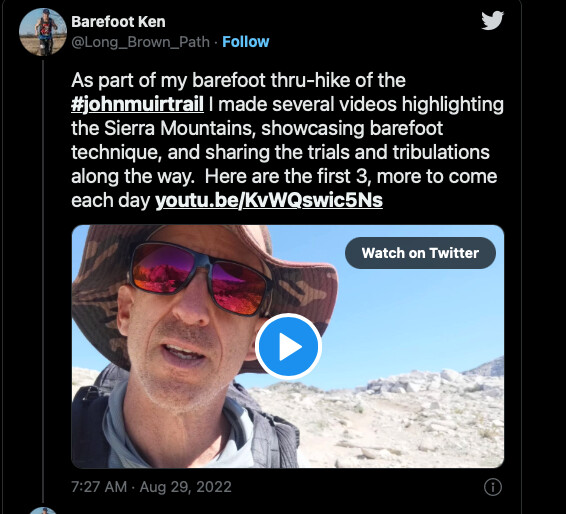
In 2021, he returned to the California trail, certain that he could finish the whole thing without resorting to shoes. Once again, though, he succumbed to the difficult terrain of the JMT, and he had to give in and put on shoes. Since then, he has been working toward the same goal, and this year, he managed to pull it off.
He set off on the JMT in early August, heading south from Yosemite National Park. The trek took him through mountainous terrain all the way to Kings Canyon National Park, where he finally reached the end of the JMT.
“Just completed the 210-mile #JohnMuirTrail entirely #barefoot, in 22 days,” Posner tweeted. “The sandy trails were lovely, the rocky mountain passes were challenging, and the gravel was quite difficult. Gave me new appreciation for how patient and tough our ancestors must have been.”
(09/03/2022) ⚡AMPby Running Magazine
Grant Fisher sets new America 5000m record
In the latest installment in one of the greatest seasons ever by an American distance runner, Grant Fisher ran 12:46.96 at the Memorial Van Damme Diamond League meet in Brussels on Friday to smash Bernard Lagat’s 11-year-old American 5,000-meter record of 12:53.60. Fisher was also in contention for his first Diamond League victory with 150 meters to go but had to settle for second as Kenya’s Jacob Krop, the Worlds silver medallist, pulled away to win in a world leading 12:45.71 (#6 all-time).
Fisher had near-perfect conditions to break the record. The temperature (low-70s) and wind (6 mph) were fine and wavelight technology was in play, but the most important ingredient was a trio of opponents committed to pushing the pace once the pacemakers dropped: Ethiopia’s Yomif Kejelcha and Kenyans Krop and Daniel Ebenyo.
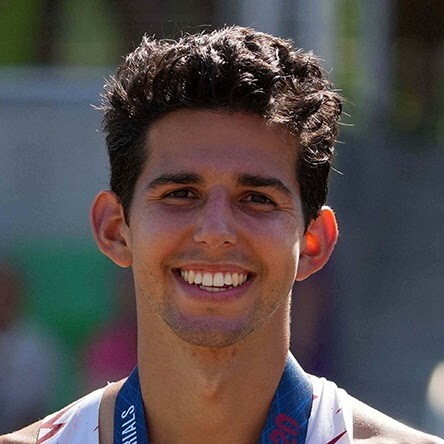
Kejelcha hit 3k in the lead at 7:41.74 (12:49 pace), by which point the four leaders had begun to separate. The gap between those four and the rest of the pack would only continue to grow as Krop took the lead with 1700 meters to go and kept his foot on the gas. Fisher, seeing Krop’s eagerness, was content to sit at the back of the group of four and get towed along to a fast time.

Just before three laps to go, Fisher went past a fading Kejelcha (who would end up dropping out) and moved into third. With a little bit more than 500 to go, a gap started to open up between Krop and Ebenyo and Fisher showed he had more in him as he went past Ebenyo and latched on to Krop. It was now a two-man affair.
Krop was keeping the pace scorching hot as the 4th to last lap was 61.43, the 3rd to last was 61.52 and the penultimate lap was 61.37. At the bell (11:47.9), it was clear Lagat’s American record was history. How fast could they go and who was going to emerge as the winner?
Fisher was ready to put up a fight but he was looking like a car with its engine maxxed out while Krop still looked incredibly smooth. Ultimately Krop broke Fisher with 100m to go to cap a 57.75 final lap (unofficially we had it 29.68, 28.06).
Fisher sprinted it in to finish just behind and break Bowerman Track Club Moh Ahmed’s 12:47.20 North American record in addition to obliterating Lagat’s AR. After running 12:53.73 for 5,000 indoors in February, 26:33.84 for 10,000 in March, and 7:28.48 for 3,000 in August, Fisher’s 12:46.96 tonight gives him four American records in a 2022 season that will go down as a year for the ages in the annals of American distance running.
(09/02/2022) ⚡AMPby Let’s Run
Scotland's Eilish McColgan withdraws from London Marathon debut
Scotland's Commonwealth Games 10,000m champion Eilish McColgan has withdrawn from next month's London Marathon because of a medical issue.
The 31-year-old has been having reactions to taking on fuel during long practice runs.
The issue has been identified as rebound hypoglycemia, which affects endurance athletes and leads to reduced blood sugar levels.
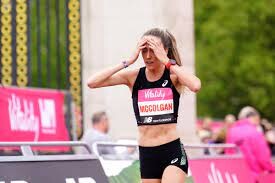
McColgan is now hoping to make her debut in next year's London Marathon.
McColgan's mother Liz won the London Marathon in 1996. This year's race takes place on Sunday, 2 October.
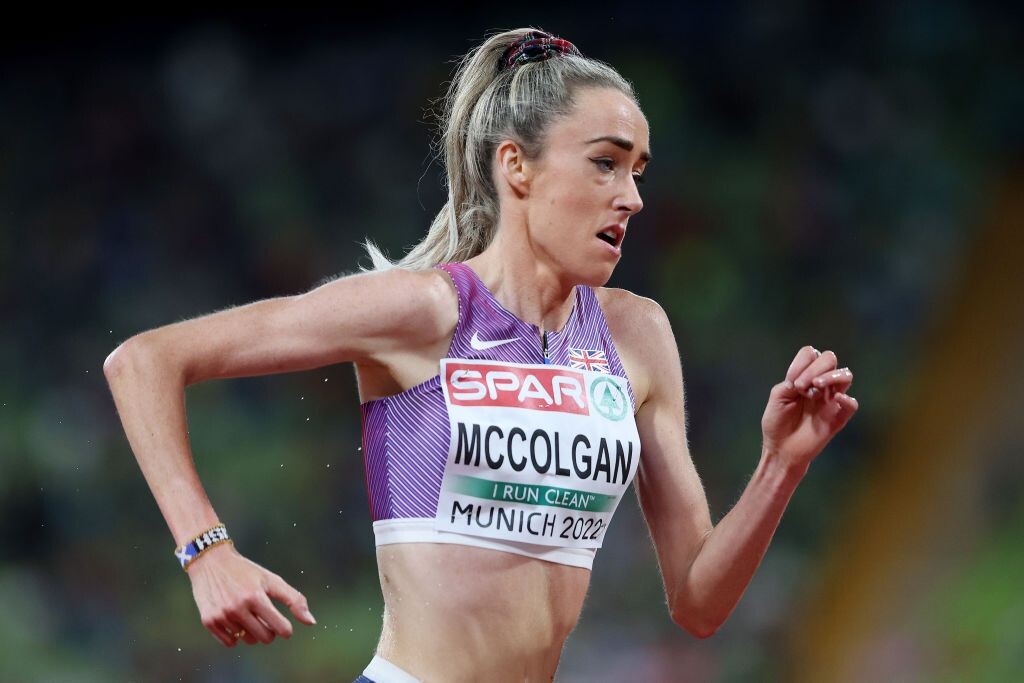
"When I do race my first marathon I want to be in the very best condition," said McColgan, who is racing in The Big Half in London on Sunday.
"When we started preparing for London earlier this year, it was clear something wasn't right on my long runs.
"Refuelling in a marathon is such an important part of the race to get right, so I have been practising this during my long runs and very quickly I've been experiencing spells of dizziness that have really affected me.
"I was relieved to learn it is not uncommon in athletes. I'm grateful to have a really supportive team around me who are working to find a fuelling solution for this issue and I'm confident that we will have done so in time for me to prepare properly for the 2023 London Marathon."
(09/02/2022) ⚡AMPby Athletics
TCS London Marathon
The London Marathon was first run on March 29, 1981 and has been held in the spring of every year since 2010. It is sponsored by Virgin Money and was founded by the former Olympic champion and journalist Chris Brasher and Welsh athlete John Disley. It is organized by Hugh Brasher (son of Chris) as Race Director and Nick Bitel...
more...Mo Farah and Eilish McColgan will lead 16,000 strong field at The Big Half
The Big Half – London’s community half marathon – returns on Sunday (September 4) with an exciting mix of world-class racing, fundraising and community celebrations.
Leading the elite fields will be recently crowned Commonwealth Games 10,000m champion Eilish McColgan, multiple Olympic and World Championships gold medalist Sir Mo Farah, and Paralympic star David Weir.
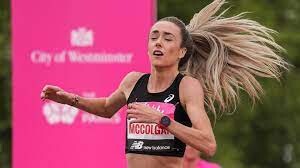
Strong domestic fields
McColgan will be up against the reigning The Big Half champion Charlotte Purdue in the elite women’s race. A exciting domestic field also includes European Championship and Commonwealth Games performers Samantha Harrison and Calli Thackery with Olympian Steph Twell and Welsh star Clara Evans expected to make it a very competitive race.
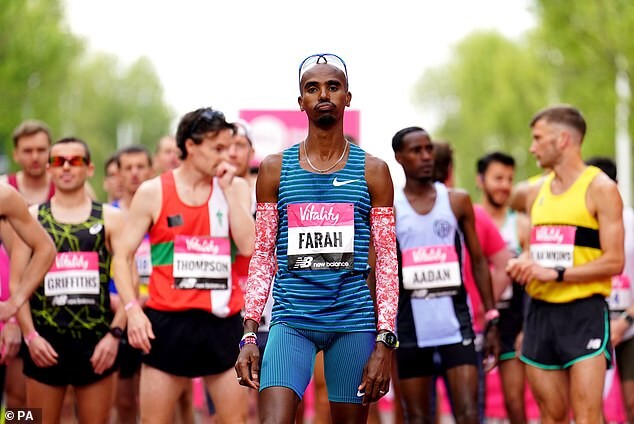
In the men’s race while two former winners, Jake Smith and Chris Thompson, will be among those challenging Farah in the elite men’s race. They will be joined by the winner of the 2022 Vitality 10000m, Jack Rowe, 2016 Rio Olympian Ross Millington and straight off the back of a 17th place finish at the European Champs mararthon Phil Sesemann.
Commonwealth Games marathon champion JohnBoy Smith will renew rivalries with Weir in the elite men’s wheelchair race, while Commonwealth Games marathon silver medalist Eden Rainbow-Cooper is the one to watch in the elite women’s wheelchair race.
The wheelchair races will start at 08:25 and the elite men and women plus the masses will get under way at 08:30. The action will be shown live across the BBC from 08:10 to 10:30 on BBC iPlayer, the Red Button and BBC Sport website, and on The Big Half Facebook page.
Festival of running
In addition to the elite races, there will be more than 16,000 The Big Half participants, including more than 3,000 people from community groups across London. Also included in The Big Half is the New Balance Big Relay, where teams of four can take on four legs of the 13.1-mile distance, and The Big Mile, a family-friendly event over the final mile of the route.
(09/02/2022) ⚡AMPby FR Newsdesk
The Vitality Big Half
Created by London Marathon Events Ltd, in partnership with Sported,The Vitality Big Half is a community running festival, taking place in London in March. This one-day event offers a host of running distances, from a challenging half marathon to a free one-mile course, as well as a family-friendly festival of food, music and activities. What’s happening? Take part with friends...
more...Shelly-Ann Fraser-Pryce challenges pole-vaulter Mondo Duplantis to 100m race
At the Brussels Diamond League press conference on Thursday afternoon, one of the great female sprinters of all time, Jamaica’s Shelly-Ann Fraser-Pryce, had a question for the pole vault world record holder, Mondo Duplantis: “Say, Mondo, how fast are you at the 100 meters … against me?”
At first, Duplantis was stunned by the question, and after some thought and hesitation, he said: “I would beat you!”
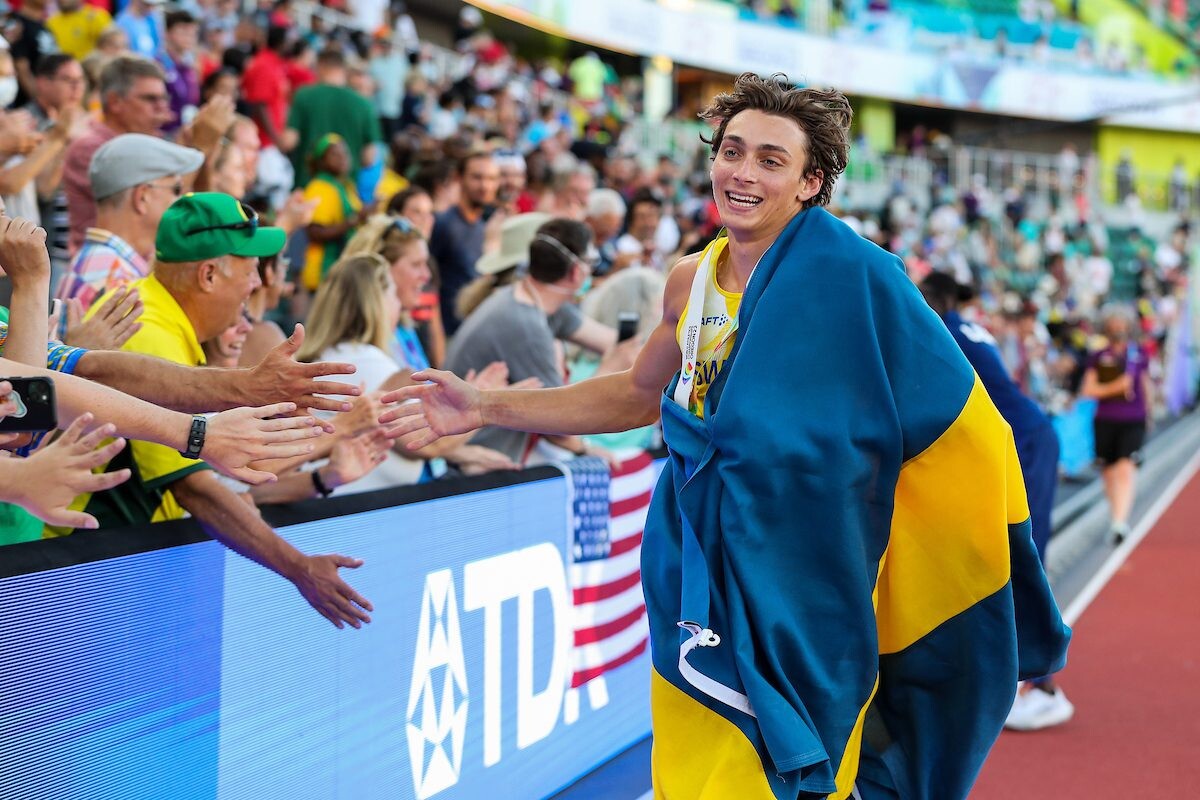
But Fraser-Pryce was skeptical. “How many metres do you have to run in the pole vault? 20 metres?” Duplantis replied that his run-up is 40 metres, and that he used to race the 100m in high school.
“But wasn’t that five or six years ago,” Fraser-Pryce replied.
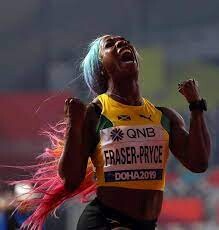
“But I’m much faster now than I was five years ago,” Duplantis responded.
According to the World Athletics database, Duplantis ran faster than Fraser-Pryce in college (at Louisana State University). He clocked a wind-aided time of 10.57 seconds (+2.1 m/s); Fraser-Pryce holds the faster ‘legal’ personal best of 10.60s.
Fraser-Pryce expressed disbelief, and made a bet with the pole vaulter that she would handily beat him over 100m. Duplantis accepted the challenge, which was followed by an official handshake.
The director of the Diamond League Brussels meet, Kim Gevaert, immediately responded to the challenge. “If you want, we can organize the 100m showdown for you next year at this meet?”
“Yes, next year in Brussels, Fraser-Pryce and I will race 100m. It has been arranged!” laughed Duplantis.
(09/02/2022) ⚡AMPby Running Magazine
The best unusual running tips for beginners
We all know the “big” running advice we all see: hydrate, dress for the conditions and make sure you’re wearing the right shoes. But what are some of the unusual bits of advice you’ve discovered over the years that have helped you improve or made running more enjoyable?
Here are a few small tips you should consider.
Chill out at crosswalks
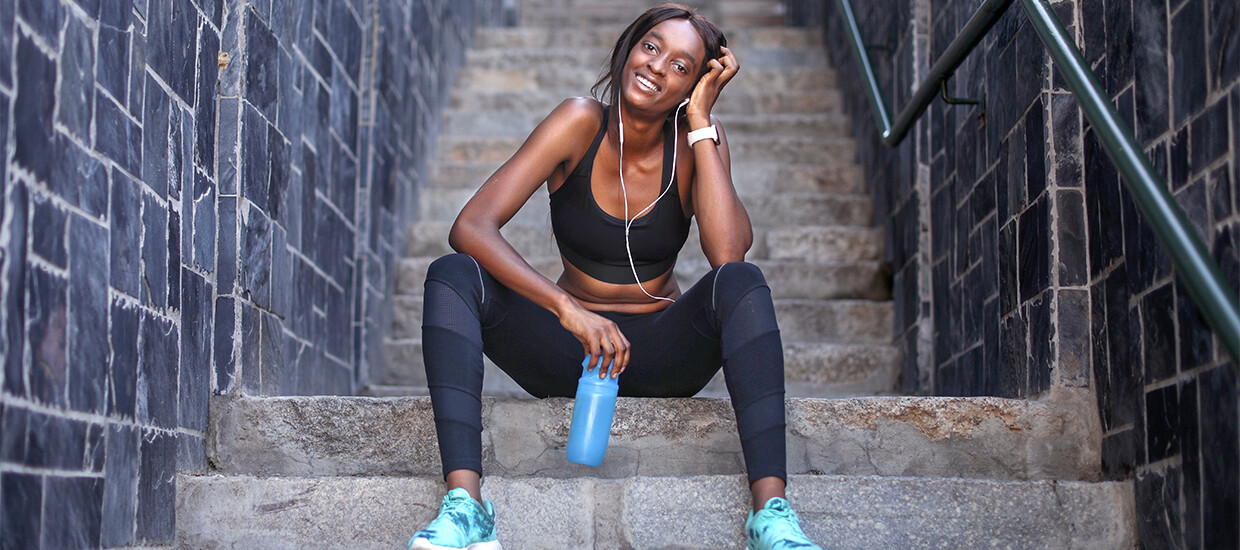
Runners, there’s no need to keep running on the spot when you’re stopped at a red light. Chill out, walk around or stand there and enjoy the 30 seconds of rest; it won’t make your training any less effective.
Plan your route around bathrooms
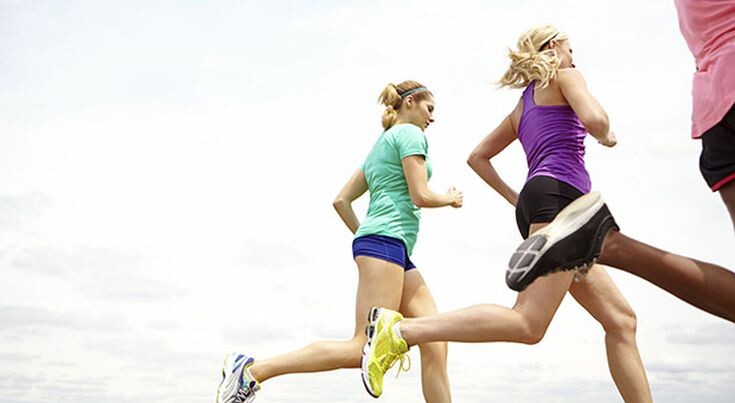
There’s nothing worse than being out in the middle of nowhere and having to go to the bathroom. In moments like this, you may think your run has gone to (you know what), but planning to make sure there are at least one or two bathrooms on your route can be a lifesaver.
Add vinegar when washing your workout clothes
I know it sounds strange, but if you add vinegar to the main wash it will help remove soap residue and the bacteria in your workout clothing. Using vinegar helps reduce odours and soften clothes without harsh chemicals. Vinegar is inexpensive, and it’s safe to use in both standard and high-efficiency washers.
Wrap your keys
Are you sick and tired of carrying your keys or having them jangle and make the noise of a symphony in your pocket? Try wrapping your keys with a hairband or a rubber band to prevent them from bouncing around on your run.
Your miles still count if they aren’t on Strava
Although you may not get as much recognition from your peers, your body will still count your morning 5K run.
Similarly, your body doesn’t care or know the difference between 9.94 km and 10 km on your GPS watch. Training effects are not so precise that a tenth of a kilometre will affect your ability to win races.
(09/02/2022) ⚡AMPby Marley Dickinson
How Keira D’Amato became America’s best ever woman marathoner
Keira D'Amato is currently at the top of the American women's distance running scene. She holds multiple American records — in the 10-mile and the marathon, the latter of which had stood for nearly 16 years before D'Amato smashed it in January — and has racked up win after win this year at everything from 10Ks to 7 milers. But just two years earlier, the real estate agent and mom of two was mostly unknown, quietly putting in miles near her home in Midlothian, Virginia.
That's not to say D'Amato's success came out of nowhere — before starting her real estate career and her family she was a standout runner, a four-time All-American, at American University in Washington, D.C.
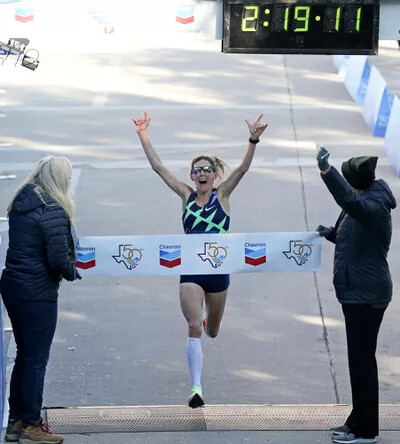
"My life then was to eat, sleep, breathe and run. That was all I knew and all I wanted to do," D'Amato, 37, tells PEOPLE. "It was my whole world." She planned to pursue professional running after graduation, but her dreams were quickly derailed by a series of injuries. When her insurance denied a needed ankle surgery, D'Amato was "kind of forced out" of the sport.
"It was a weird breakup. It really felt like running was breaking up with me," she says. "It was heartbreaking. All of sudden I was Keira the runner who doesn't run."
D'Amato ended up meeting her husband Anthony, getting her real estate license and having two kids, Thomas, now 7, and Quin, 5. Her running at that time was very casual — she picked it up again to get back in shape after the two pregnancies and for a dose of sanity while at home with young kids and a military husband, who at times was deployed for more than a year.
"That was a really, really hard time for me," she says. "Just two kids under 2 and being at home alone. I felt lonely and I felt a little trapped." D'Amato would hire a babysitter for an hour, just so she could get out and run.
"I needed something that was mine and that I controlled and something that was just slow and peaceful. Then as soon as I walked back in the door, I was feeling really proud that I'd accomplished something for me that I could go right back to being a mom," she says. "It just helped me cope during that time."

D'Amato also started jumping into a races — a local 5K, or a long weekend in Nashville with a friend for a half marathon. "It was totally for fun and it taught me how to love running without needing to be fast or have goals."
Her real return to running started as a prank — she kindly gifted Anthony with an entry to the 2017 Shamrock Marathon for Christmas one year, and feeling bad about it, decided to sign herself up too.
Thinking she'd run it in around 3 hours and 30 minutes (an impressive time for the average runner, but nothing outstanding), D'Amato ended up easily covering the 26.2 miles in 3:14:54. Eight months later, she decided to train for the Richmond Marathon, and shockingly finished in 2:47:00 — two minutes short of the Olympic Trials qualifying time.
"That's when the fire started because I was like, 'Oh, two minutes in a marathon. That's four seconds per mile. I can do that.' "
With the help of her old college coach, Scott Raczko, D'Amato qualified, and then came in 15th at the 2020 Olympic Trials, ahead of around 450 other women, including several professional runners. A few weeks later, the COVID-19 pandemic shut down the world, and races.
But for D'Amato, "running wasn't canceled," she says. "I think a lot of other pros thought, 'Well, there are no races. This is a really natural time to take a break.' For me, I'm like, 'Hey, they're taking a break. I'm putting the pedal to the metal and I'm going to really catch up.' I trained really, really hard during COVID."
She started making some headlines after running a speedy 5K on her local track, and then even more in Nov. 2020 after she organized a 10-mile race where she broke the American women's record. Four months later, D'Amato signed her first-ever professional running deal with Nike.
"That was really cool," she says. "I think for Nike to bet on someone that wasn't a right-out-of-college national champion, it was some mom in a smaller town — for them to see what I saw in myself is really powerful."
D'Amato had already been relying on Nike for her running shoes, and appreciated that unlike other brands that require their runners to join teams in Arizona or Oregon, she could continue training at home in the Richmond area.
"They support people like me that are trying to be the best in the world, but they're also really supportive on an individual level of everyone finding their own best," she says. "They really build up the sport from youth programs to professional athletes and everything in between. I feel like they've created shoes for all runners to be their own best."
D'Amato ticked off more goals from there, coming in 4th at the Chicago Marathon — her first World Marathon Major as a pro — and winning the 2021 U.S. Women's Half Marathon title.
Then, in Jan. 2022, she went after the American marathon record, a record that had stood since 2006, despite years of the top female marathoners in the country trying to bring it down. It was D'Amato, on a windy day in Houston, who was finally able to do it in a time of 2:19:12.
"On the starting line that day, I was thinking I'm either going to get the record or I'm not. If I get it, that would be wild, but if I don't, I'm going to be right where I am right now and that's cool too. I'm happy," she says.
D'Amato thinks that the way she found her way to professional running — going from a standout college career to her "elaborate halftime show" to getting back in the game — helped her to her record-breaking runs.
And D'Amato isn't done now that she has the American record. She got to knock off another goal in June when she got a last-minute call-up to compete at the World Track and Field Championships and donned a USA uniform for the first time.
Despite having just 17 days to train for a marathon (D'Amato had been racing speedier 10Ks when she got the ask to join the team), she went out fast and finished eighth in the world. In September, she'll toe the line at the Berlin Marathon — known for its flat and speedy course — and has her mind set on lowering the American record again.
"I'm in this really beautiful spot where I feel like I have nothing to lose, but just everything to gain," she says. "I'm putting everything out there, my heart, my soul, my running shoes and just going for it with every opportunity."
(09/01/2022) ⚡AMPby Julie Mazziotta (People Magazine)
Camille Herron’s breakfast of champions, Fuel up and go chase a world record (or maybe a PB)
I’ll try any running (or eating!) advice Camille Herron has to offer. The multiple world-record holder continuously levels up, finding new ways to improve her running and racing. Herron is in South Africa running the downhill course of the legendary Comrades Marathon this weekend, an 89K ultra that she won (on the uphill course) in 2017.
She shared with us the pre-run breakfast she swears by. If you haven’t heard of teff, you aren’t alone; while Westerners are still learning about the tiny, protein-rich grain, it’s been a staple in Ethiopian cooking for thousands of years. Teff has a mild, nutty flavor. Herron substitutes it for oatmeal, and says it’s been a “game-changer.”

Camille Herron’s breakfast of champions
Ingredients
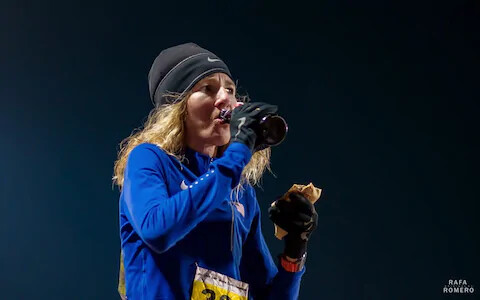
4 Tbsp of teff
1 Tbsp ground flax seed
1 Tbsp chia seeds
Handful of cut walnuts
Handful of blueberries
1 tsp camu powder
1 tsp bee pollen
1 Tbsp non-fortified nutritional yeast
1 to 2 Tbsp honey
Pinch of salt
Directions
Add hot water, stir, and let sit for 10 to 15 minutes. Add or substitute any nuts or fruit that you enjoy. Herron says teff has been a pre-run fuel revelation for her: “it doesn’t retain as much water as oats, so it doesn’t feel heavy on the gut pre-run.” She adds, “it feels like it stabilizes blood sugar for a long time.”
1 Tbsp wheat germ
(09/01/2022) ⚡AMPby Running Magazine





